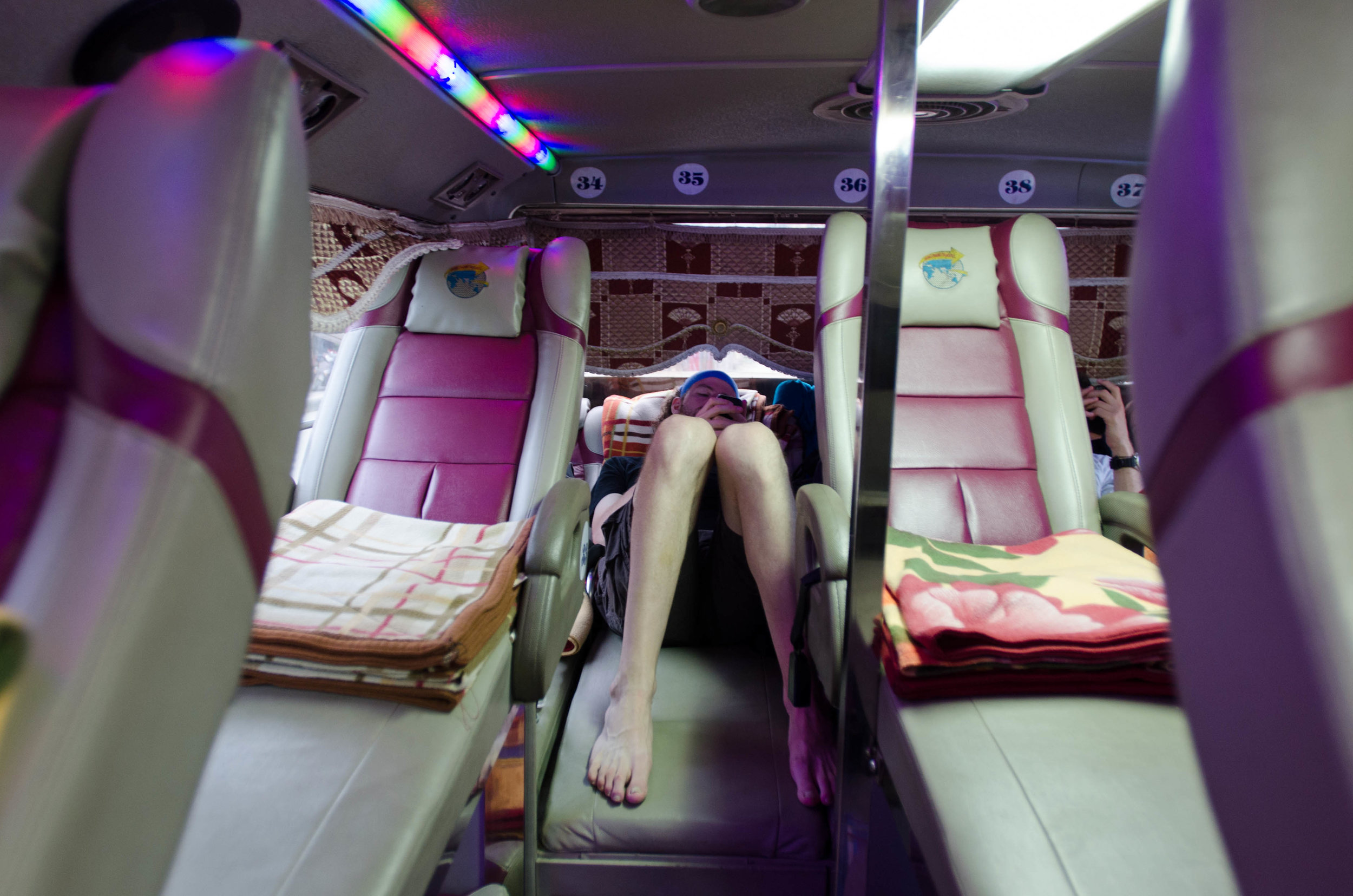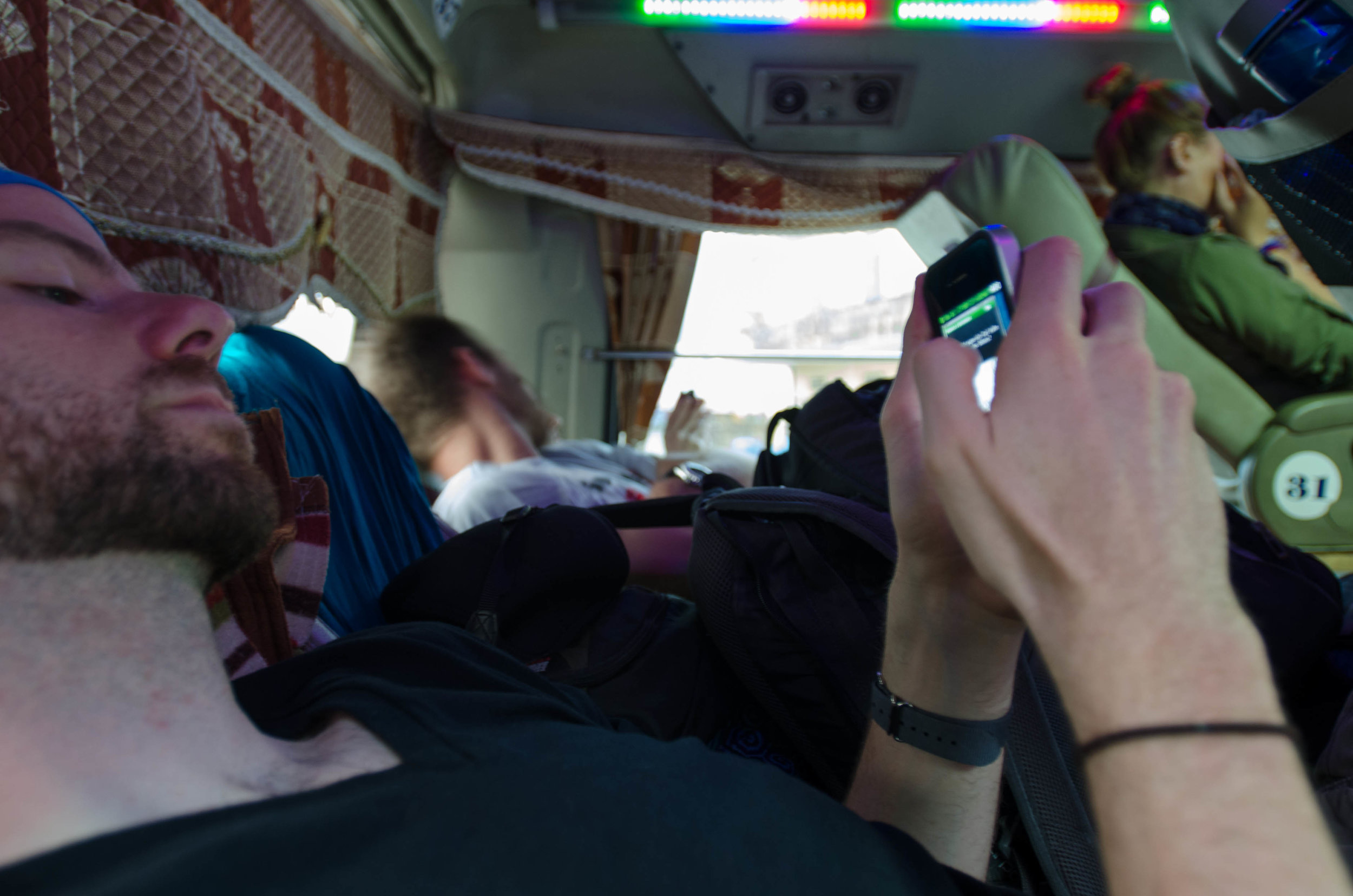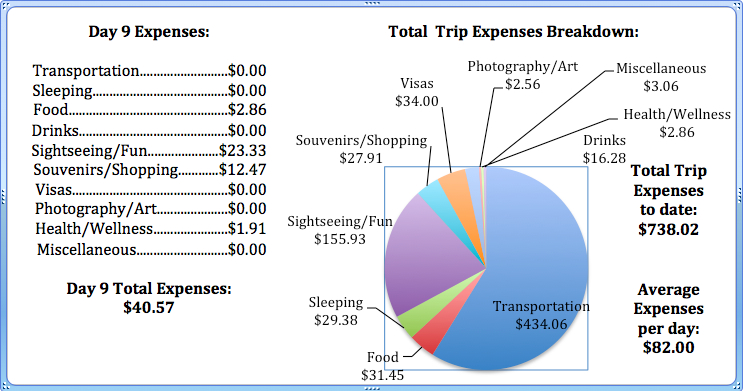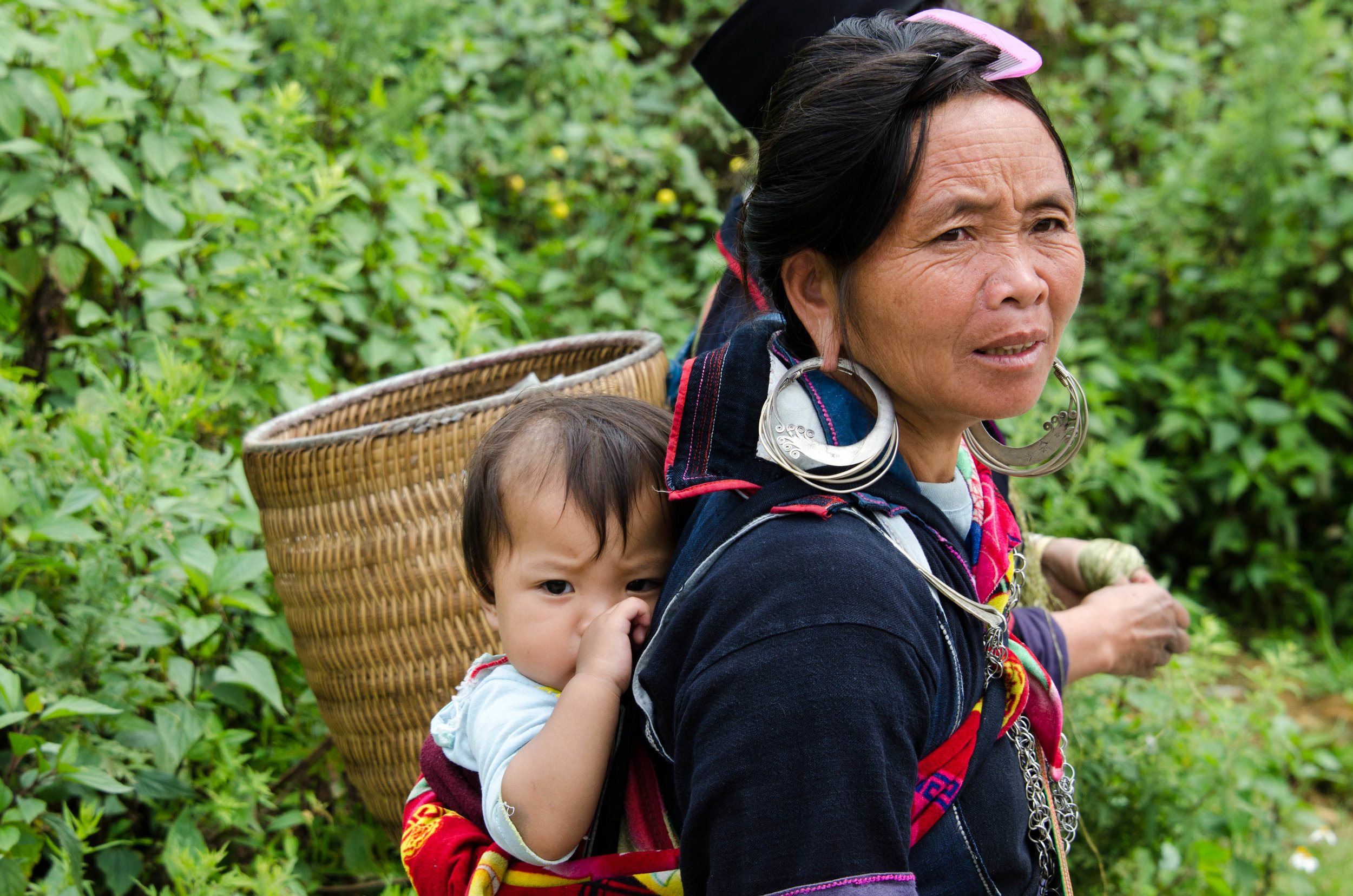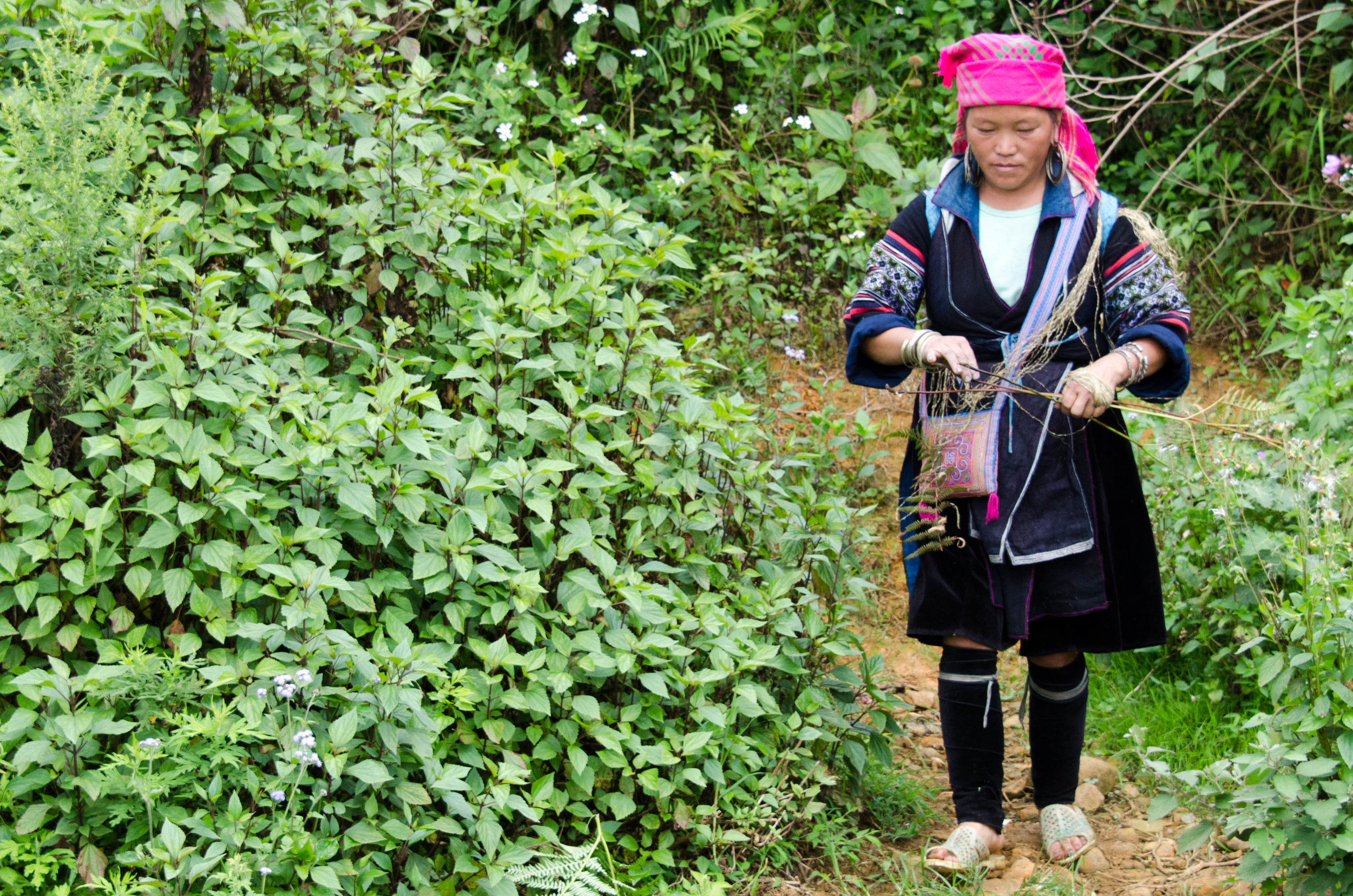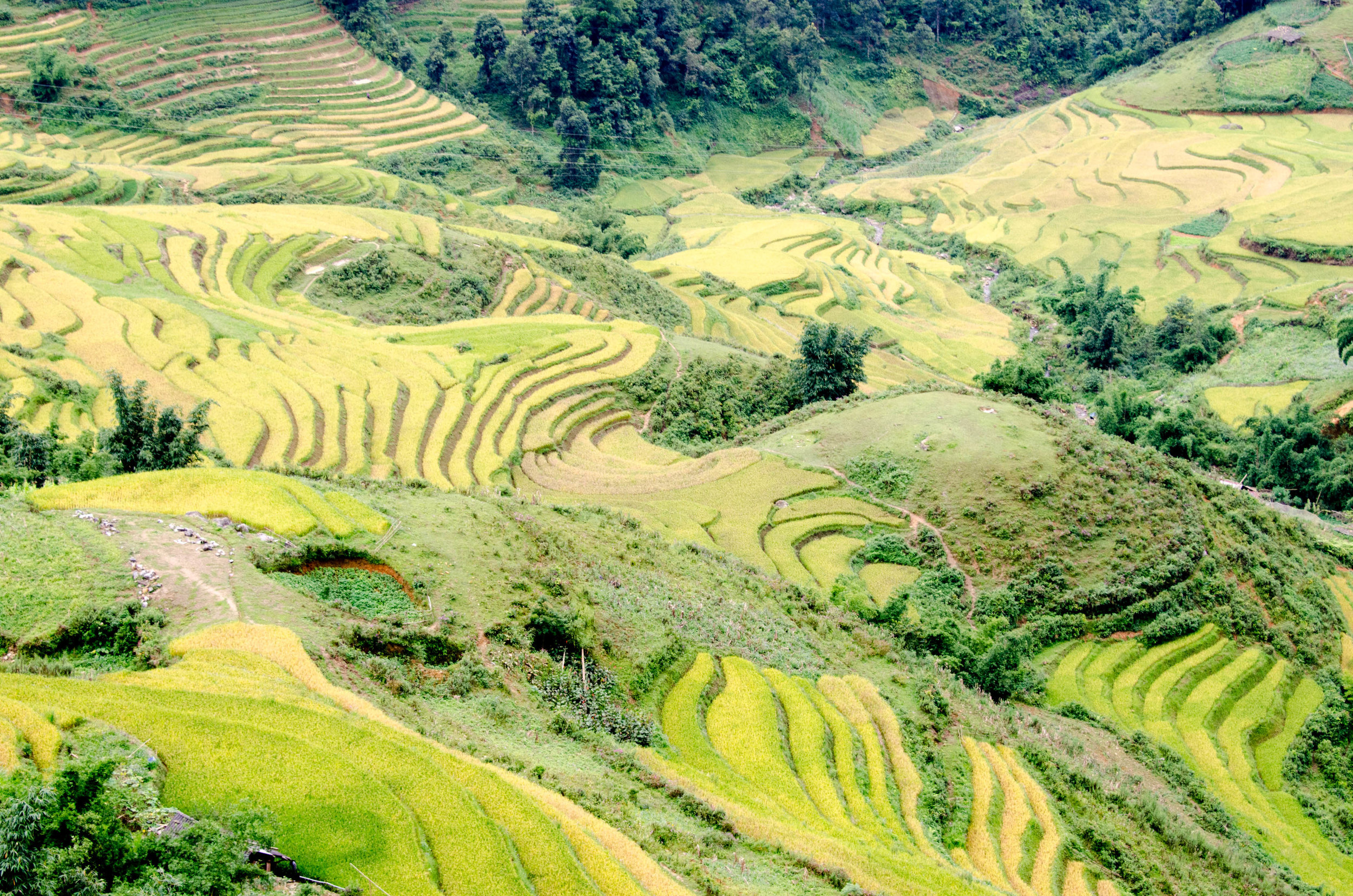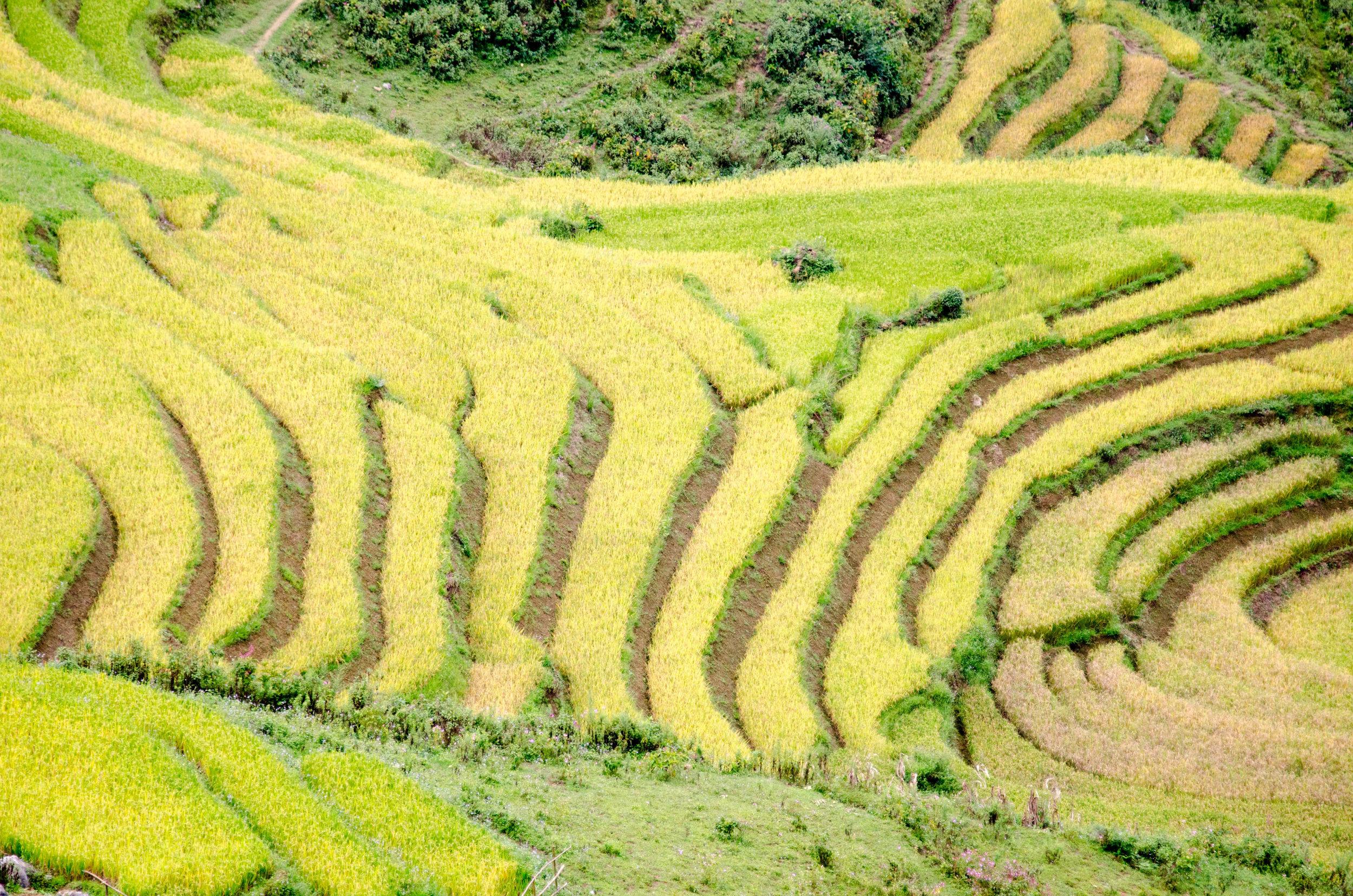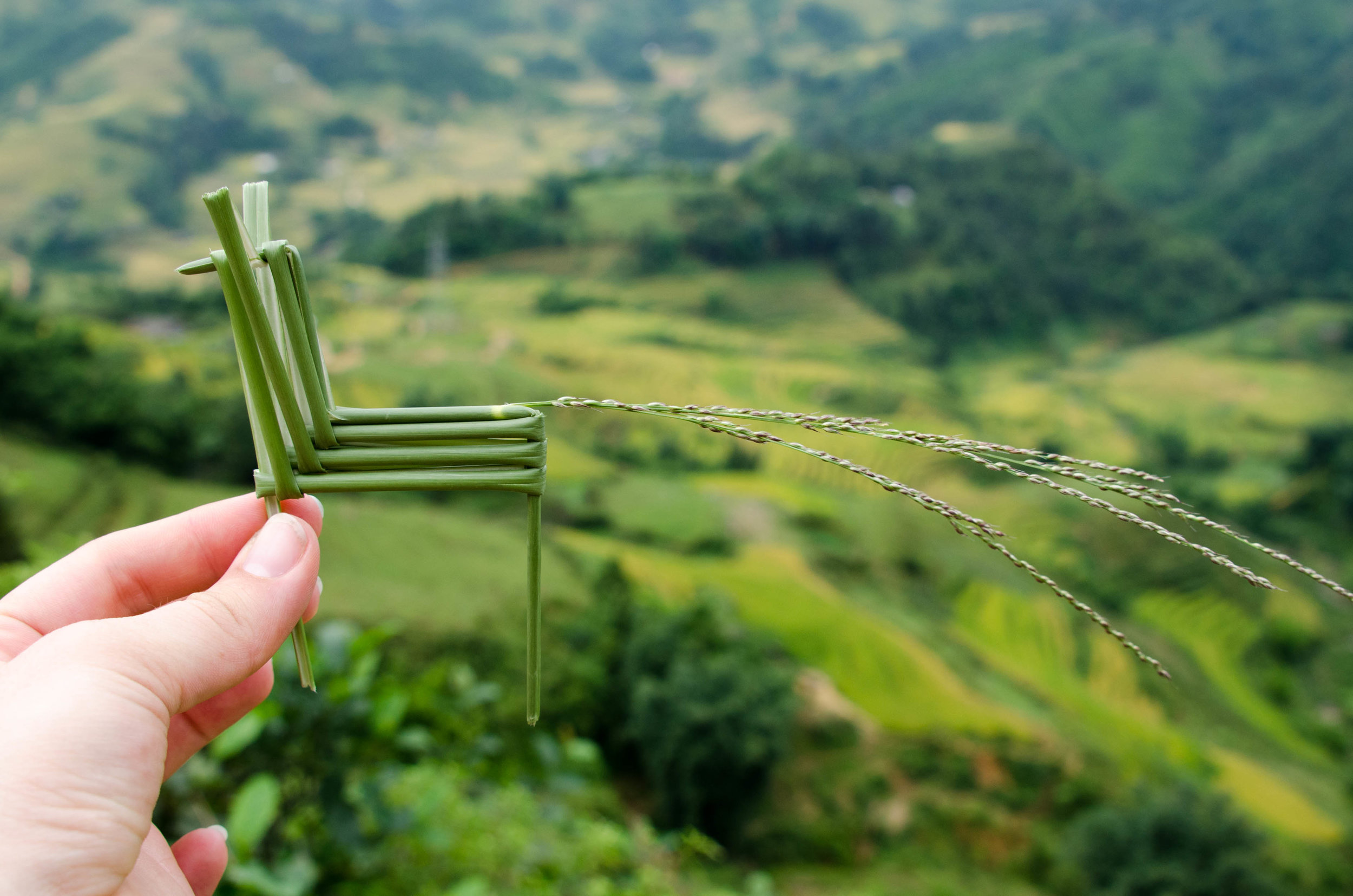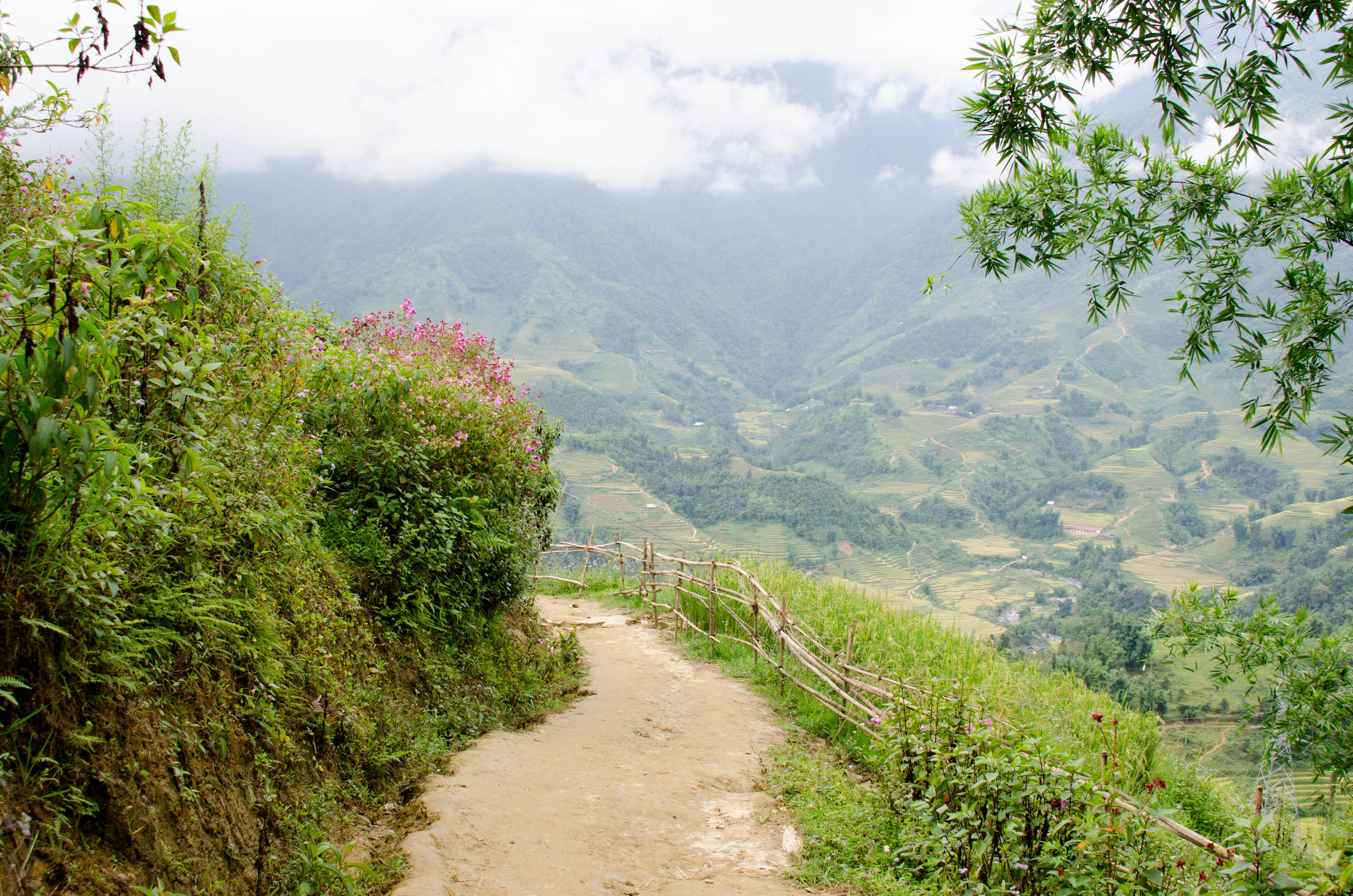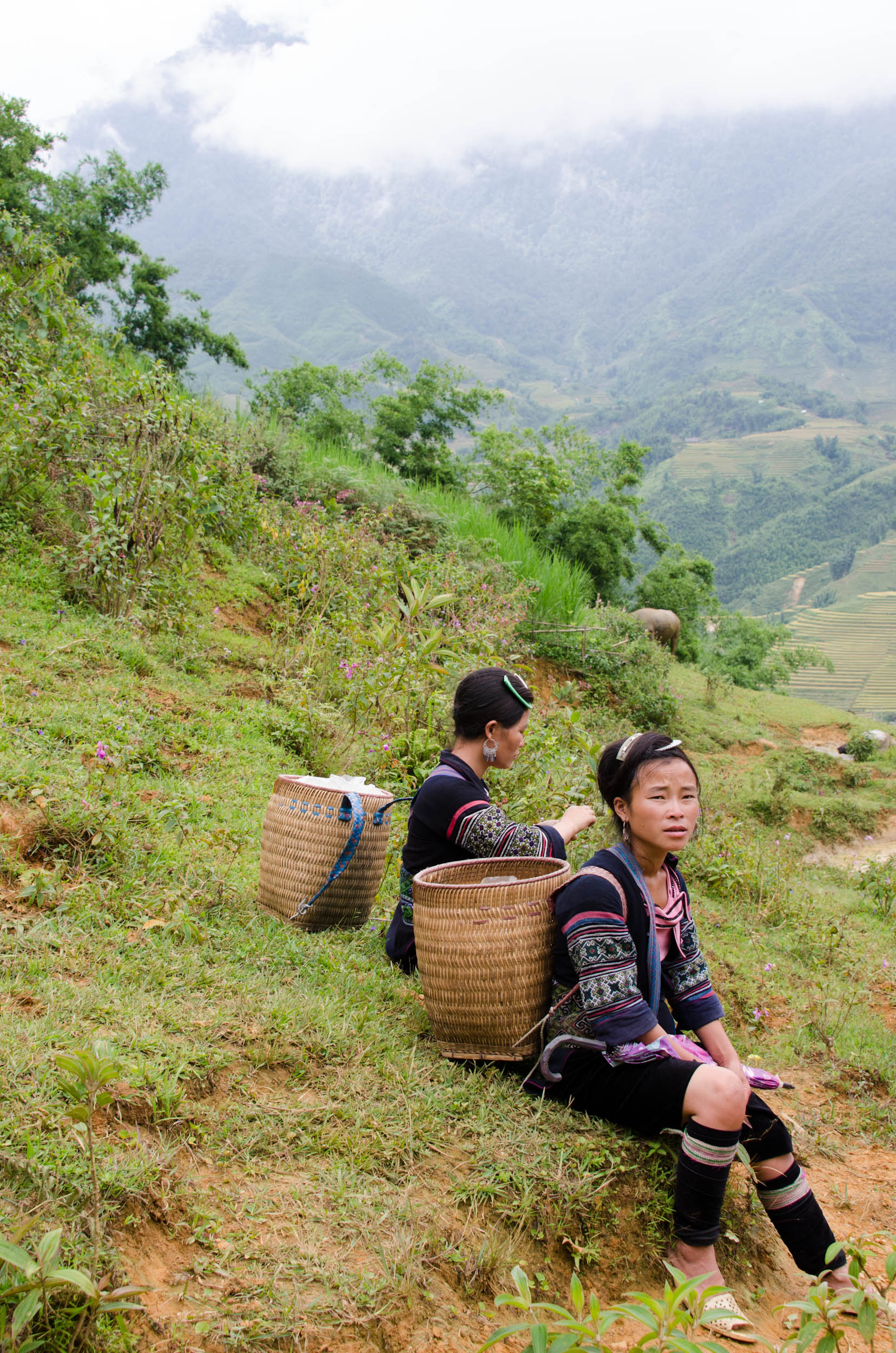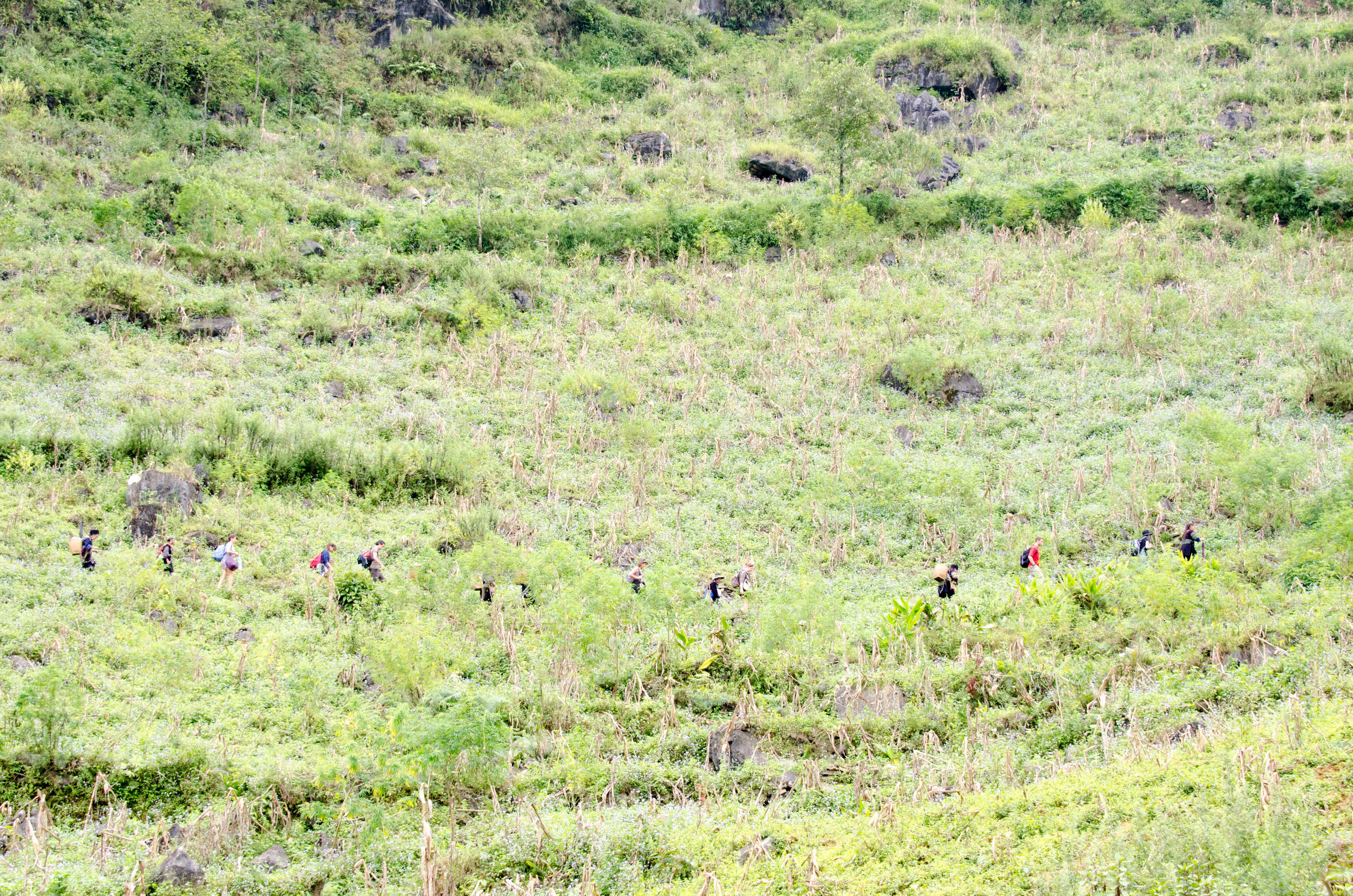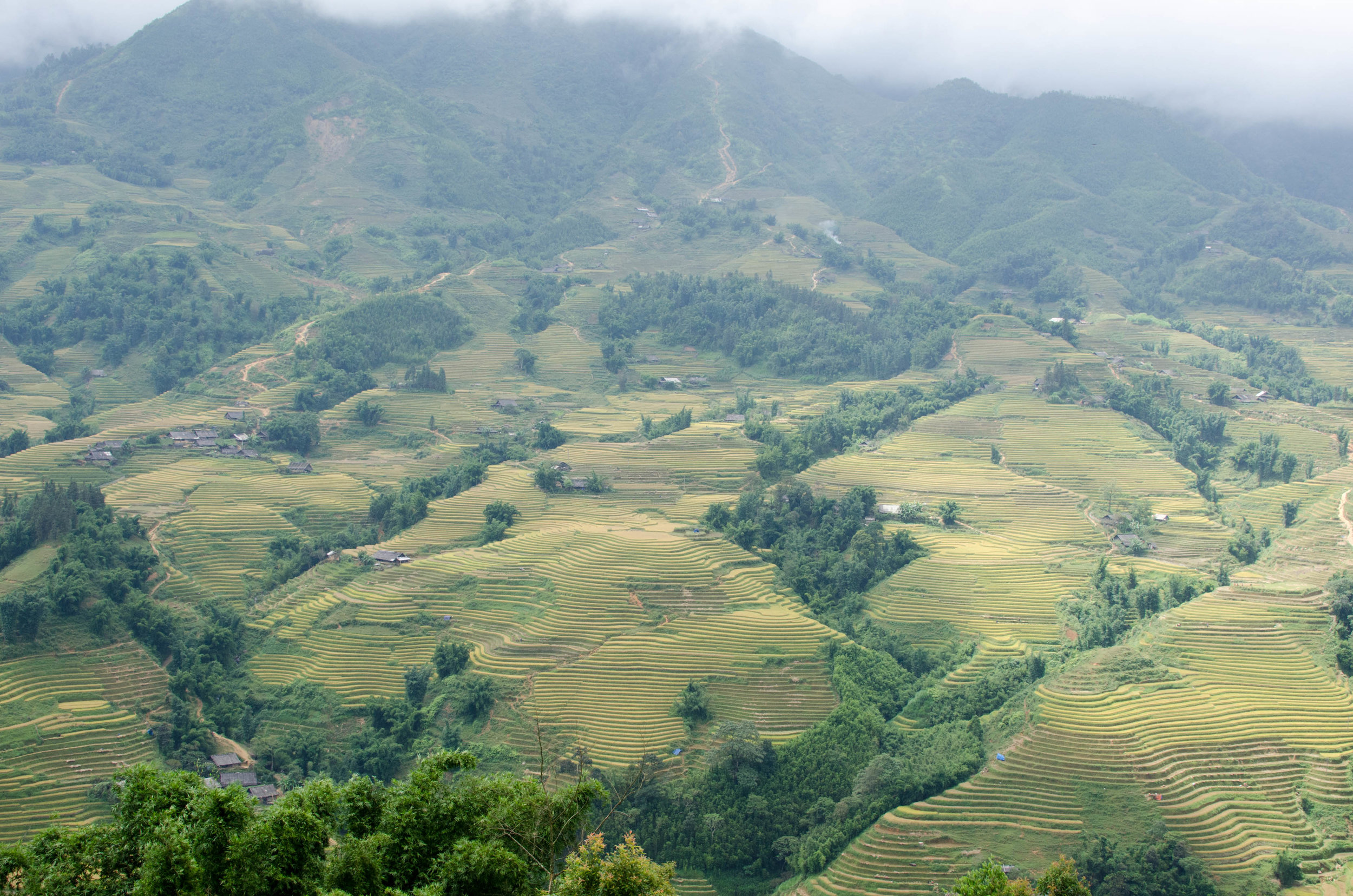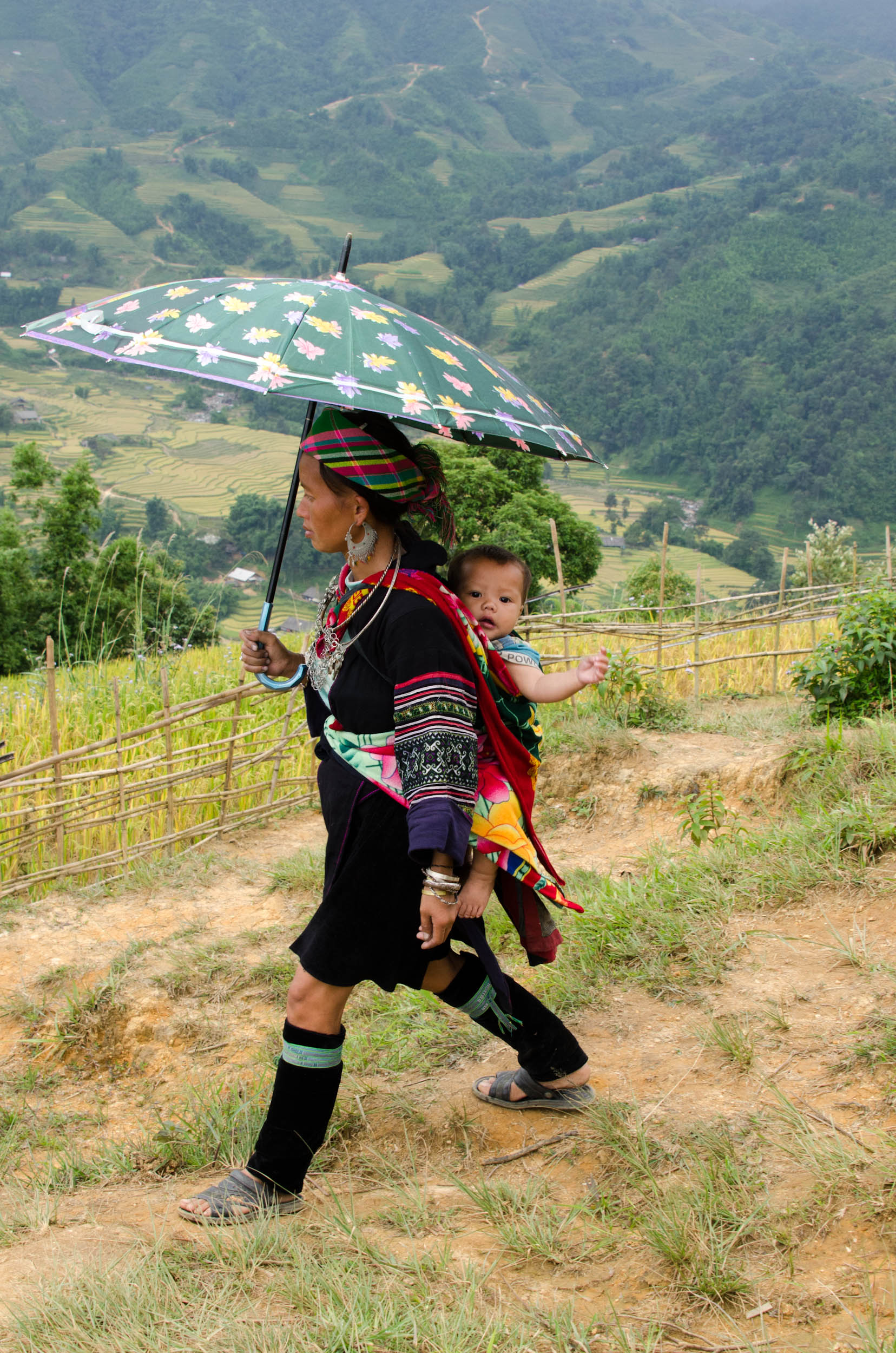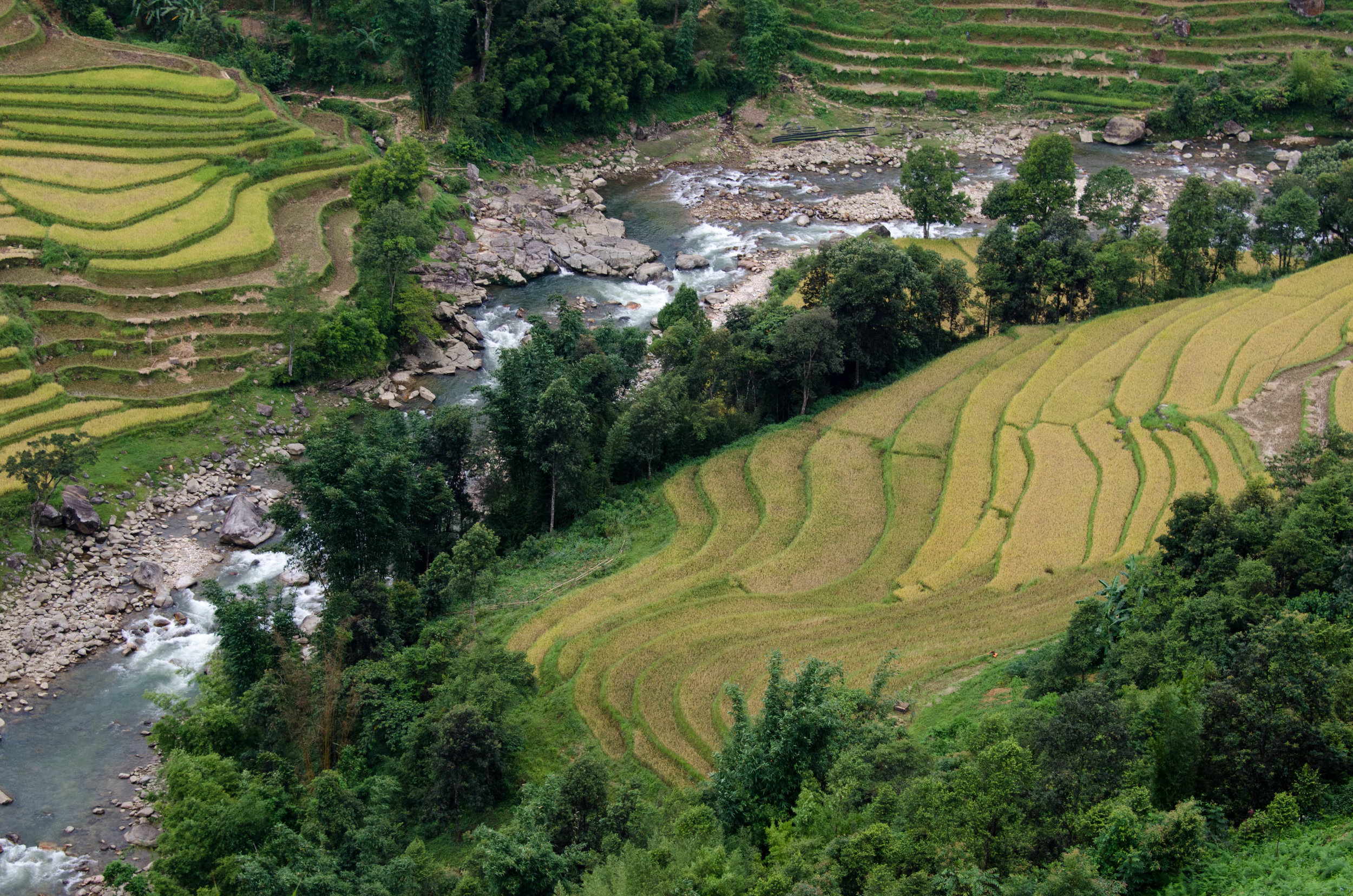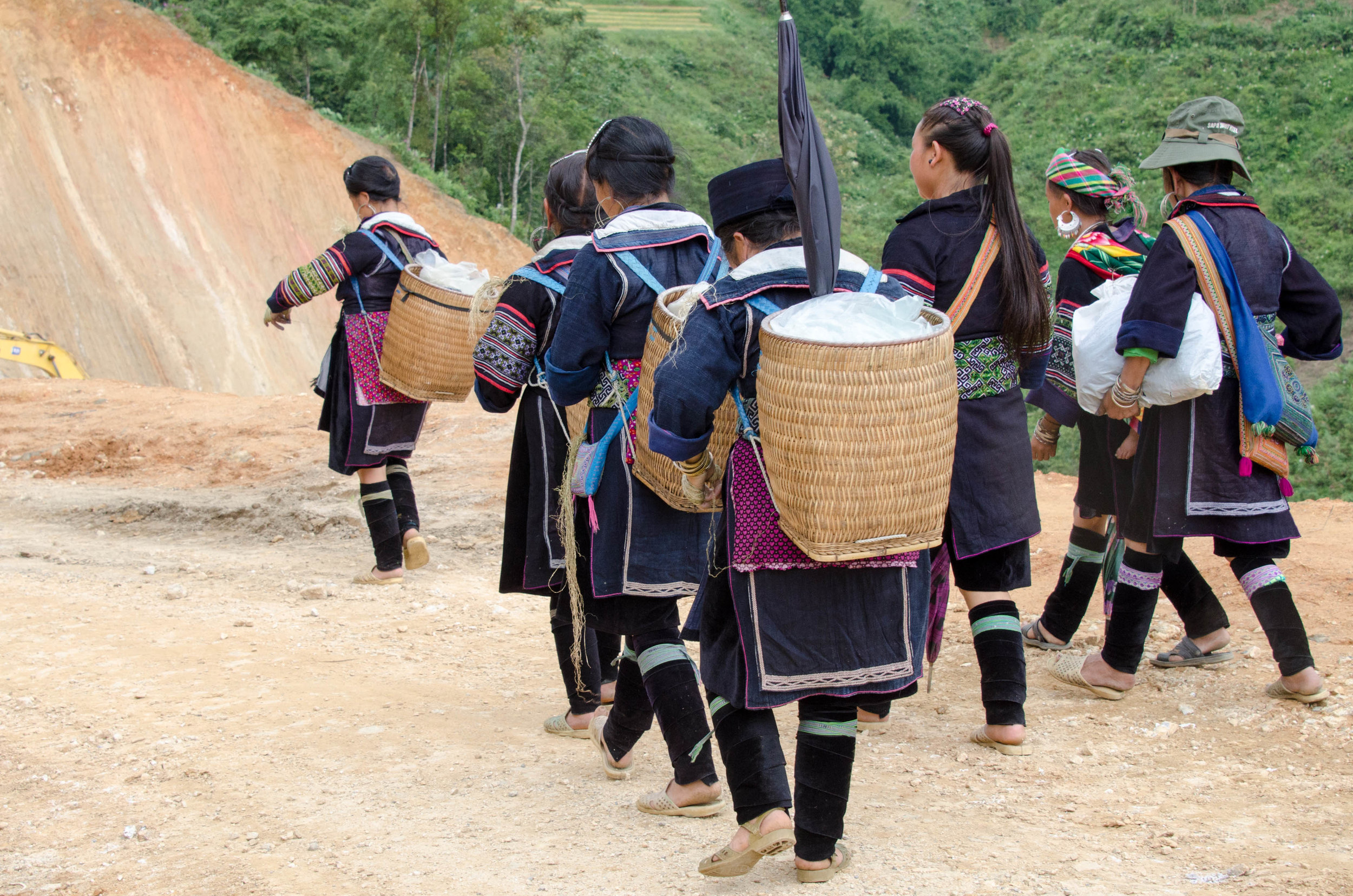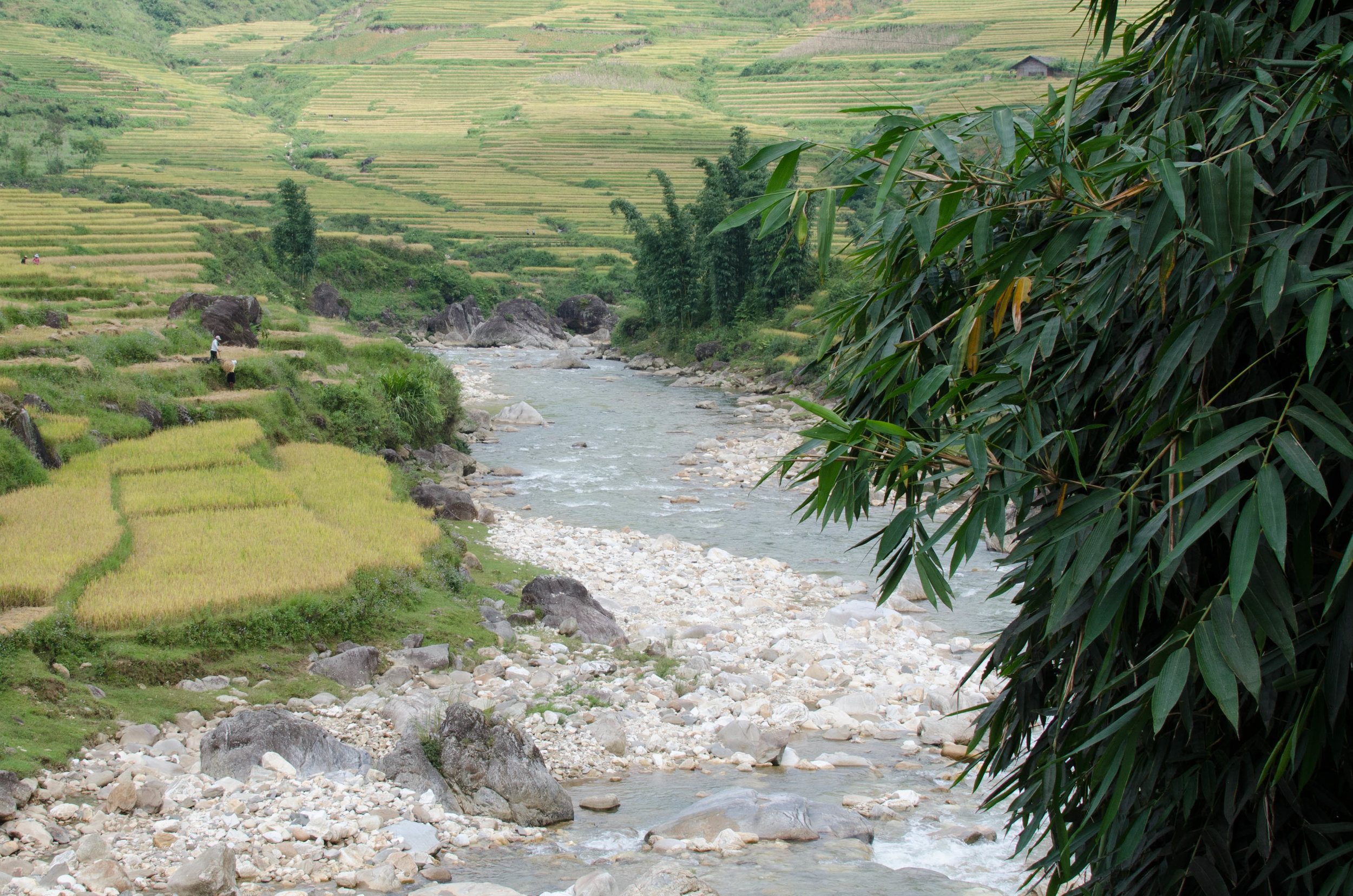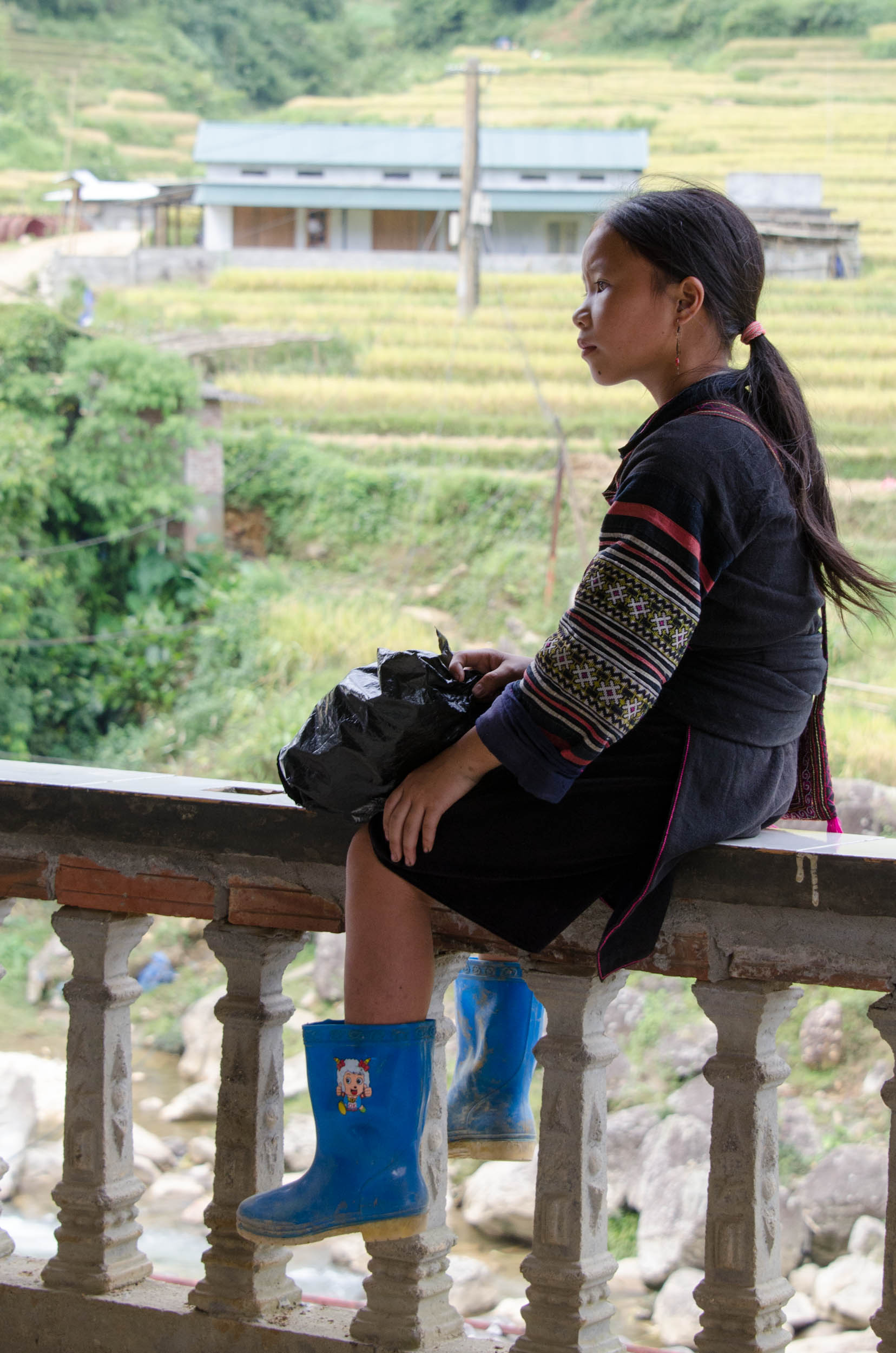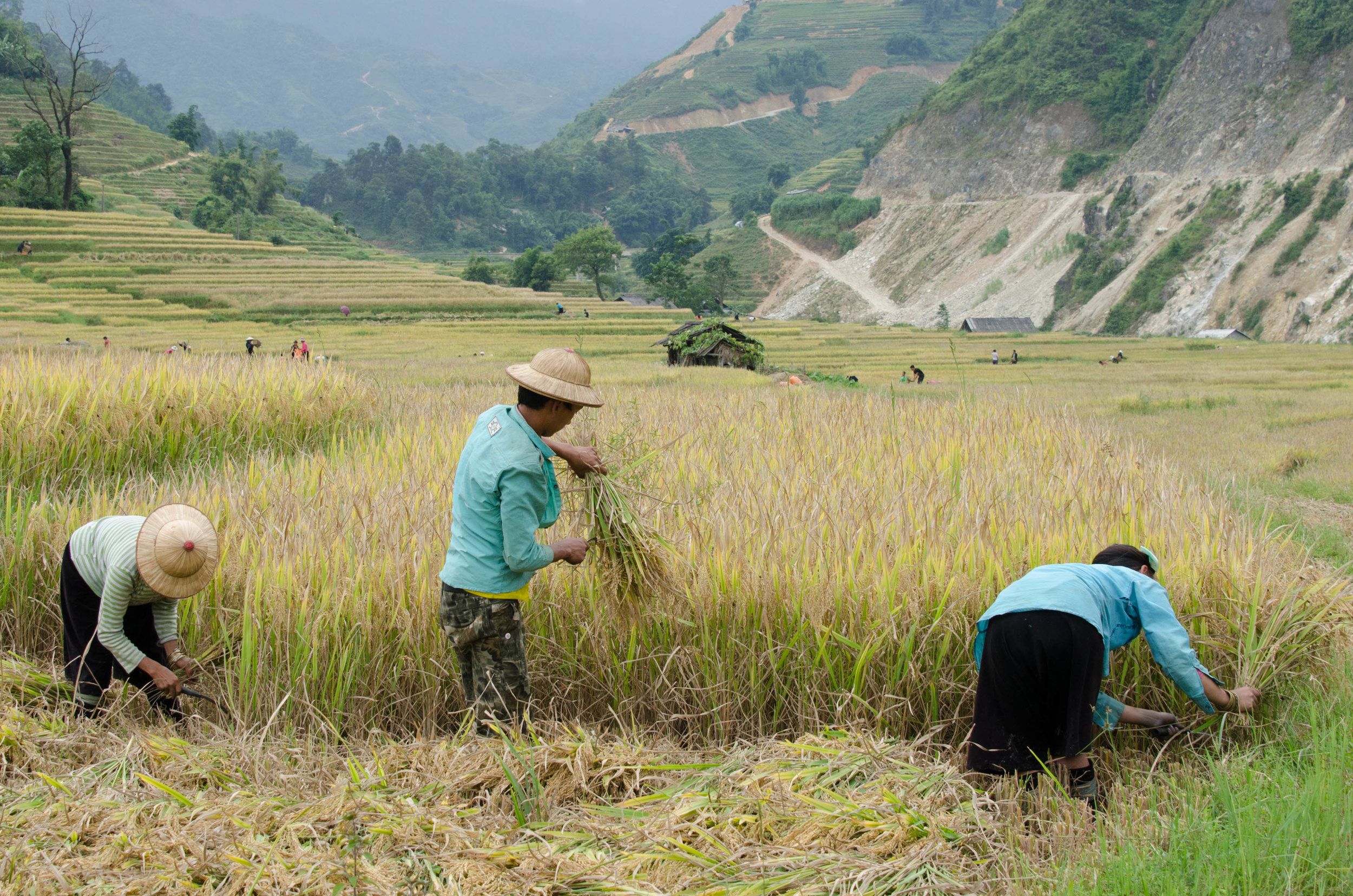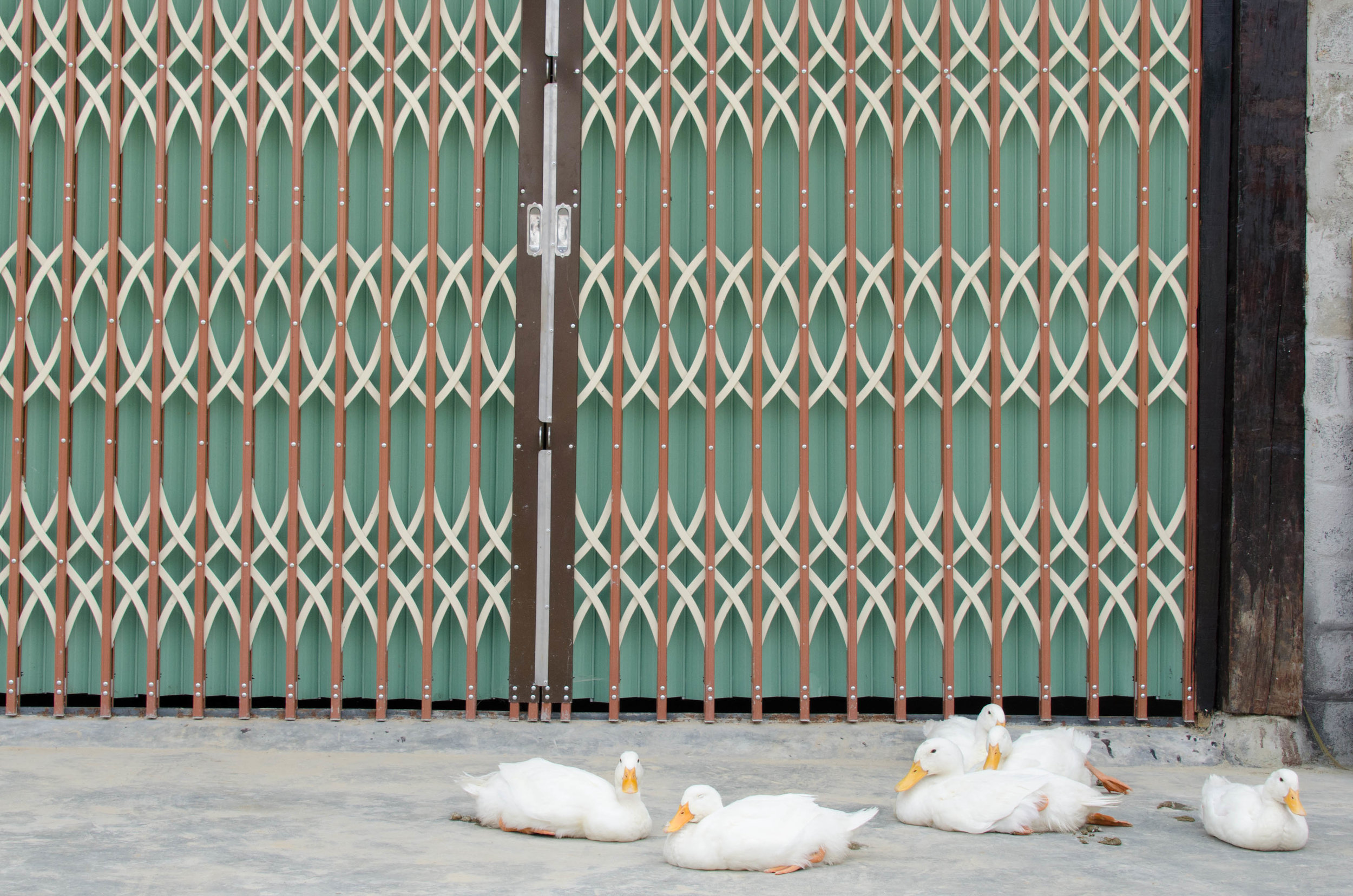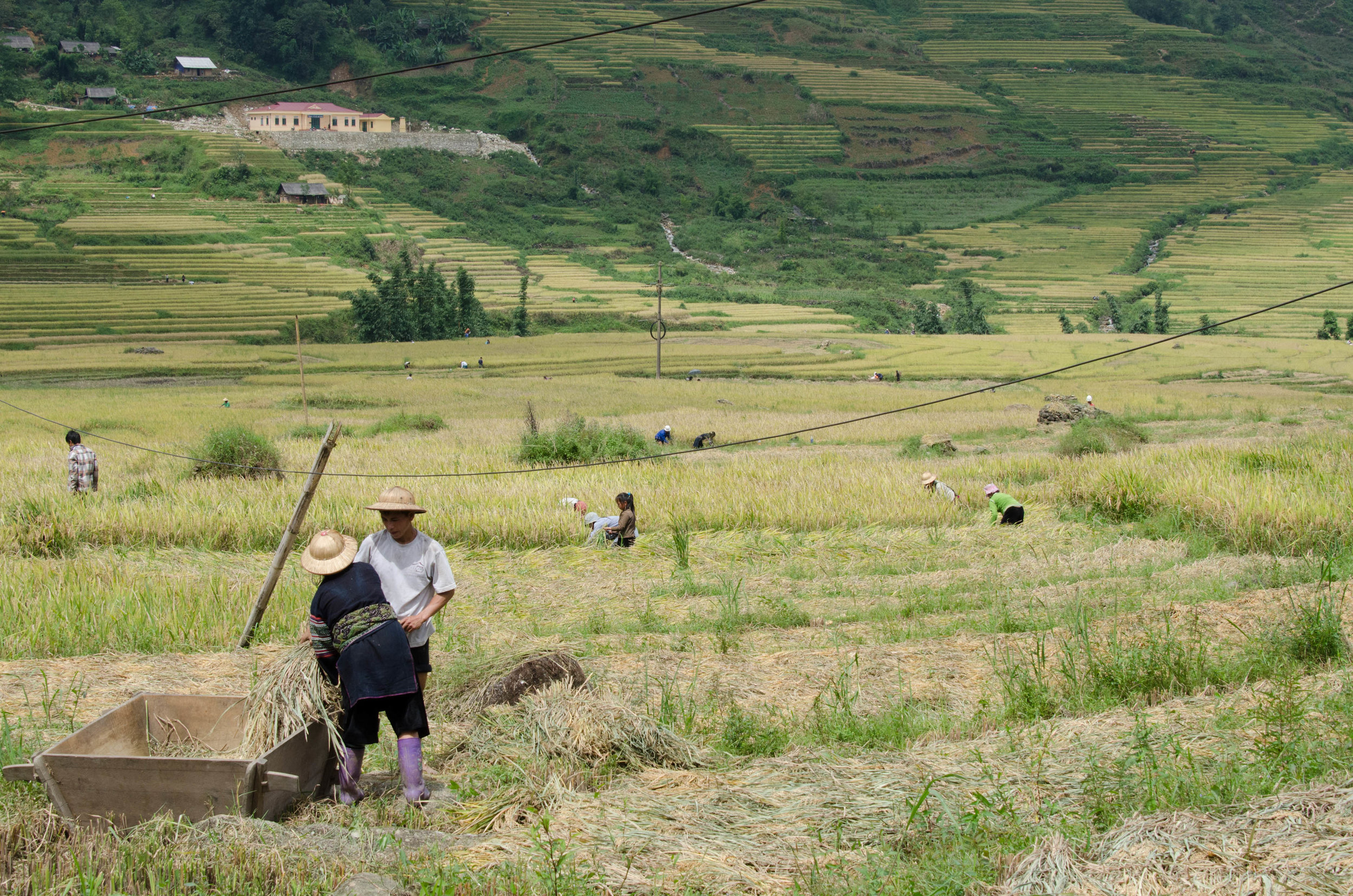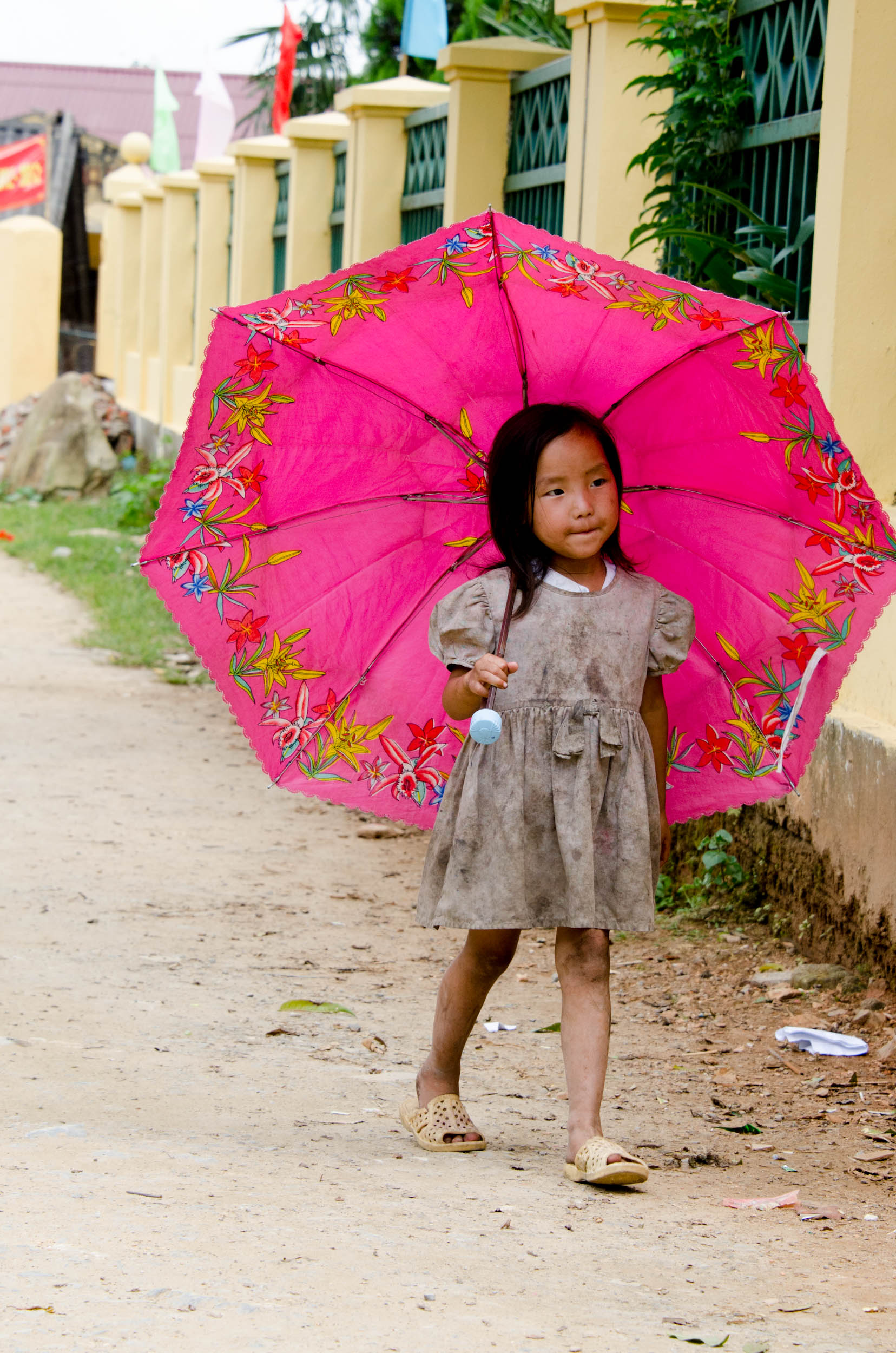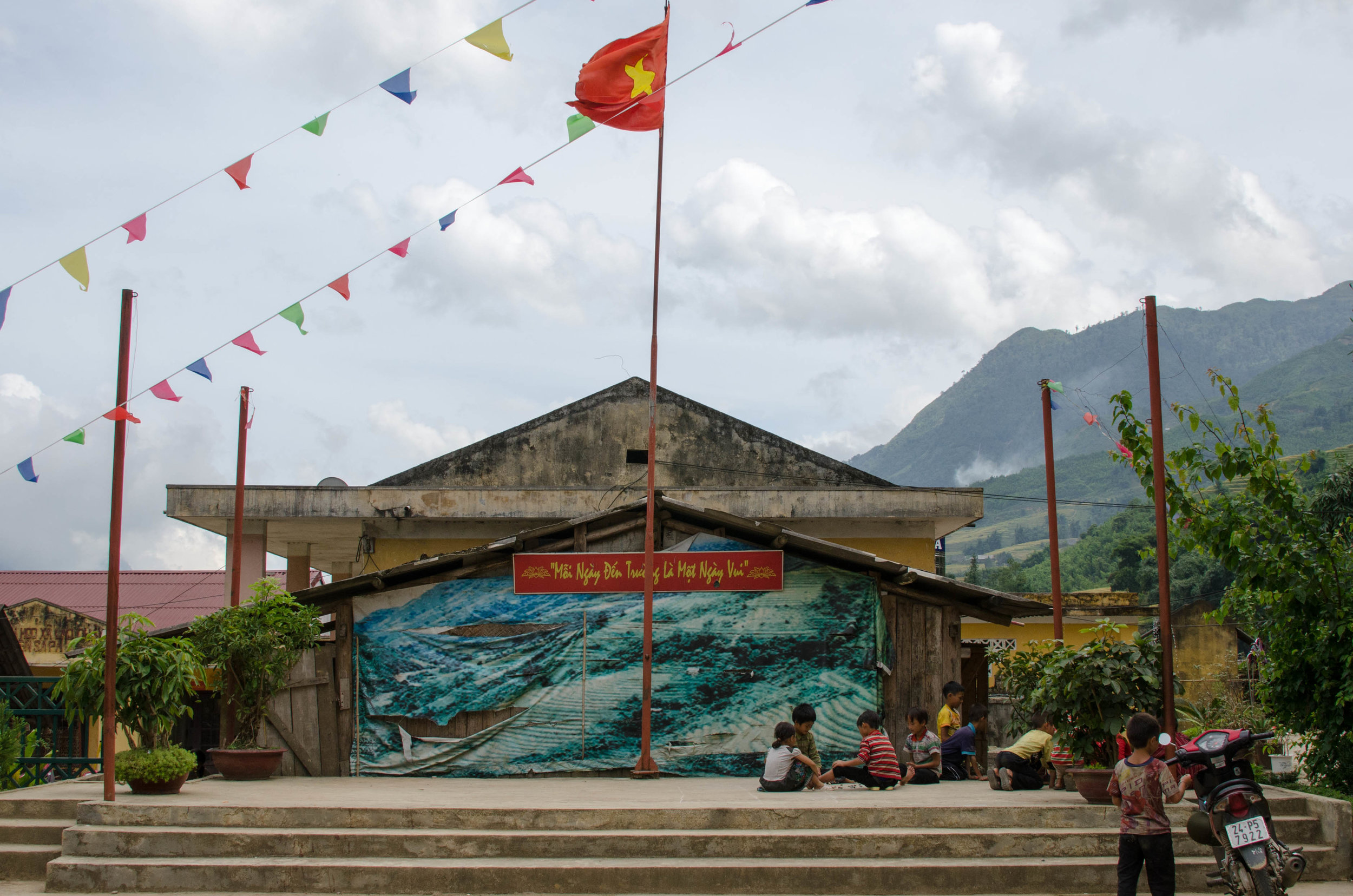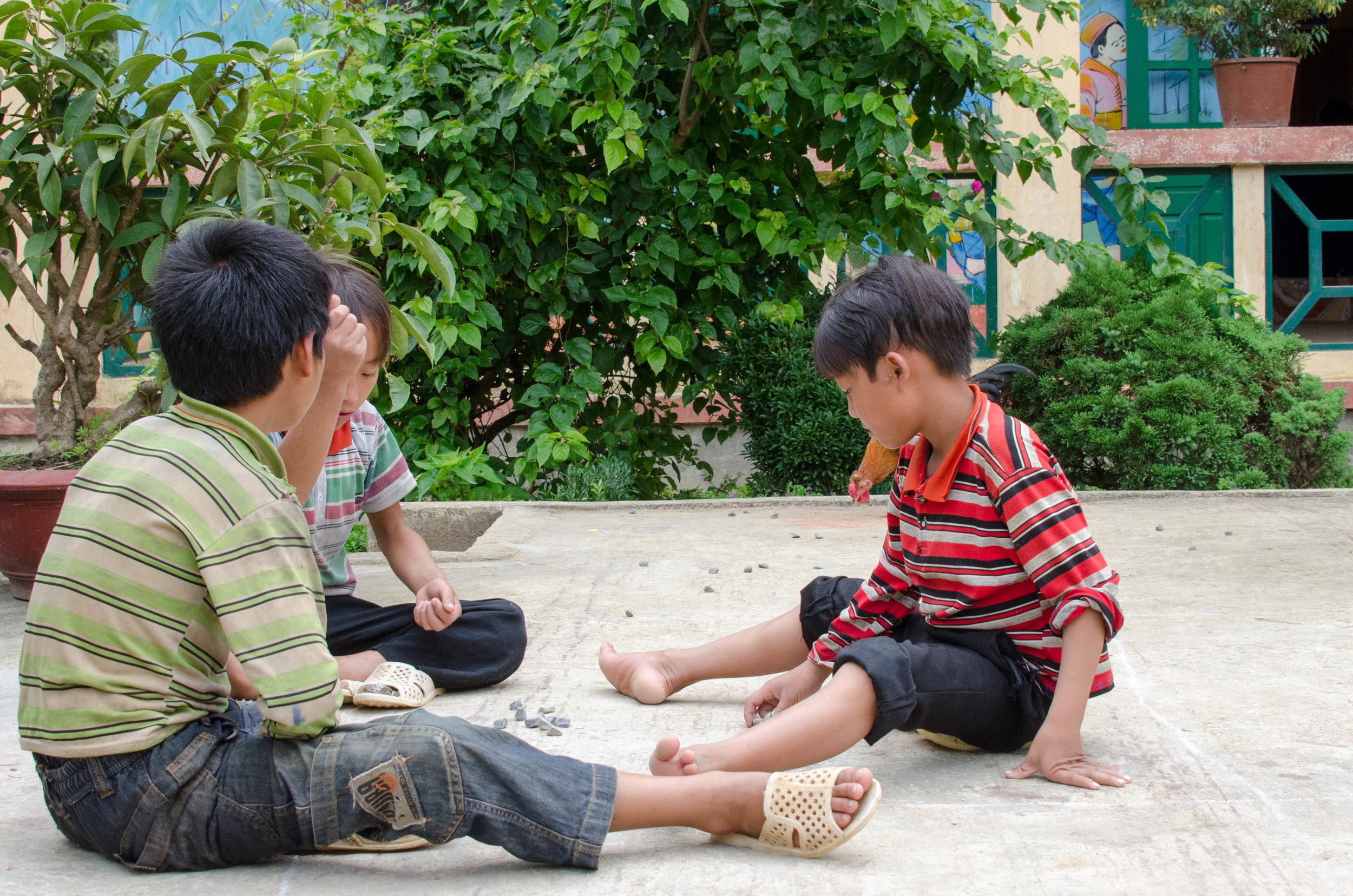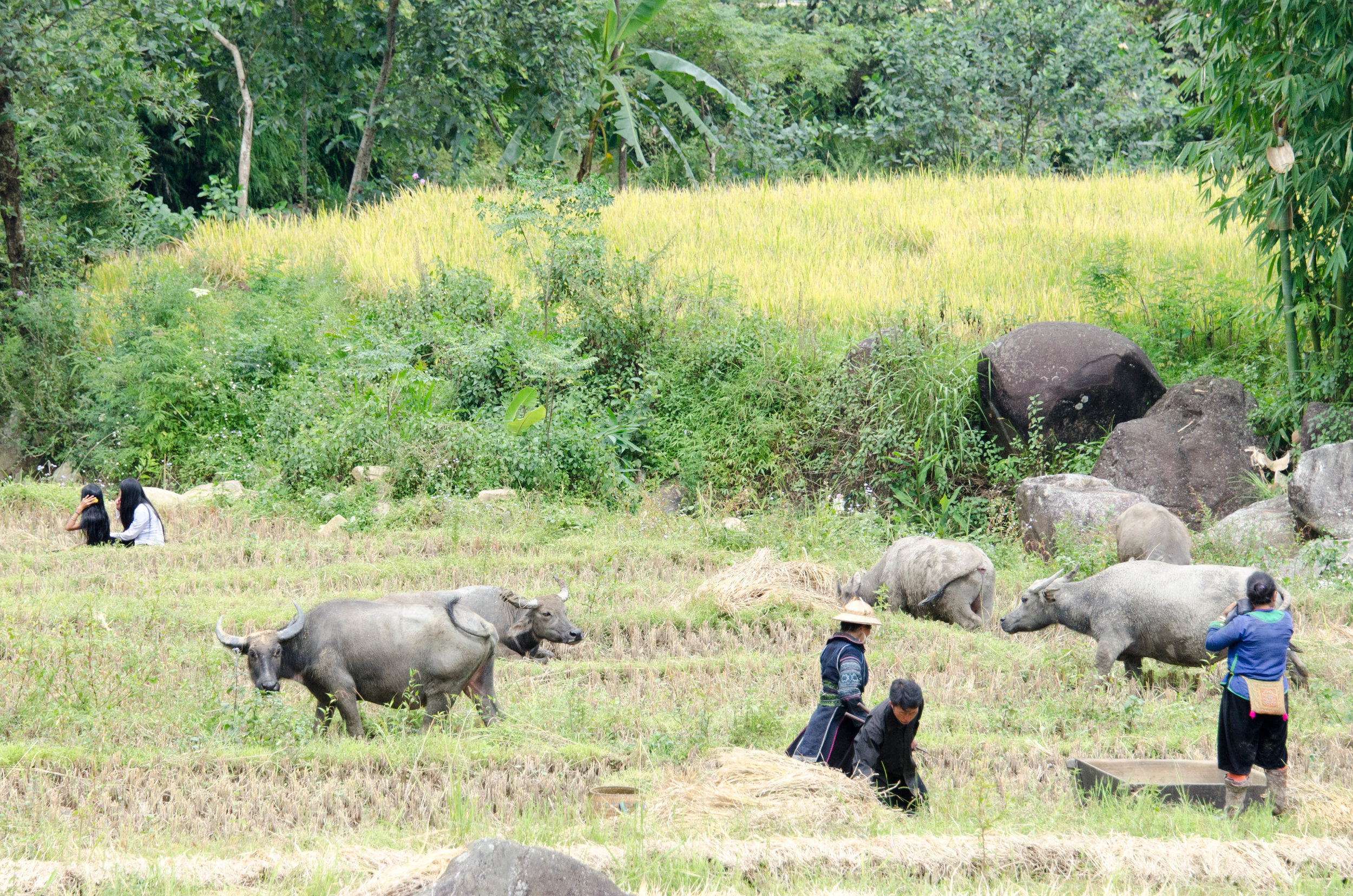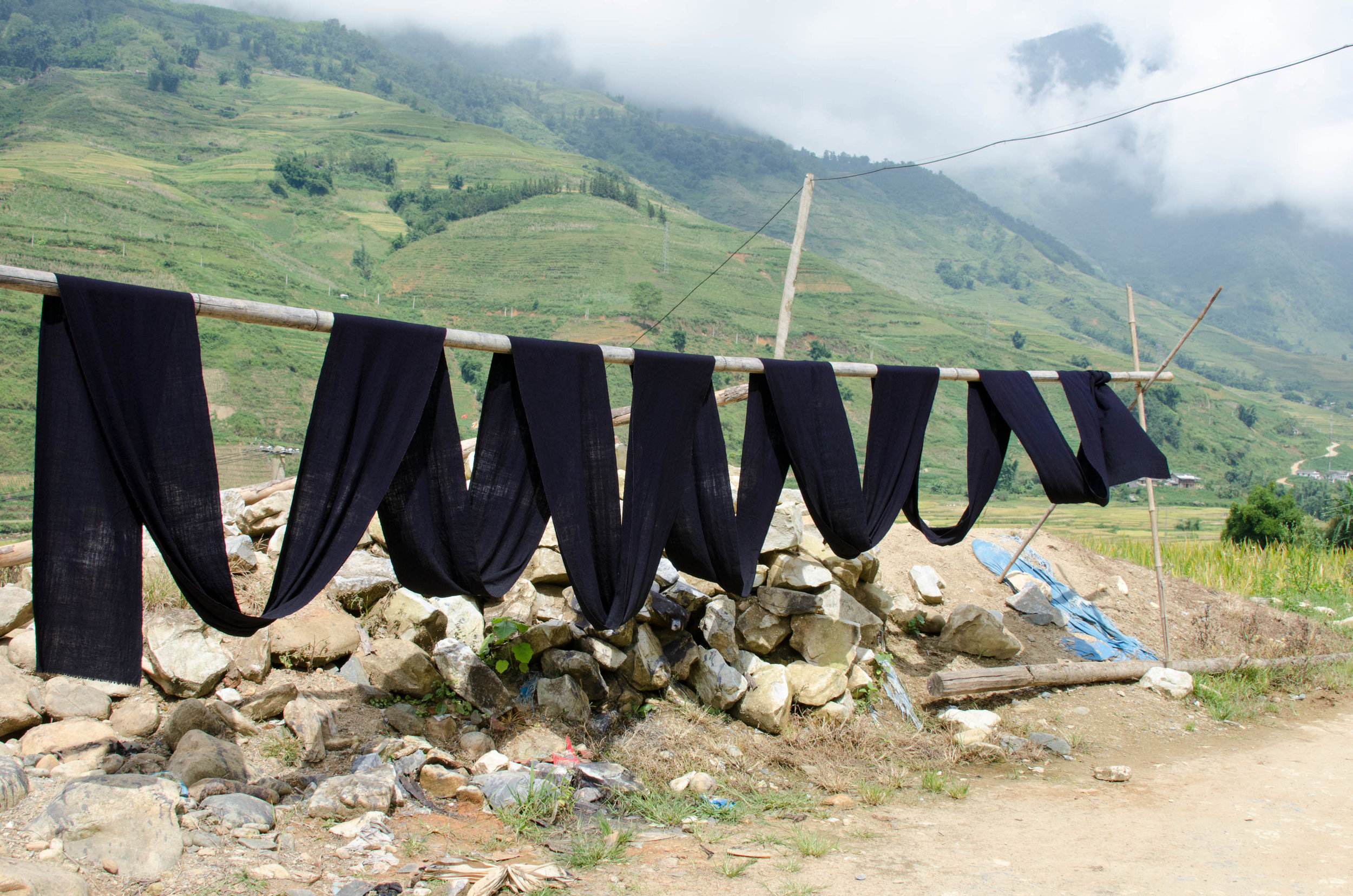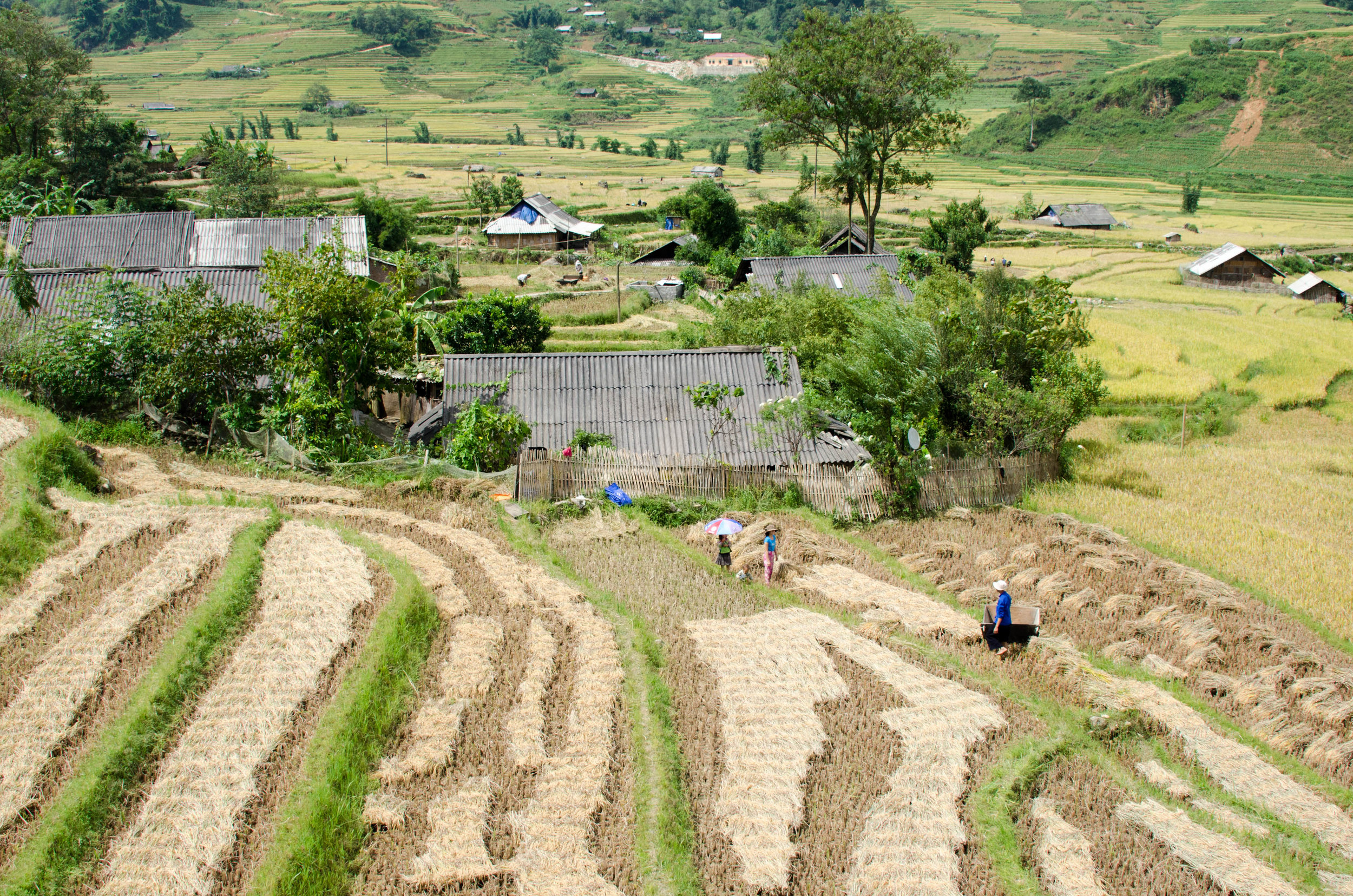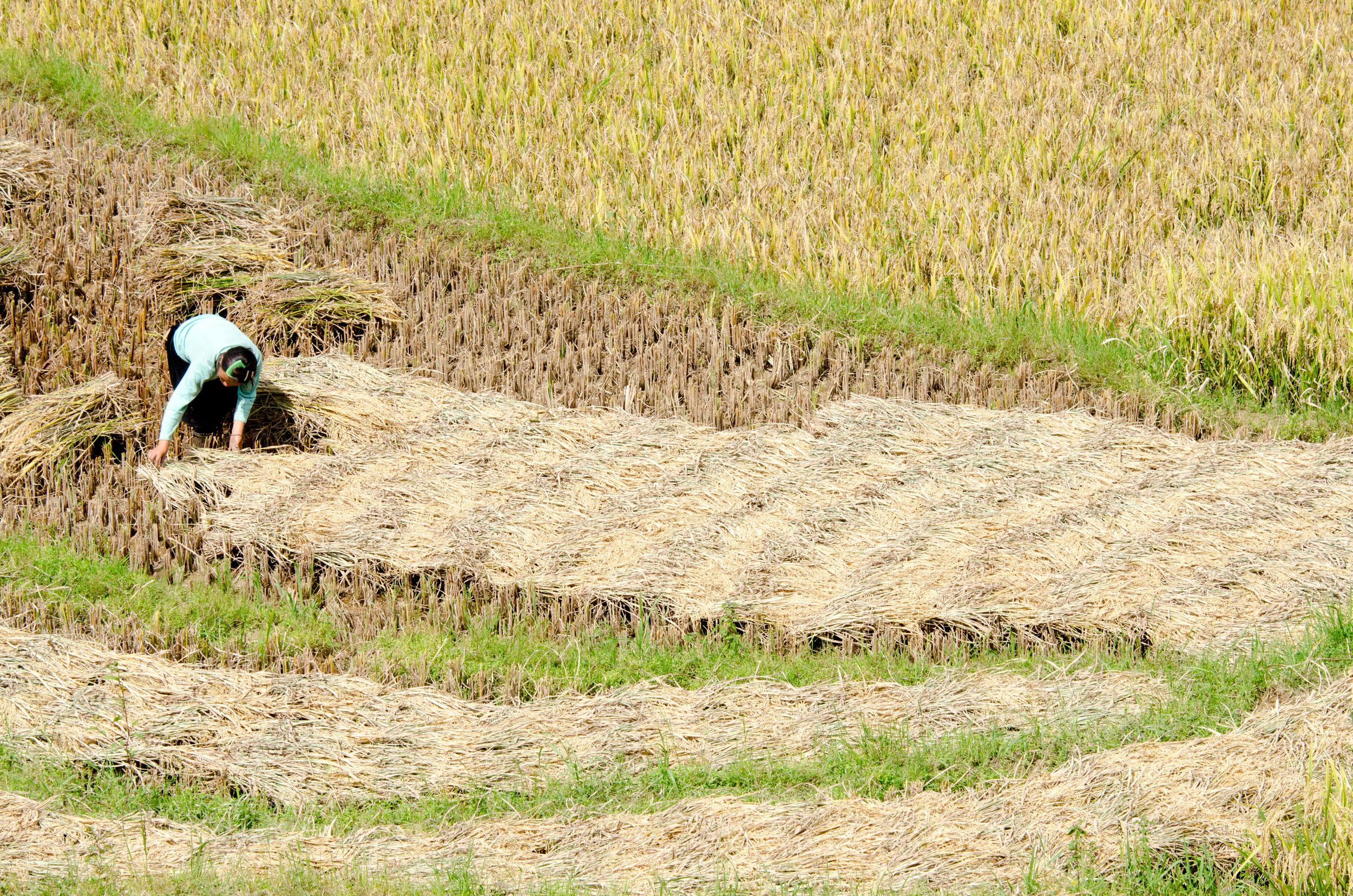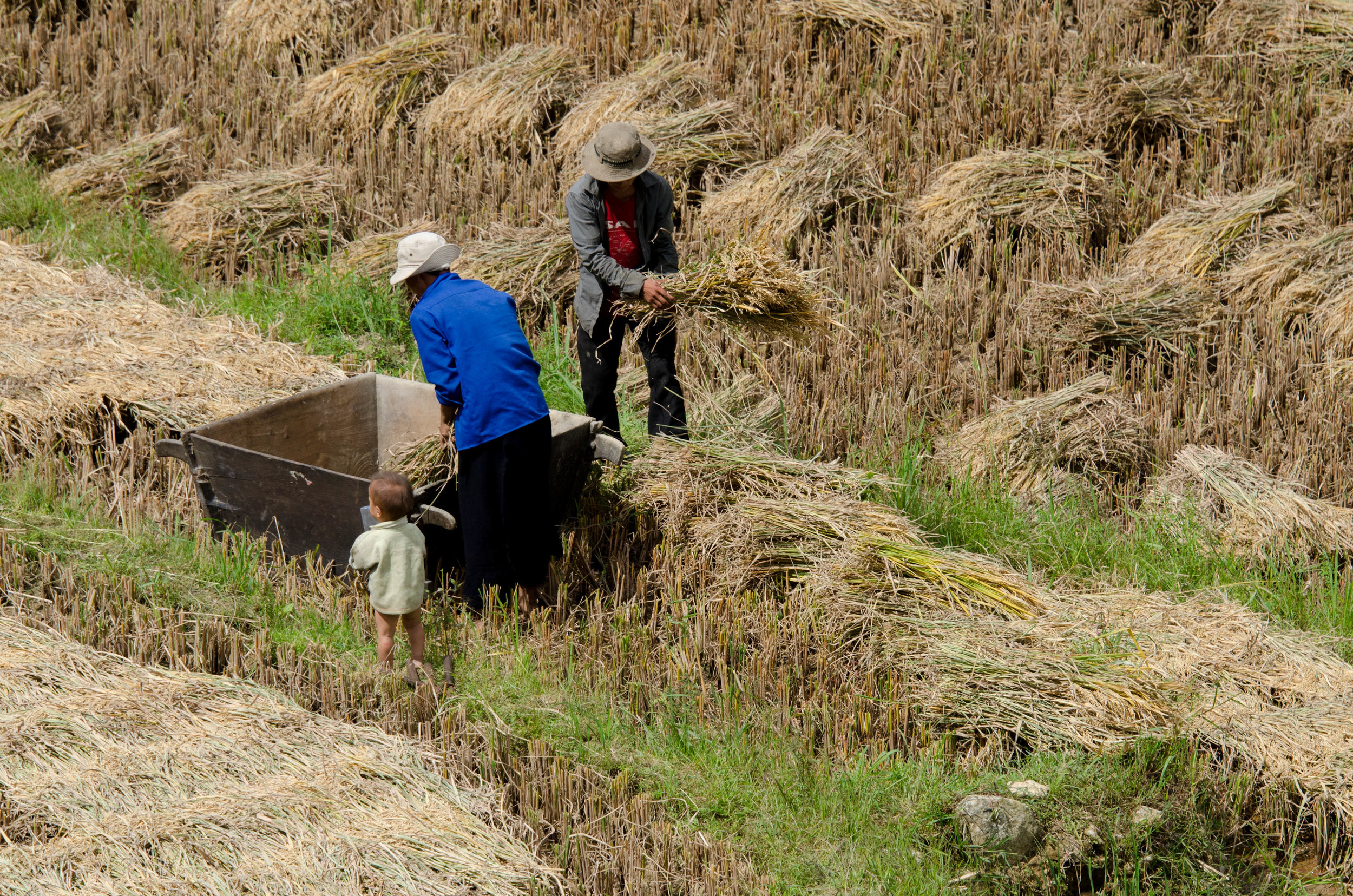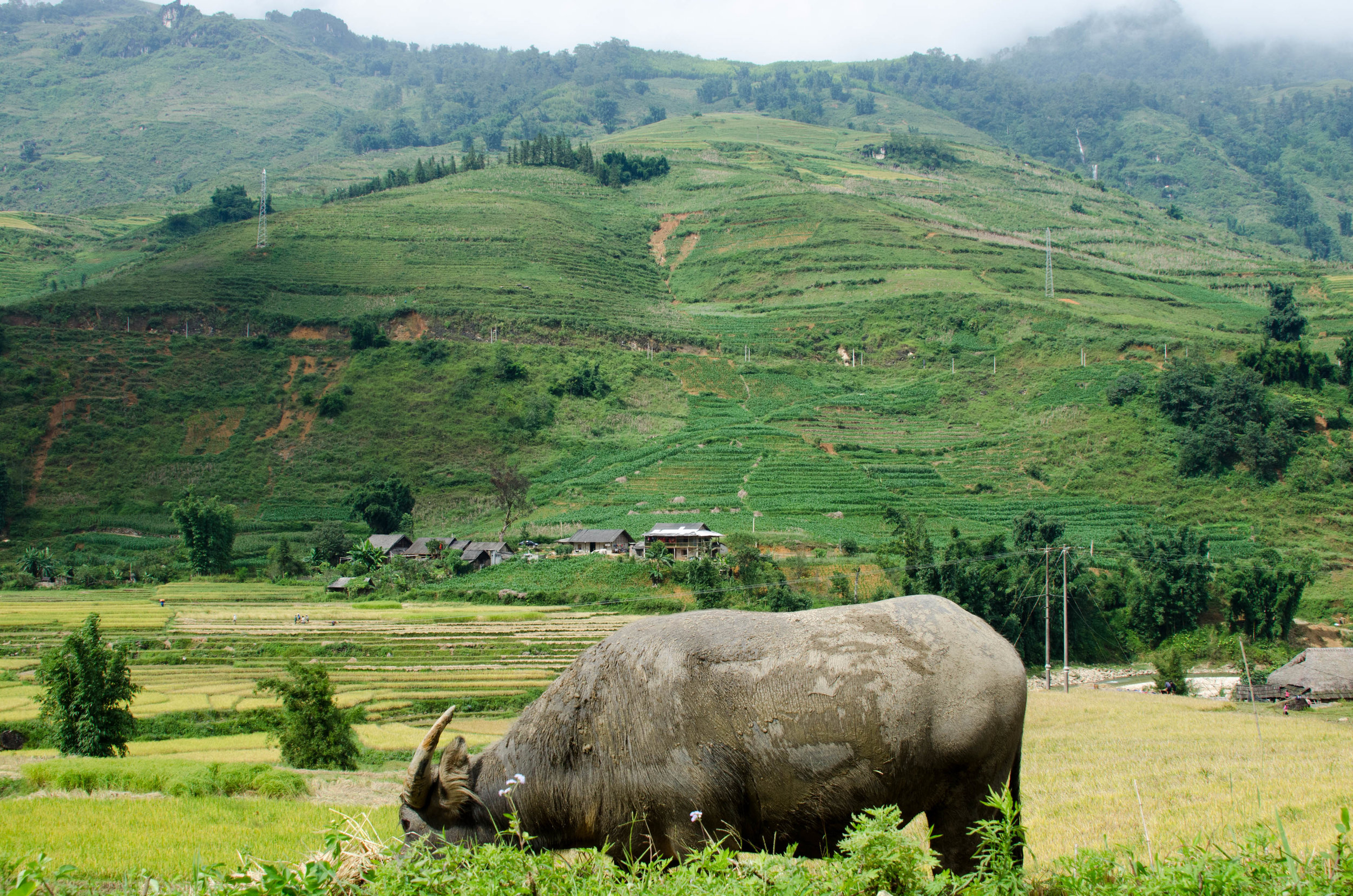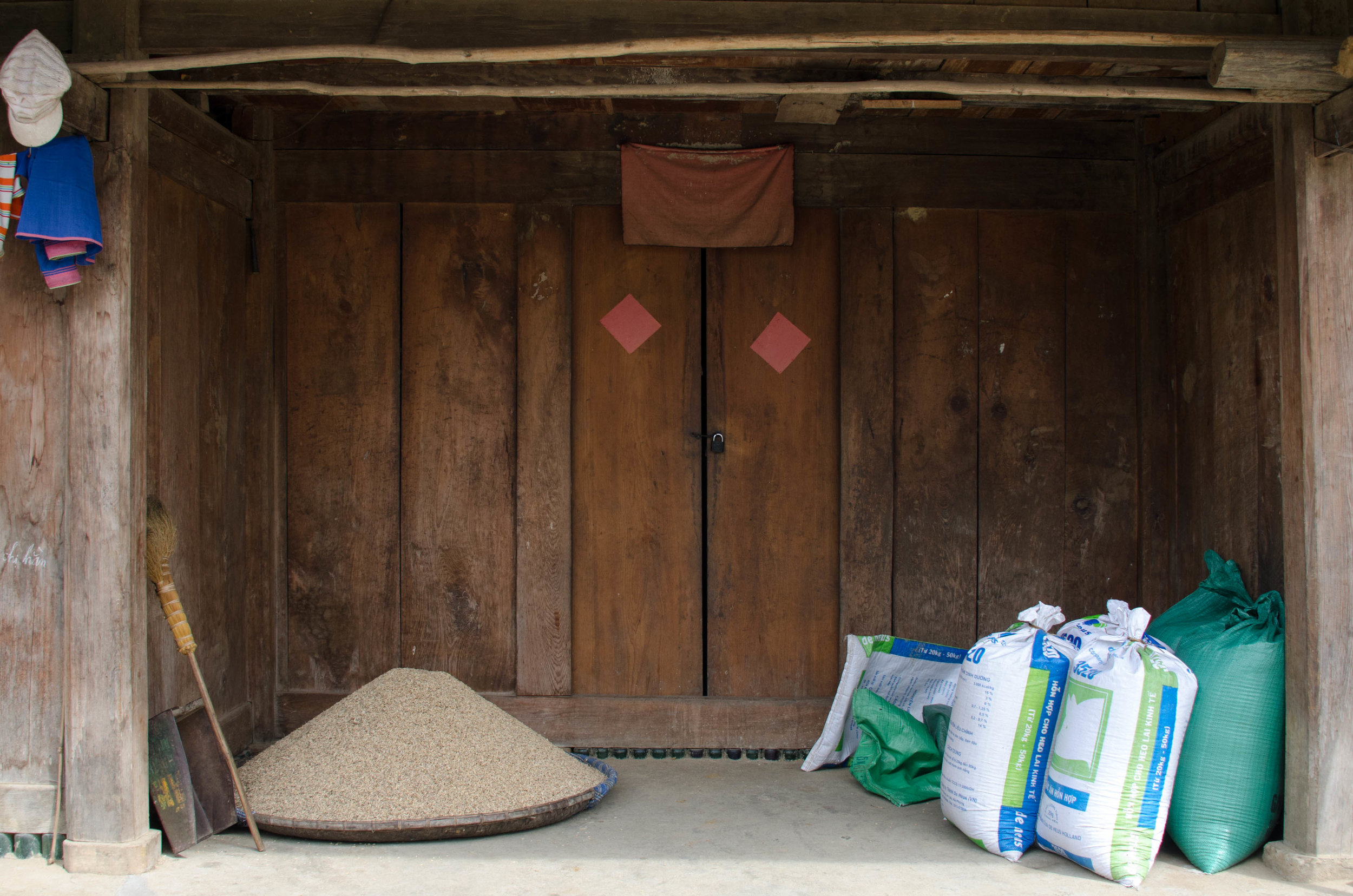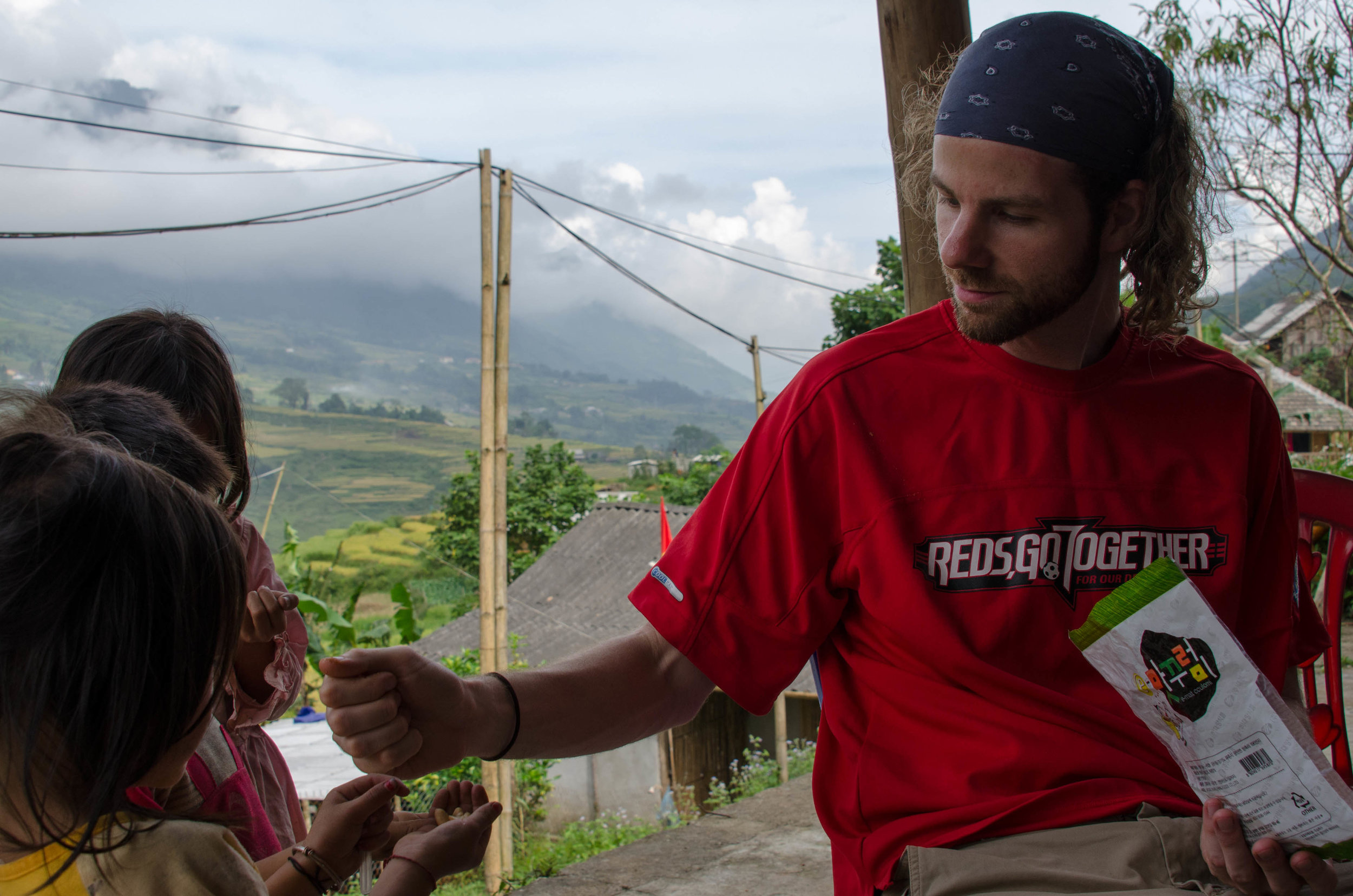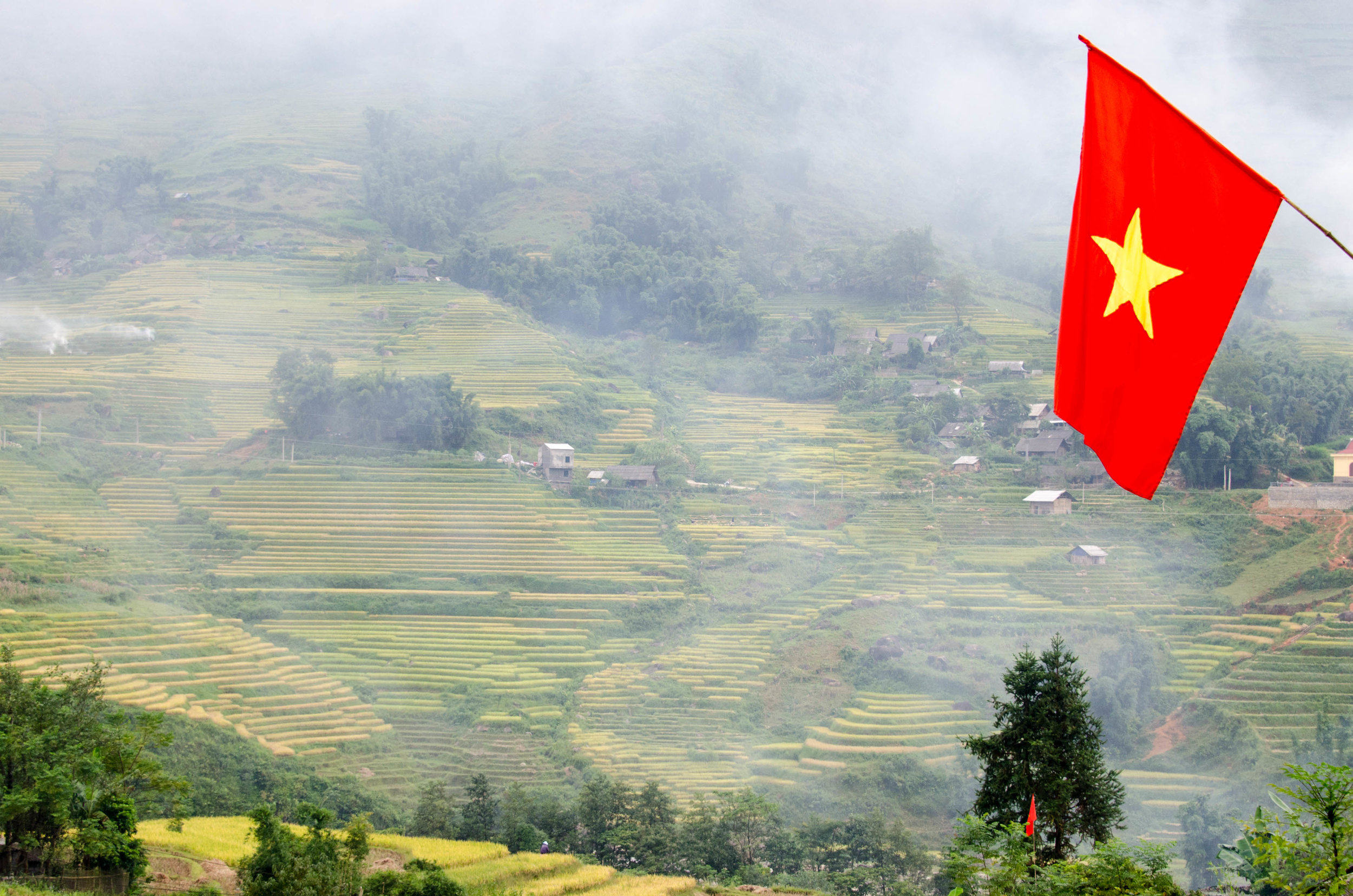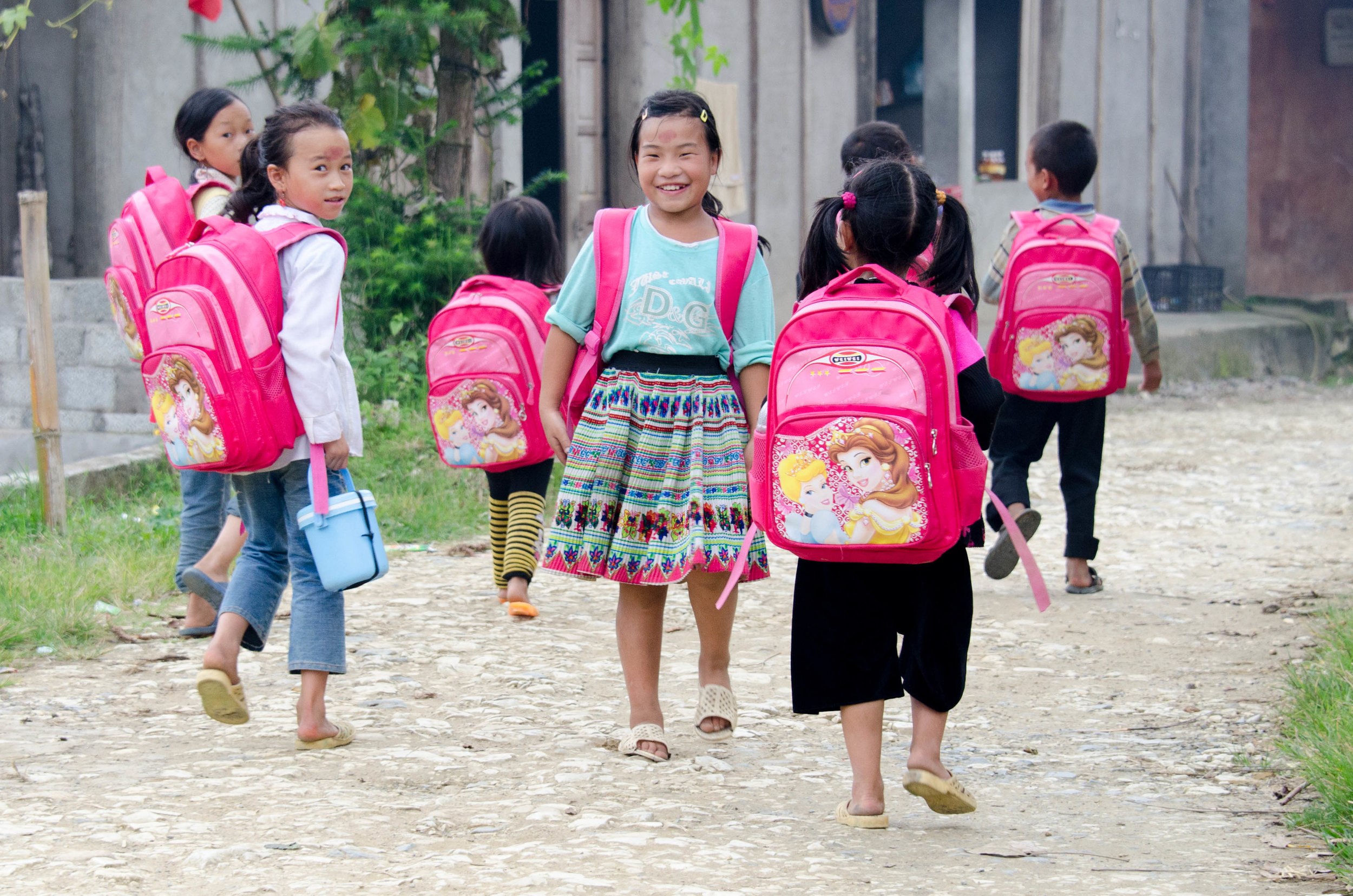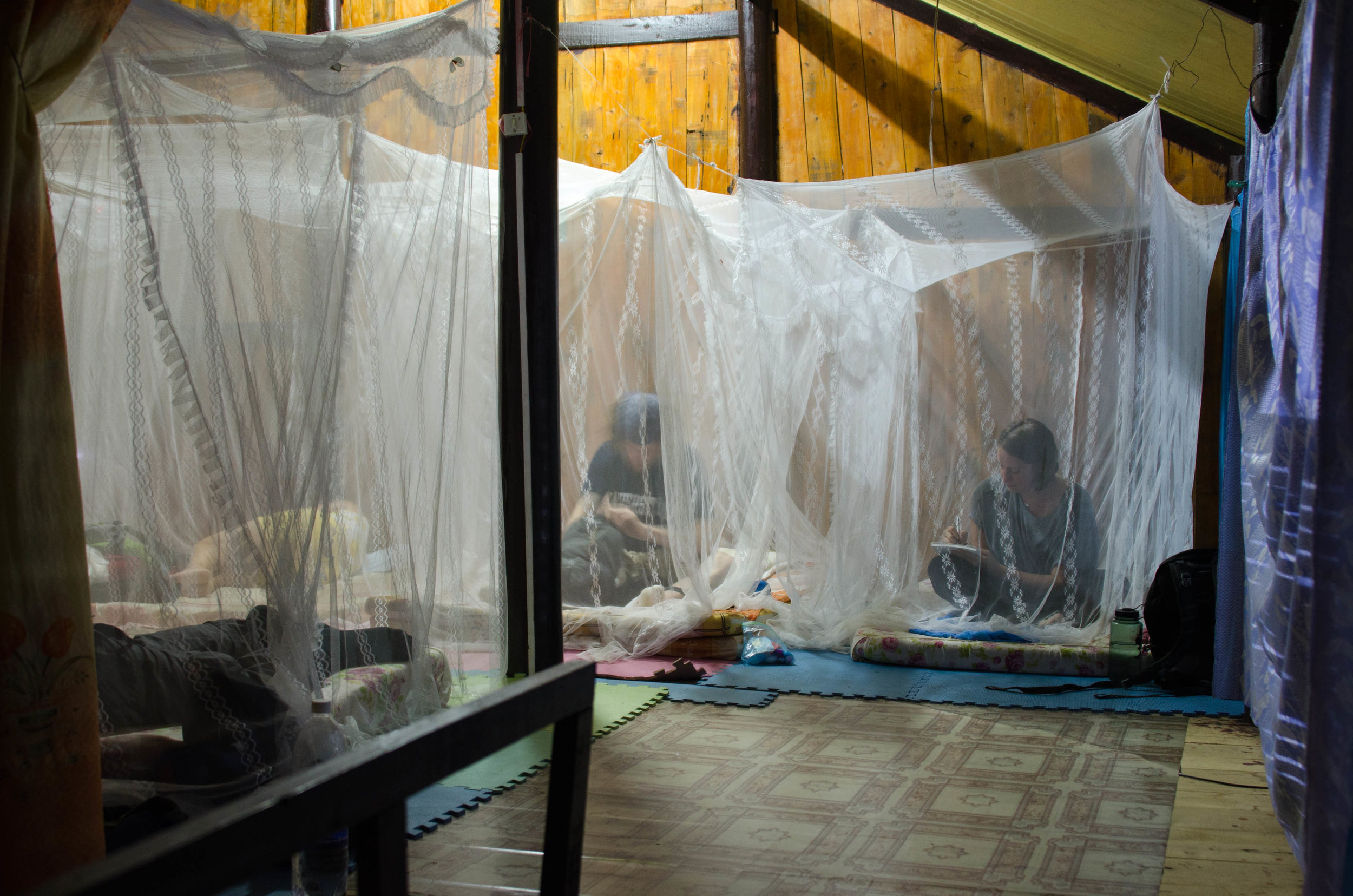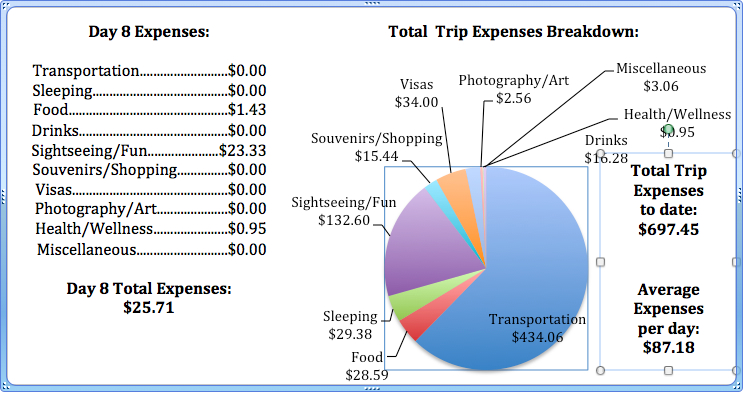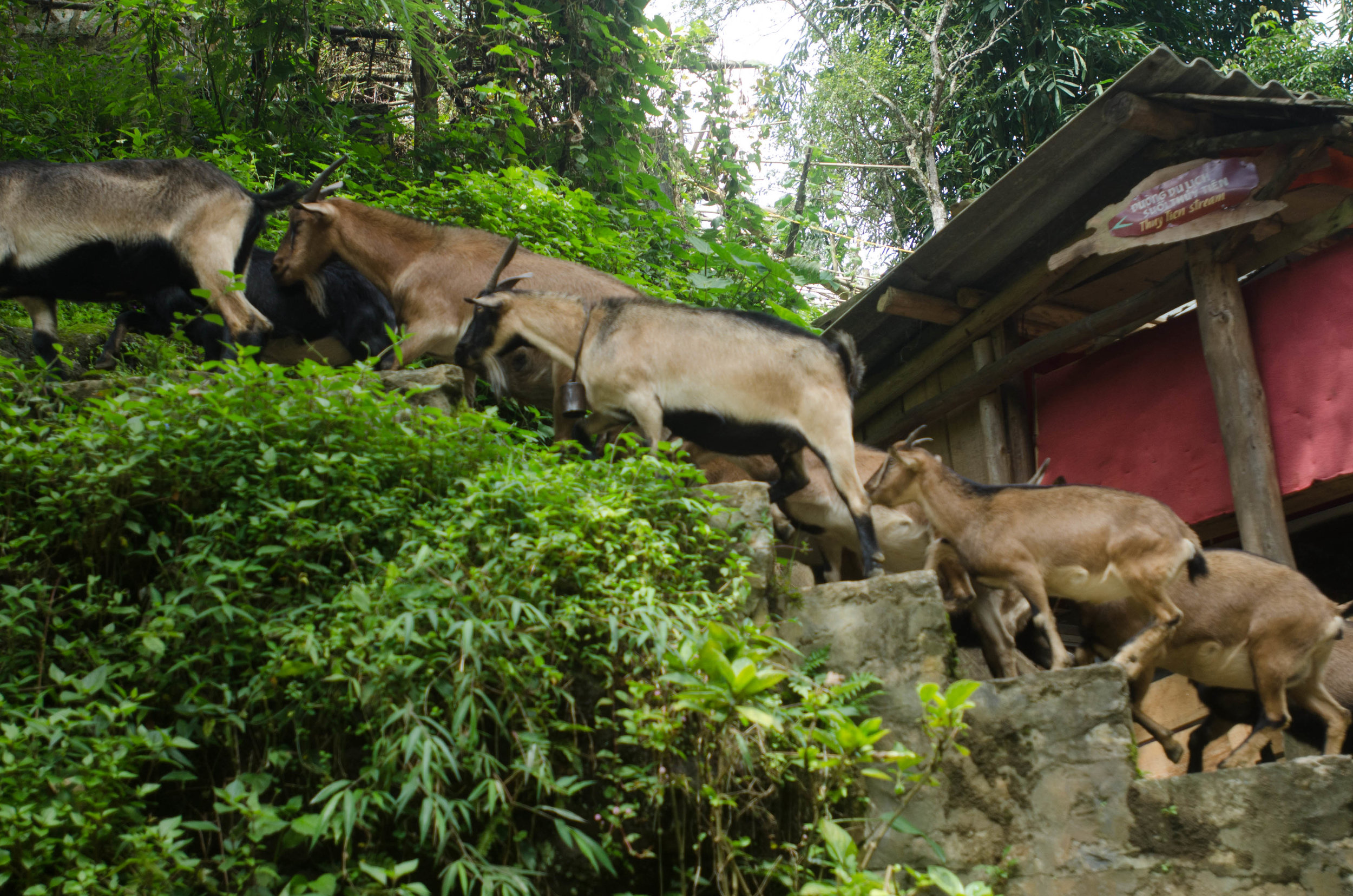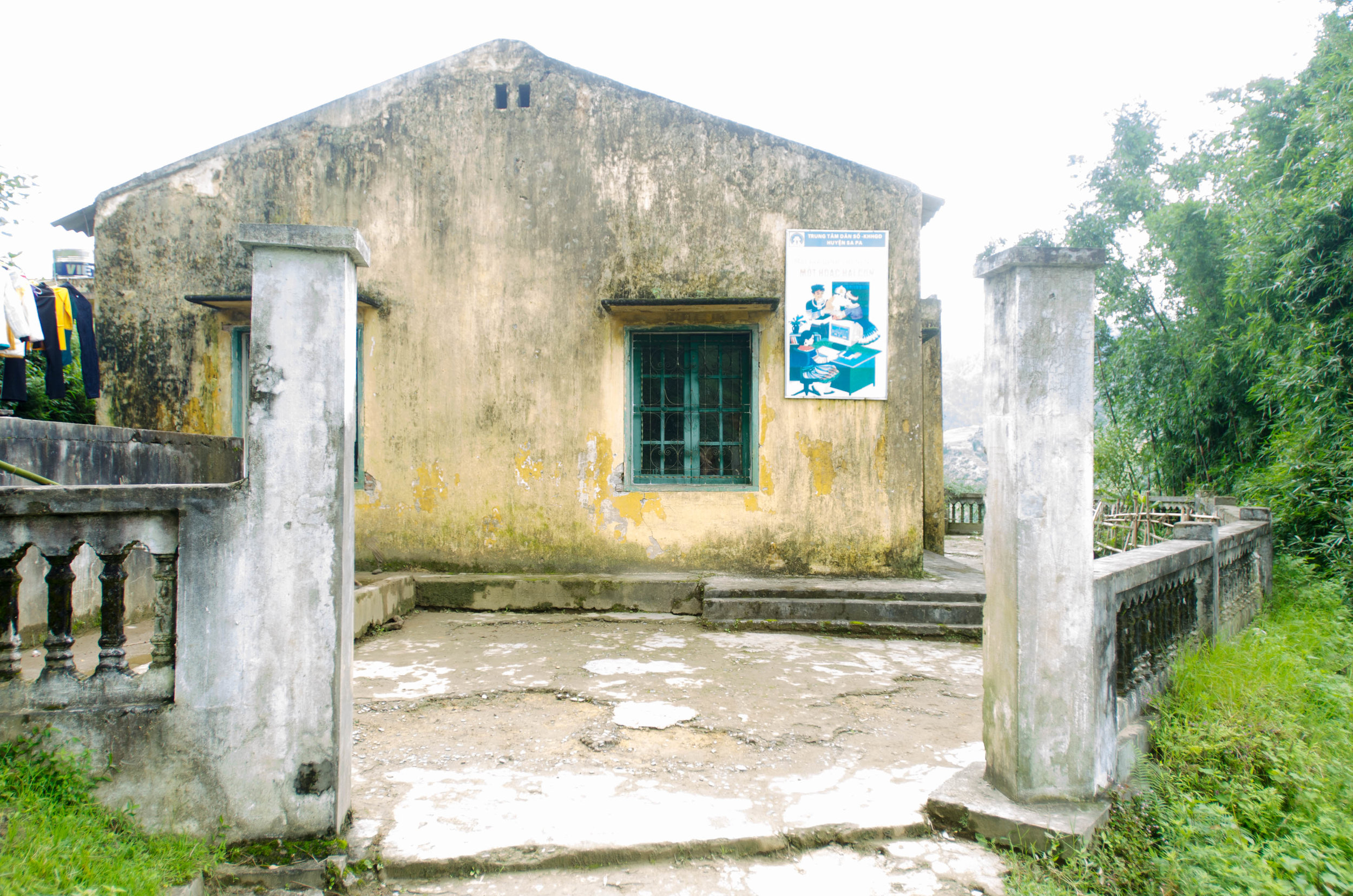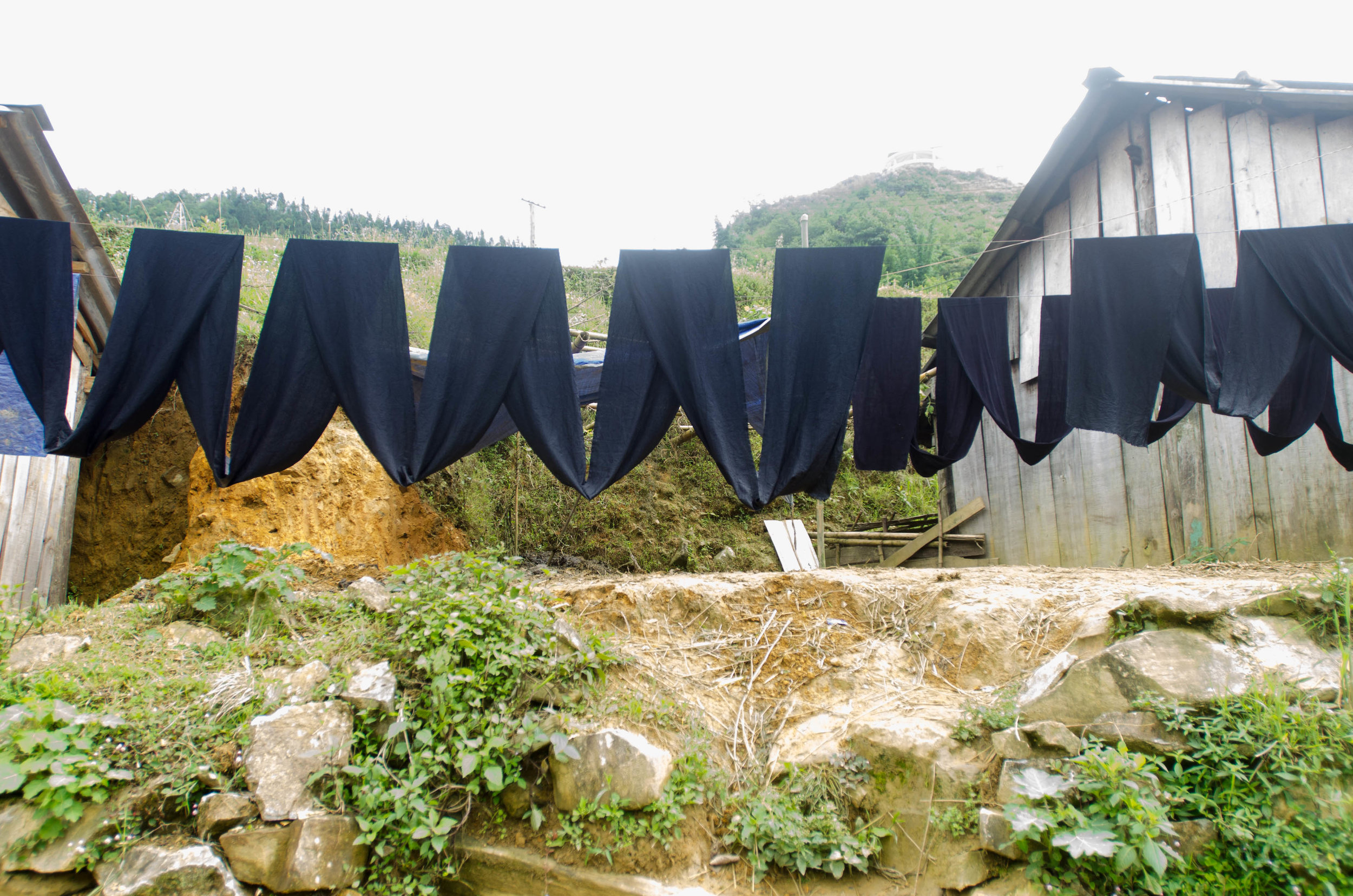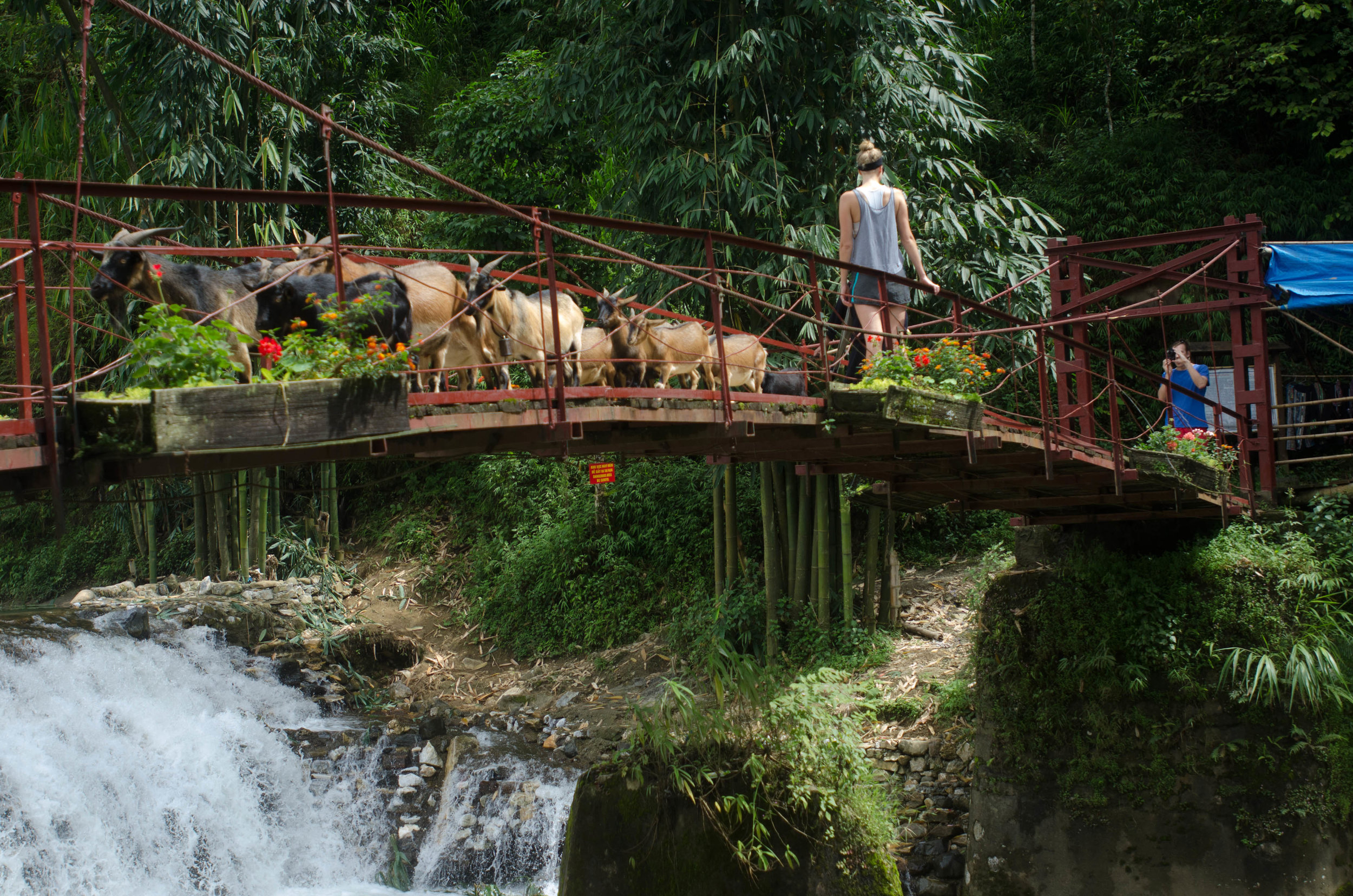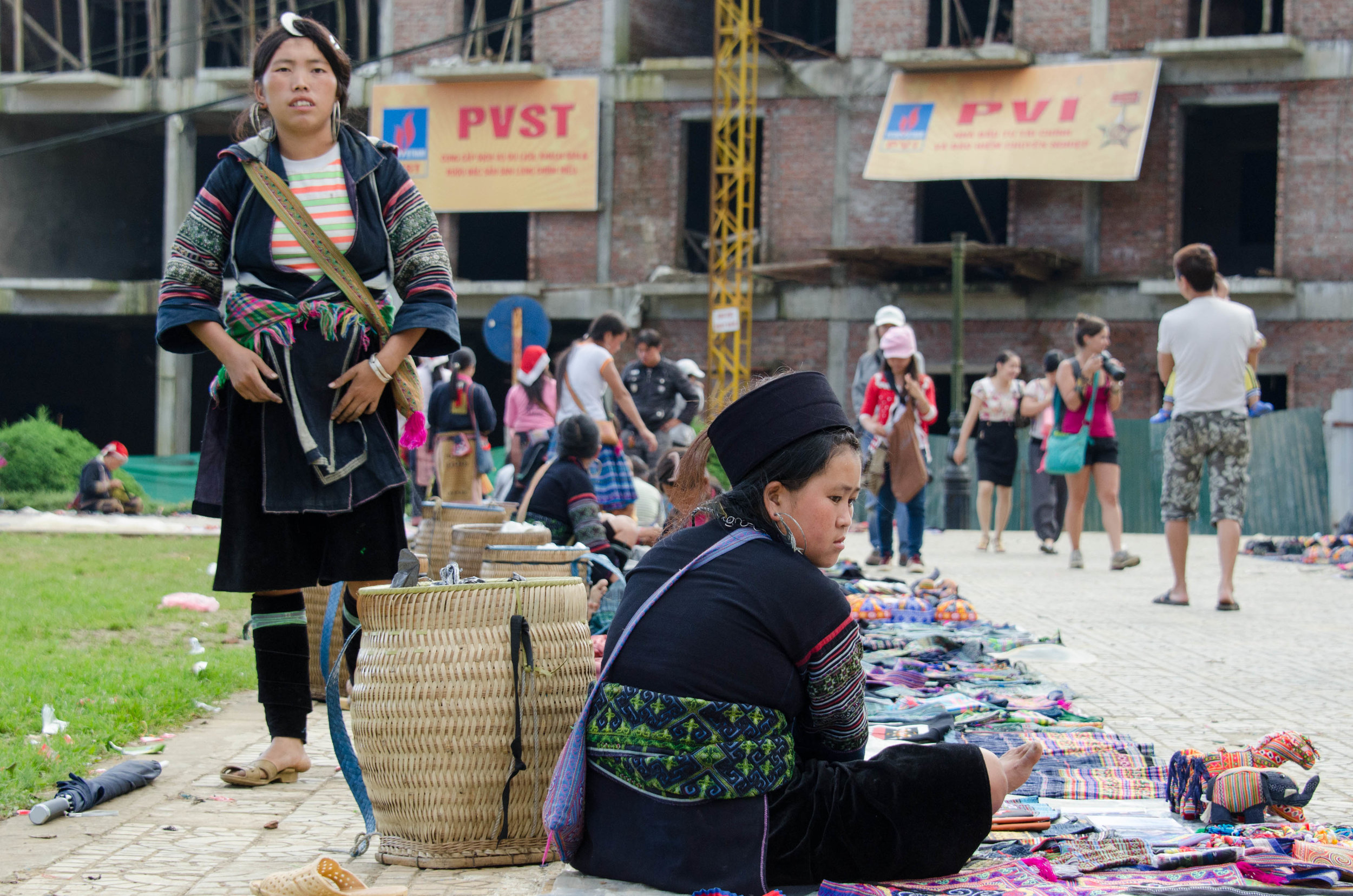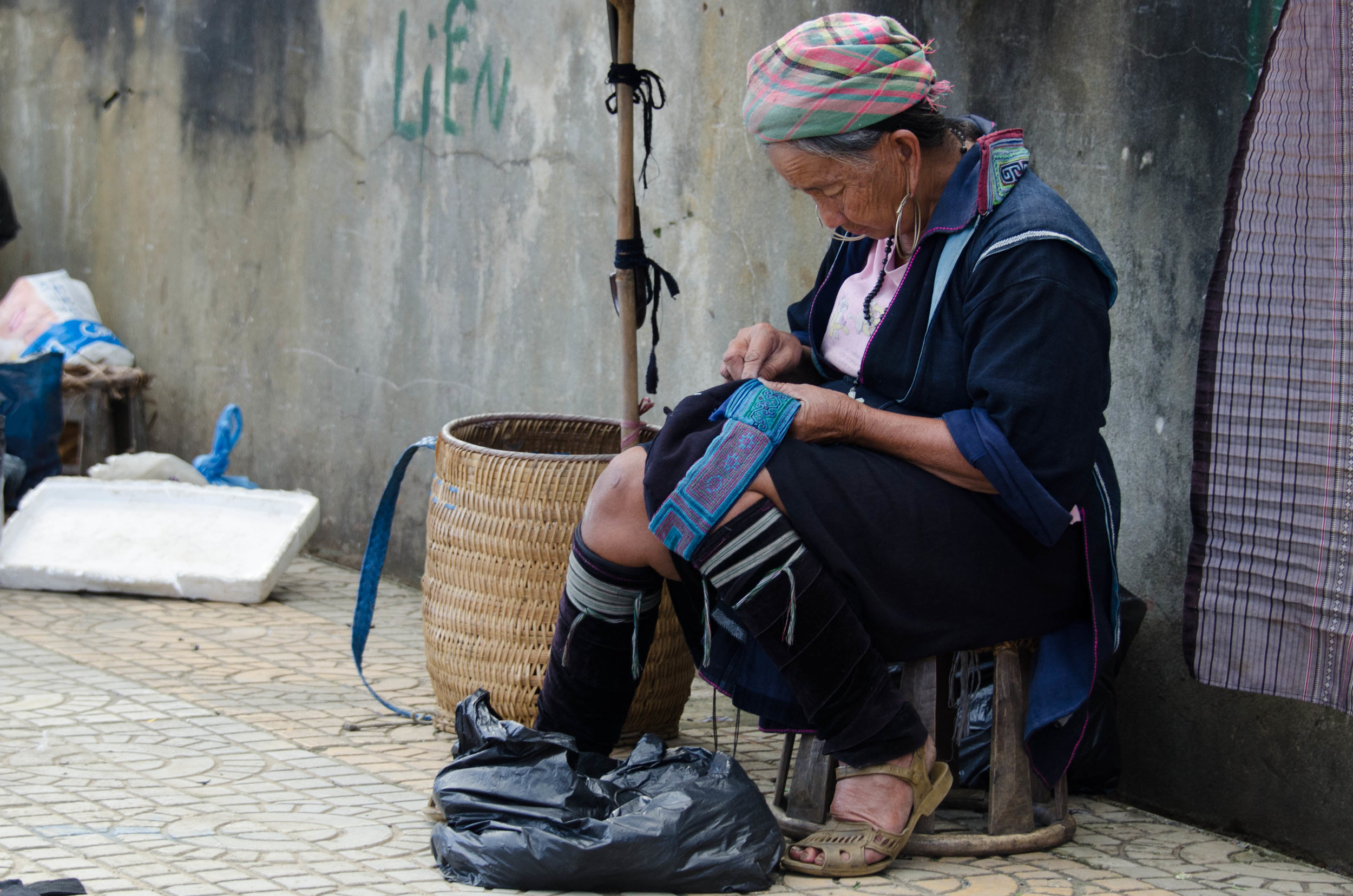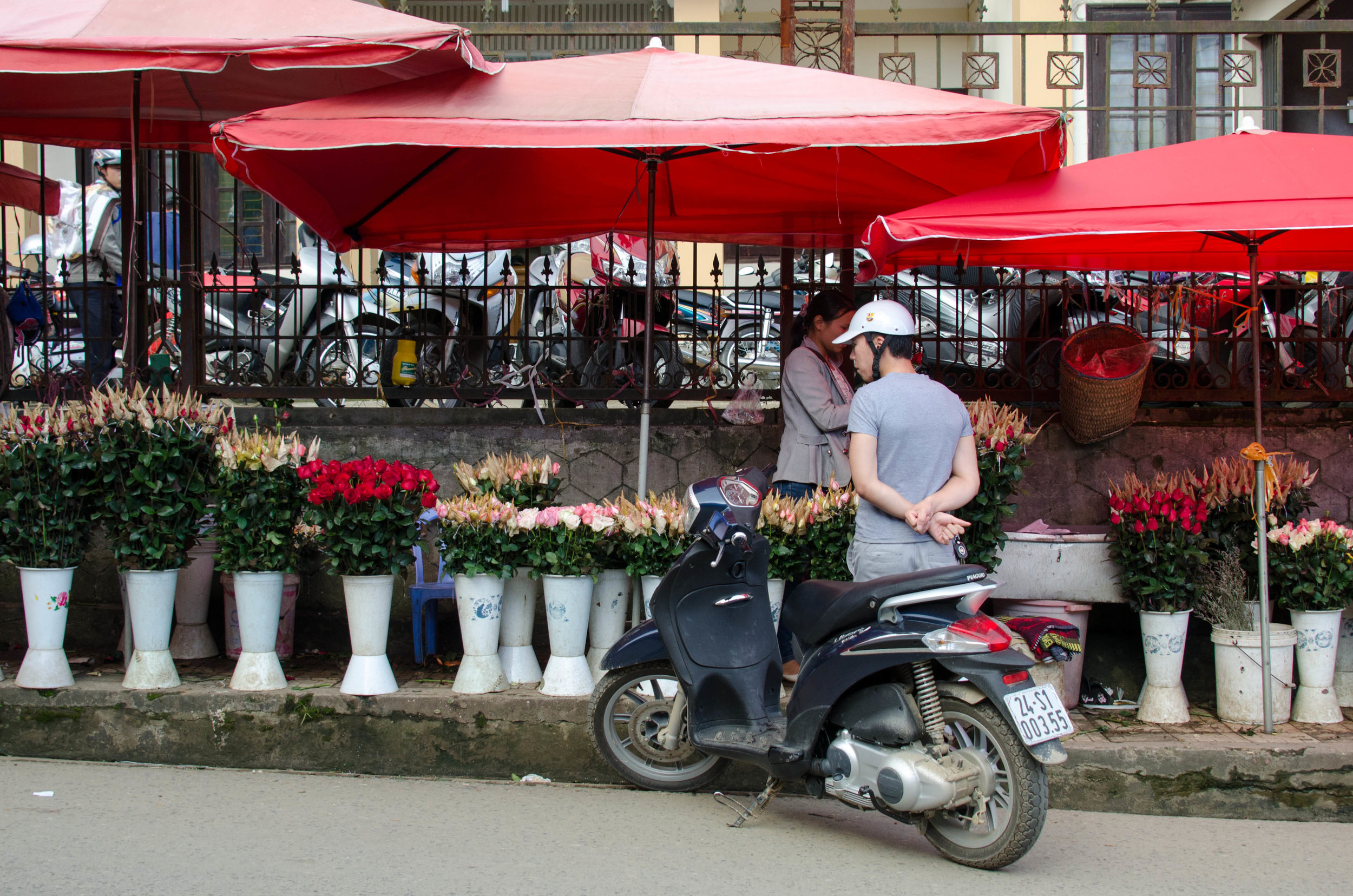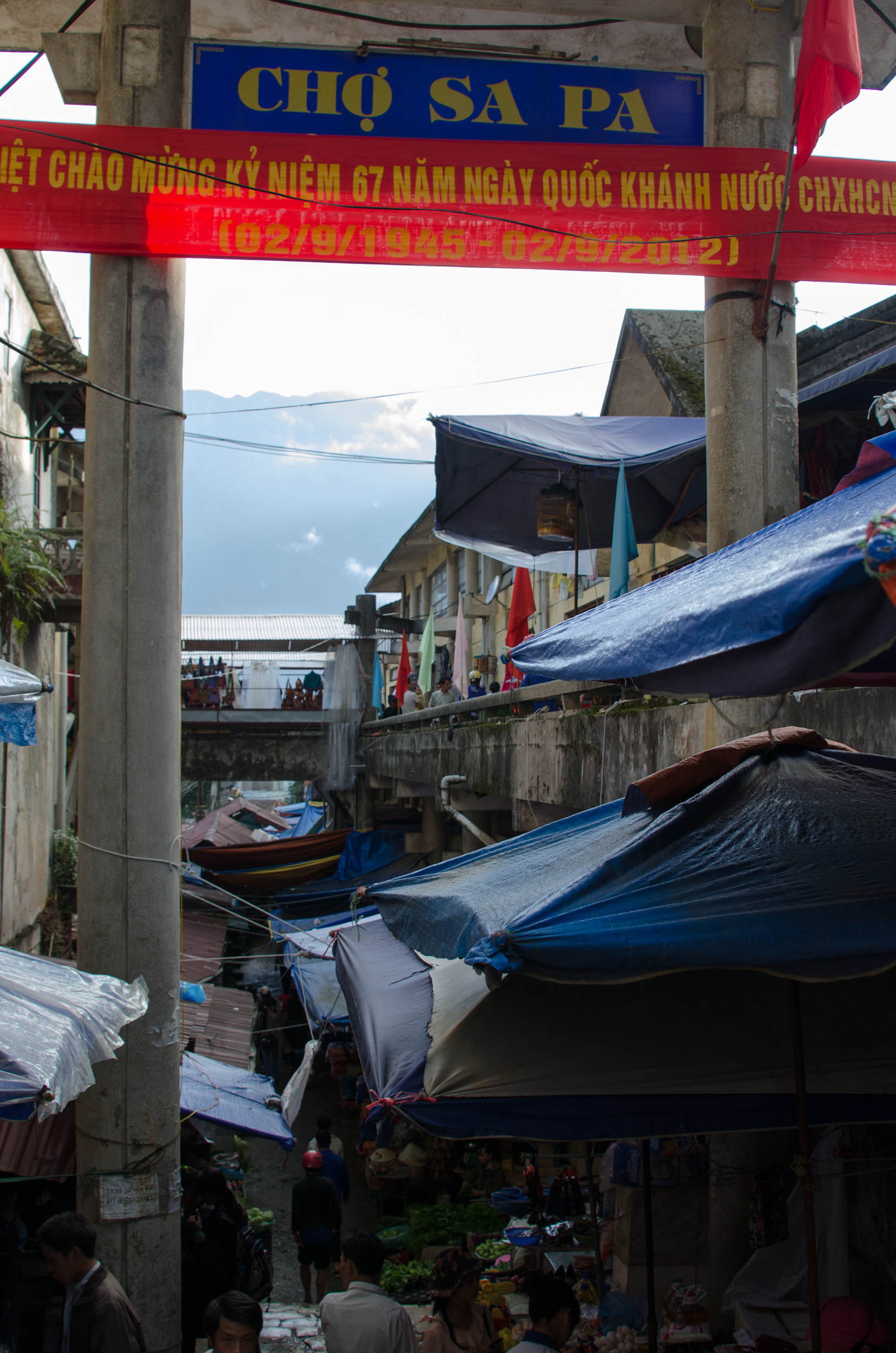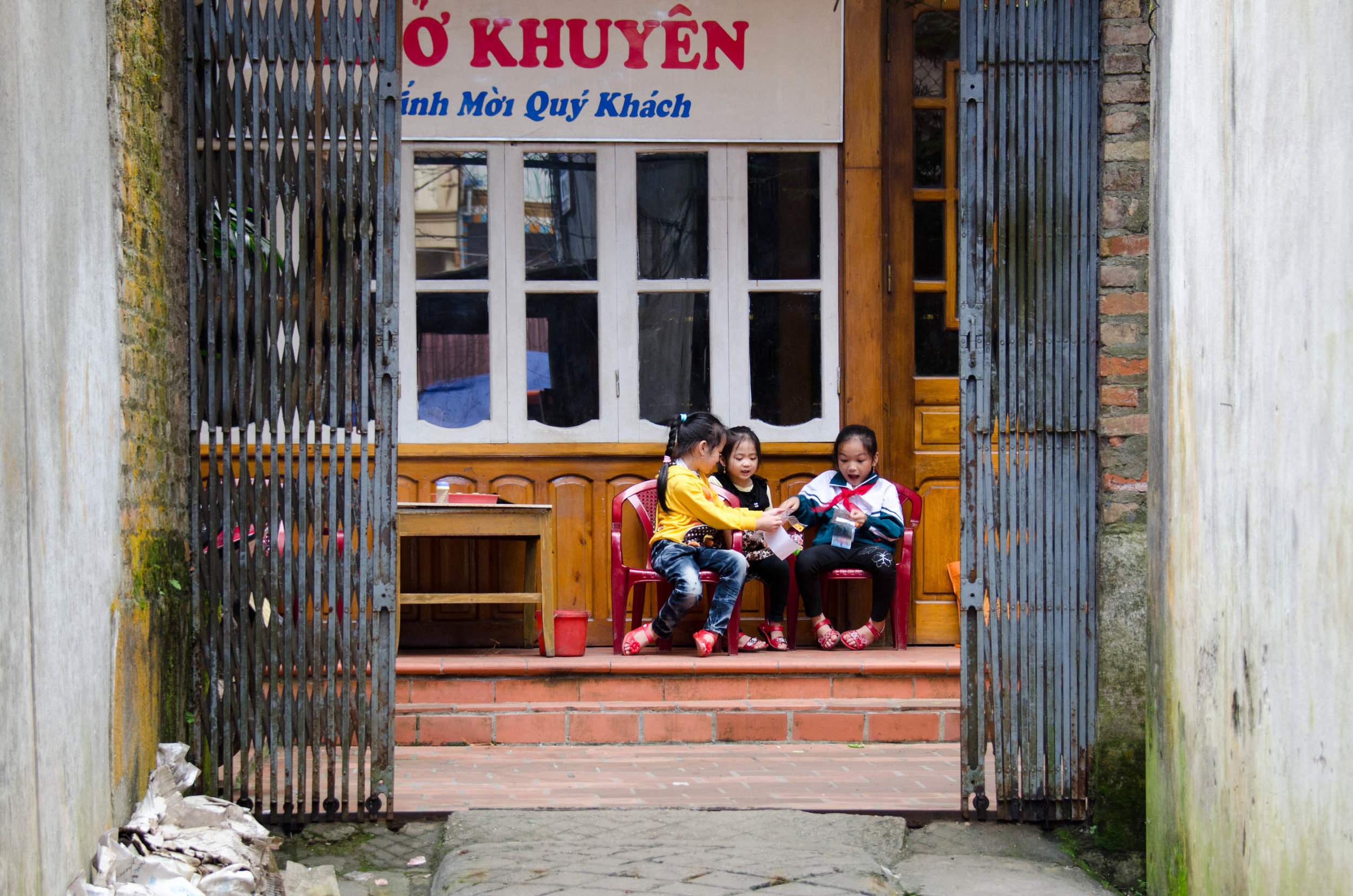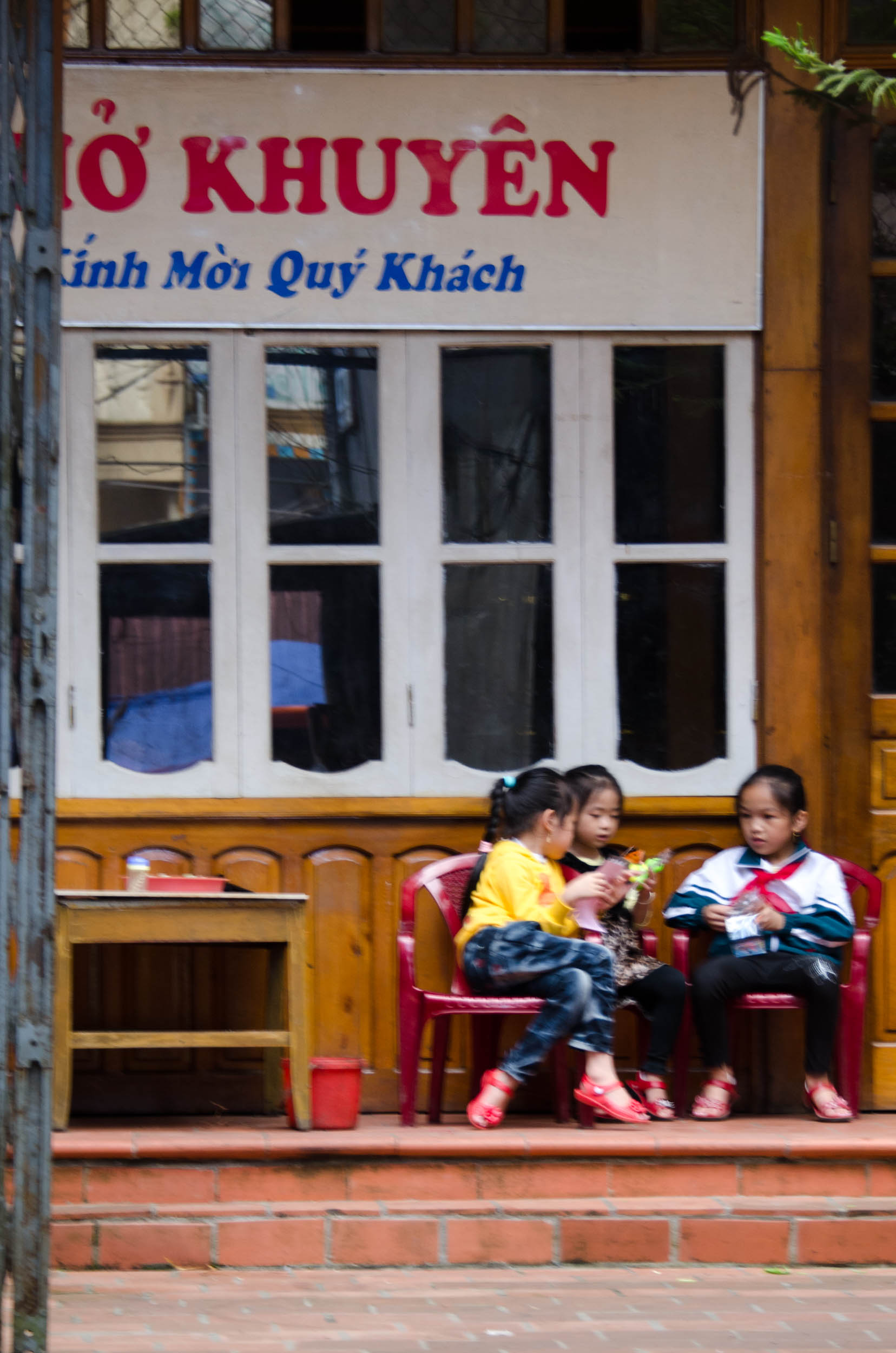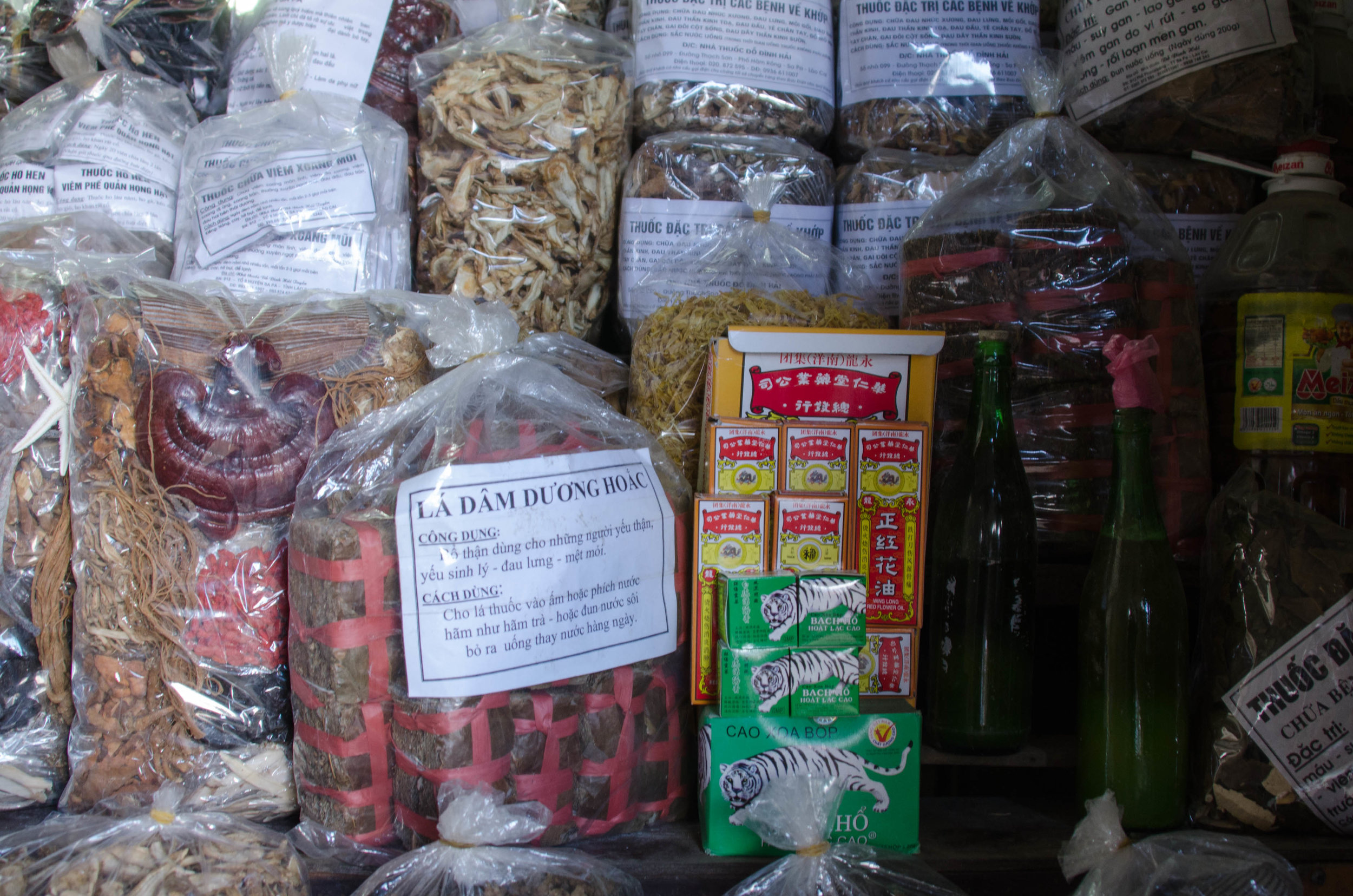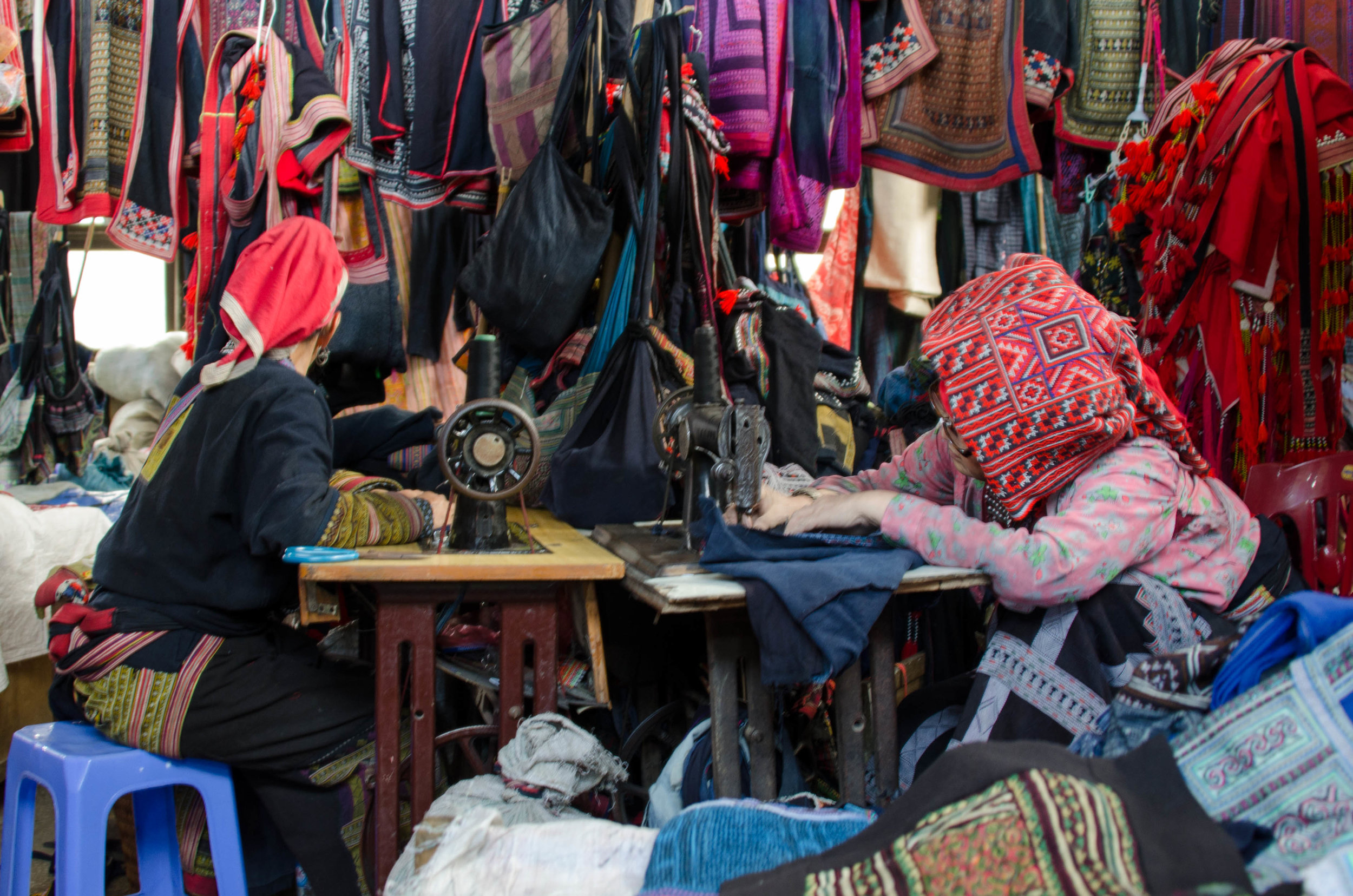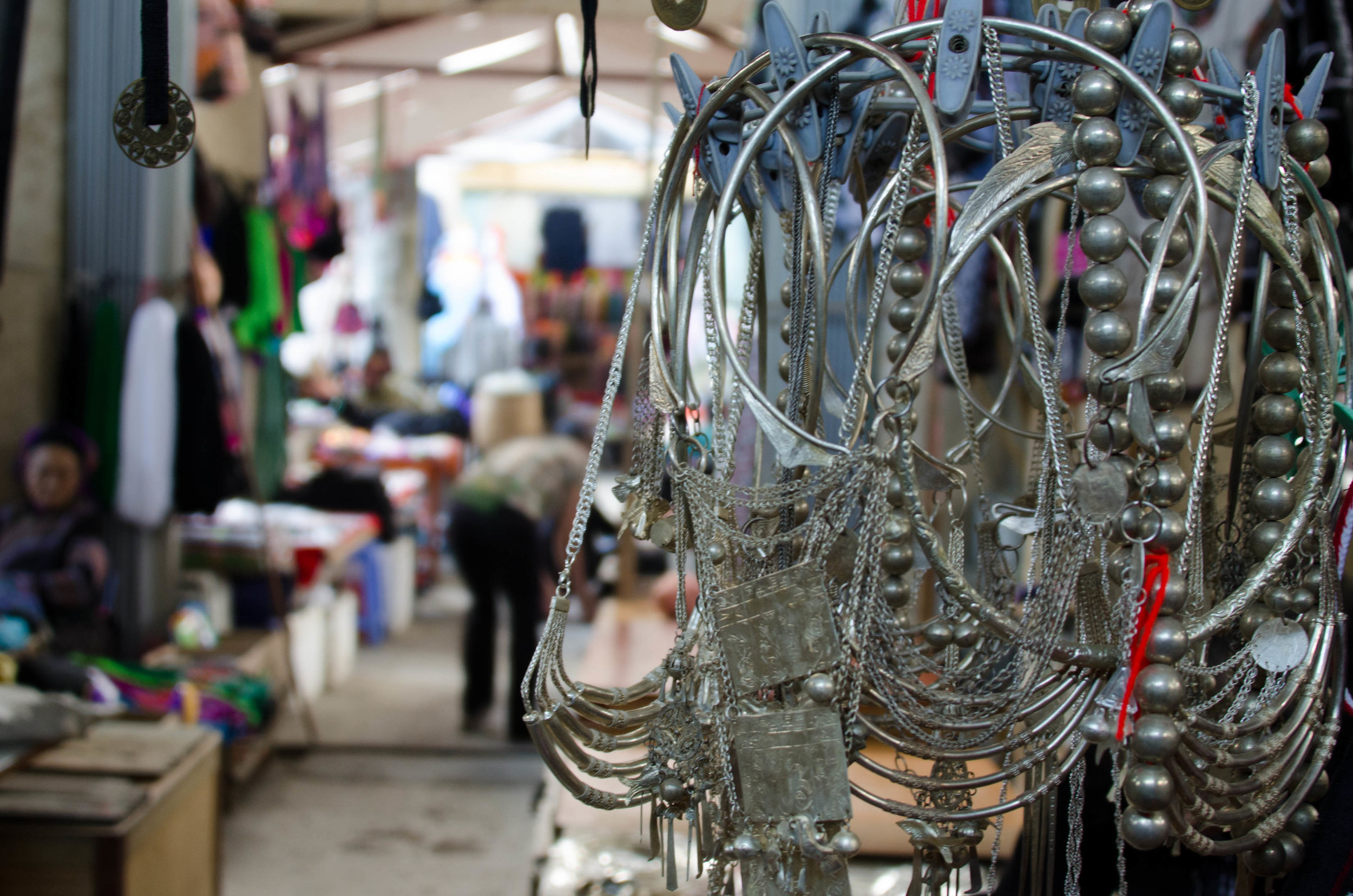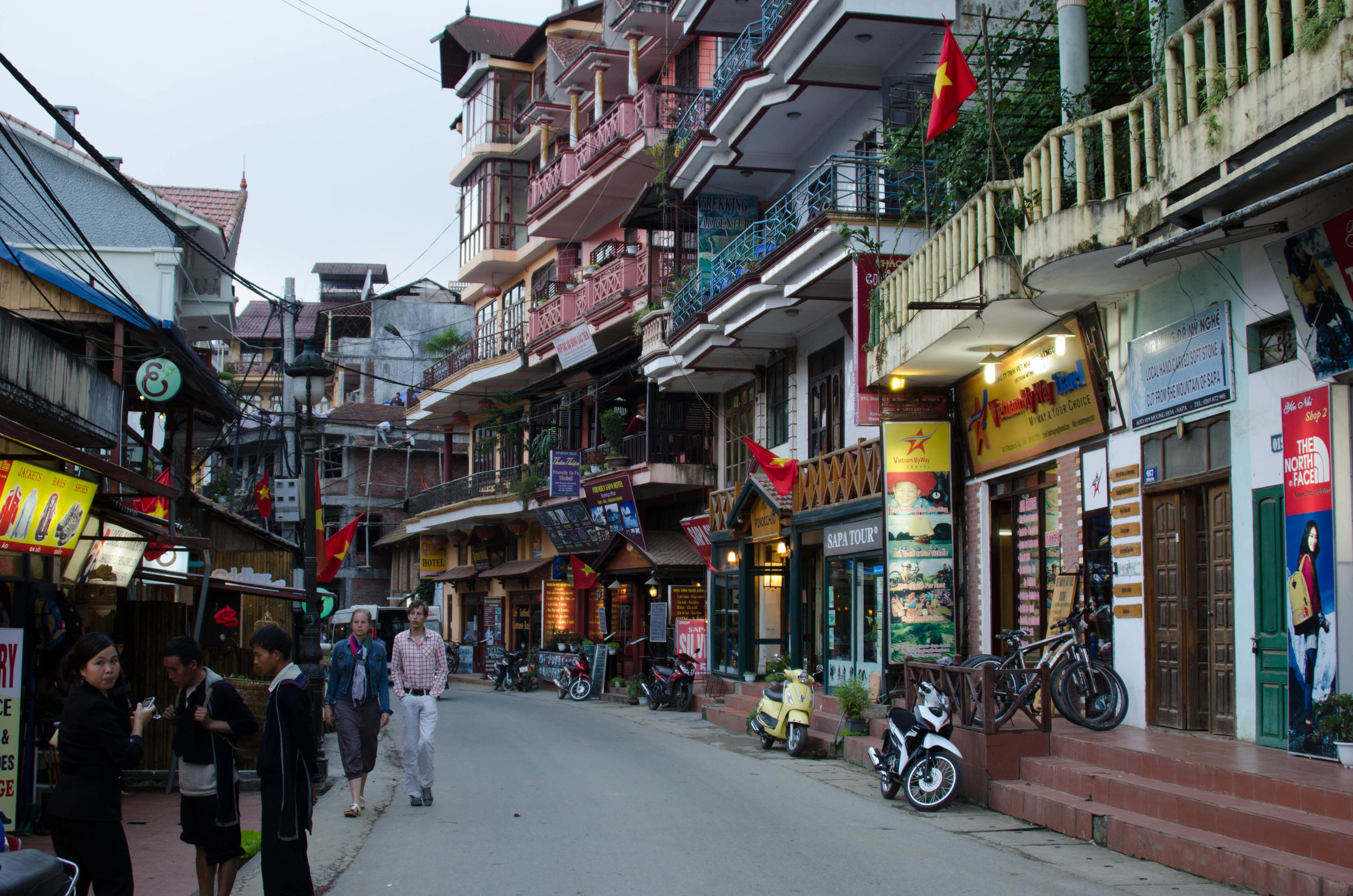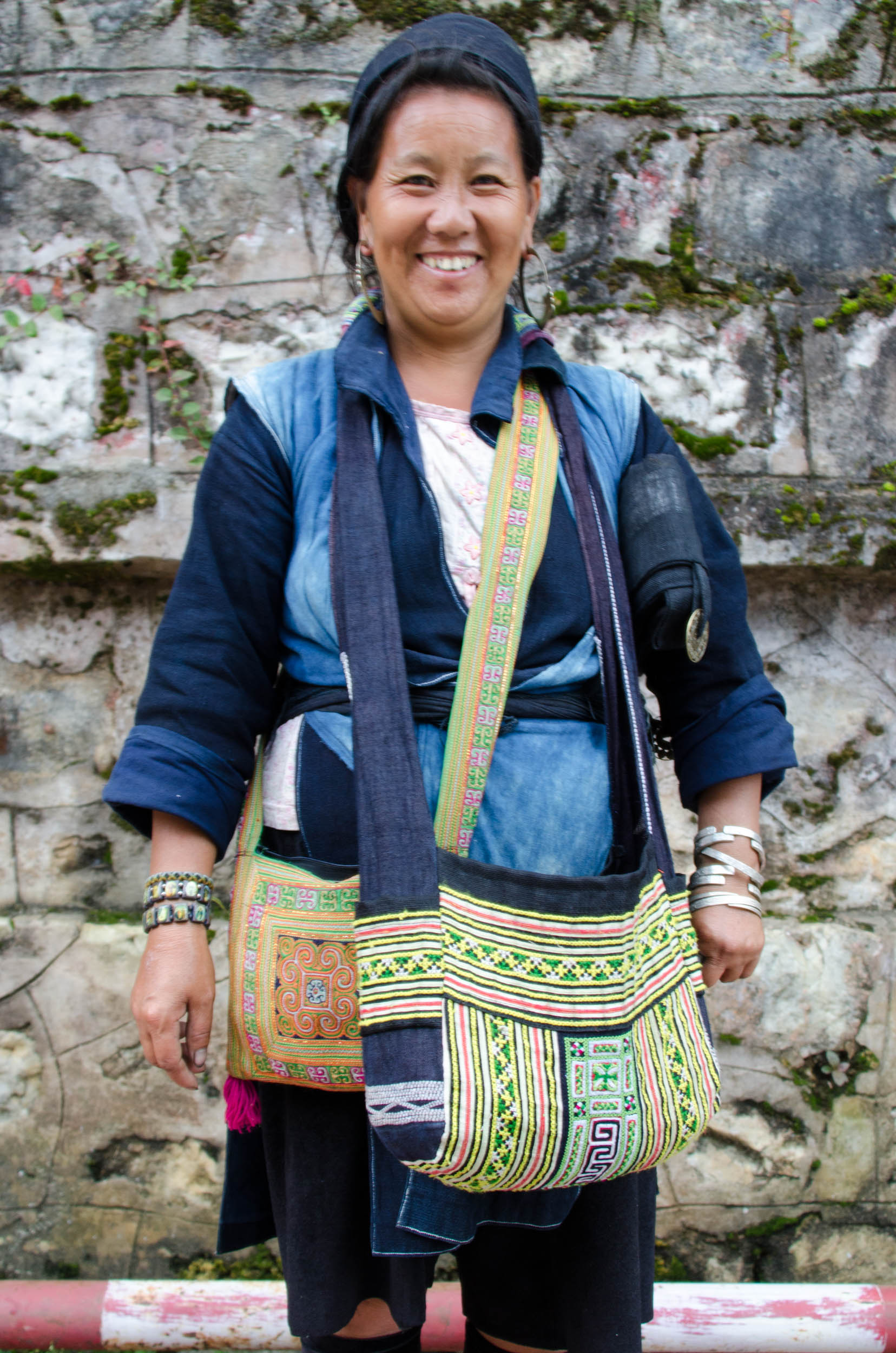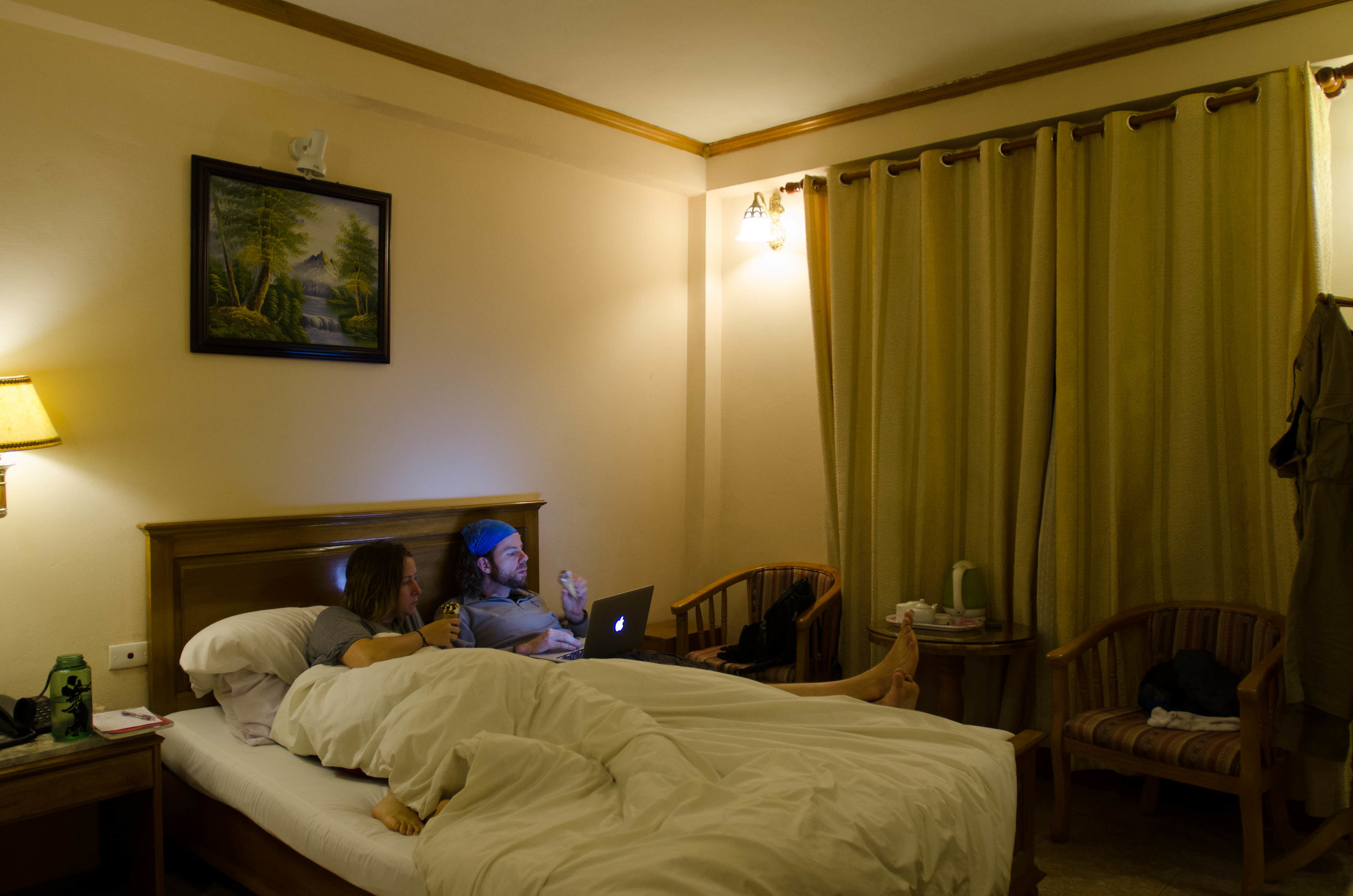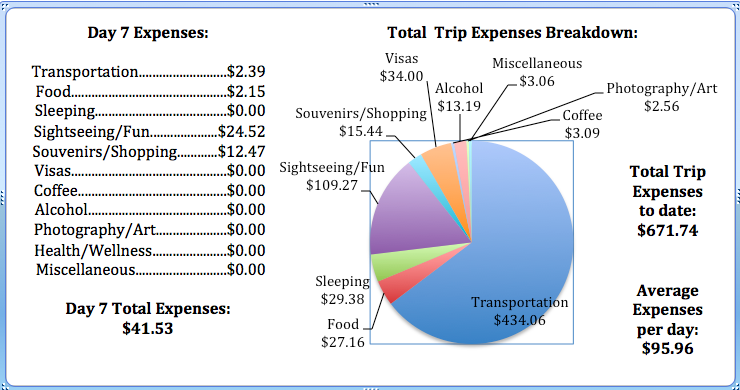I woke up, and as I limped around the home-stay house, I confirmed that breaking in a pair of barefoot running shoes (that I thought would also make great wet trekking shoes) was the worst idea ever. I scraped the last of my Tiger Balm out of the jar and gently massaged it into my calves while we waited for breakfast. Our itinerary said we’d enjoy breakfast with our host family “after sunrise” and I thanked the Sapa stars their definition of sunrise ended at 9:30 AM. We were served, but didn’t eat with our host family (the family we still weren’t exactly certain who they were) and then we took off through terraces, bamboo forests, Giang Ta Chai village, a waterfall, and a suspension bridge.

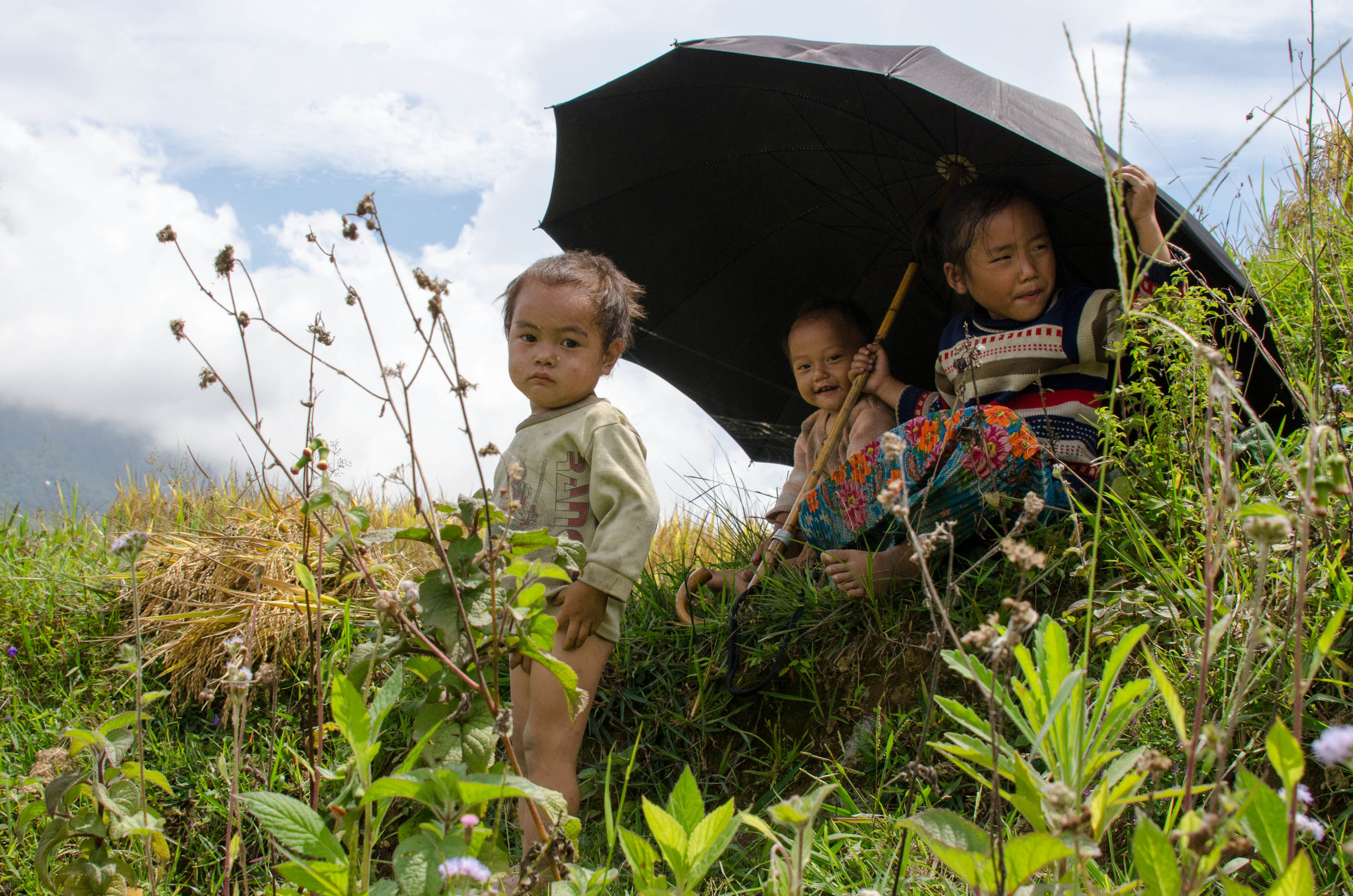
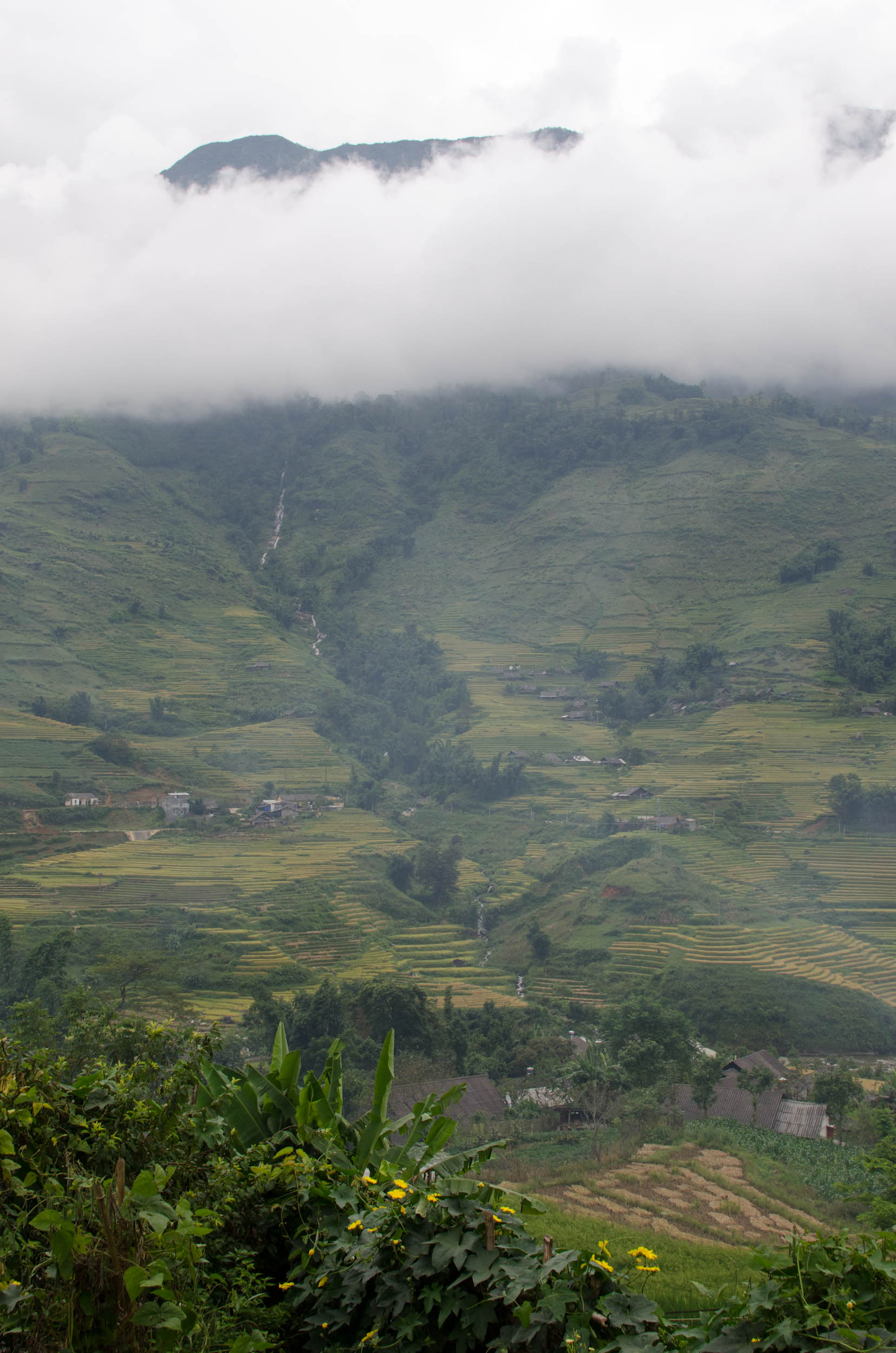
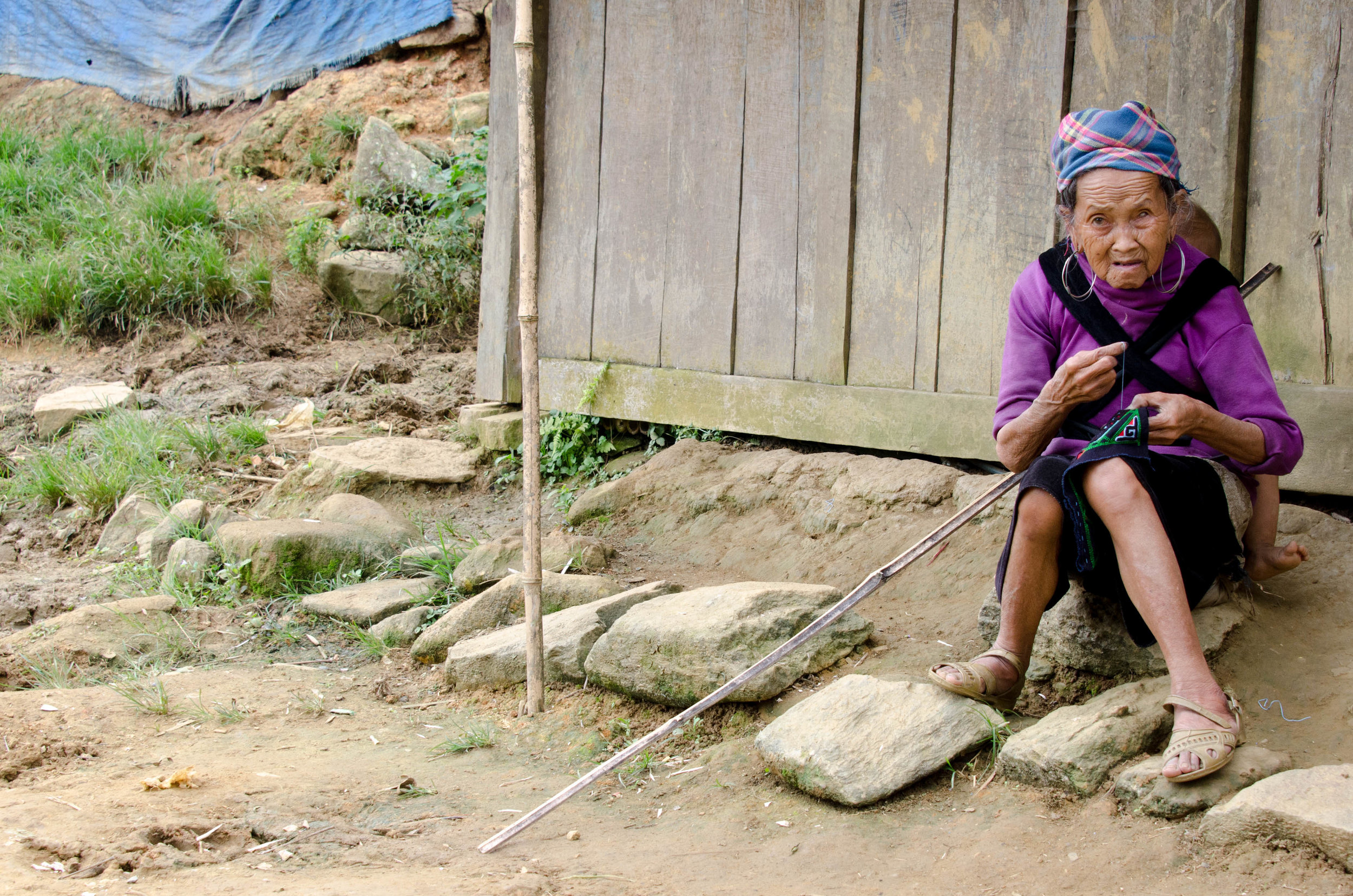
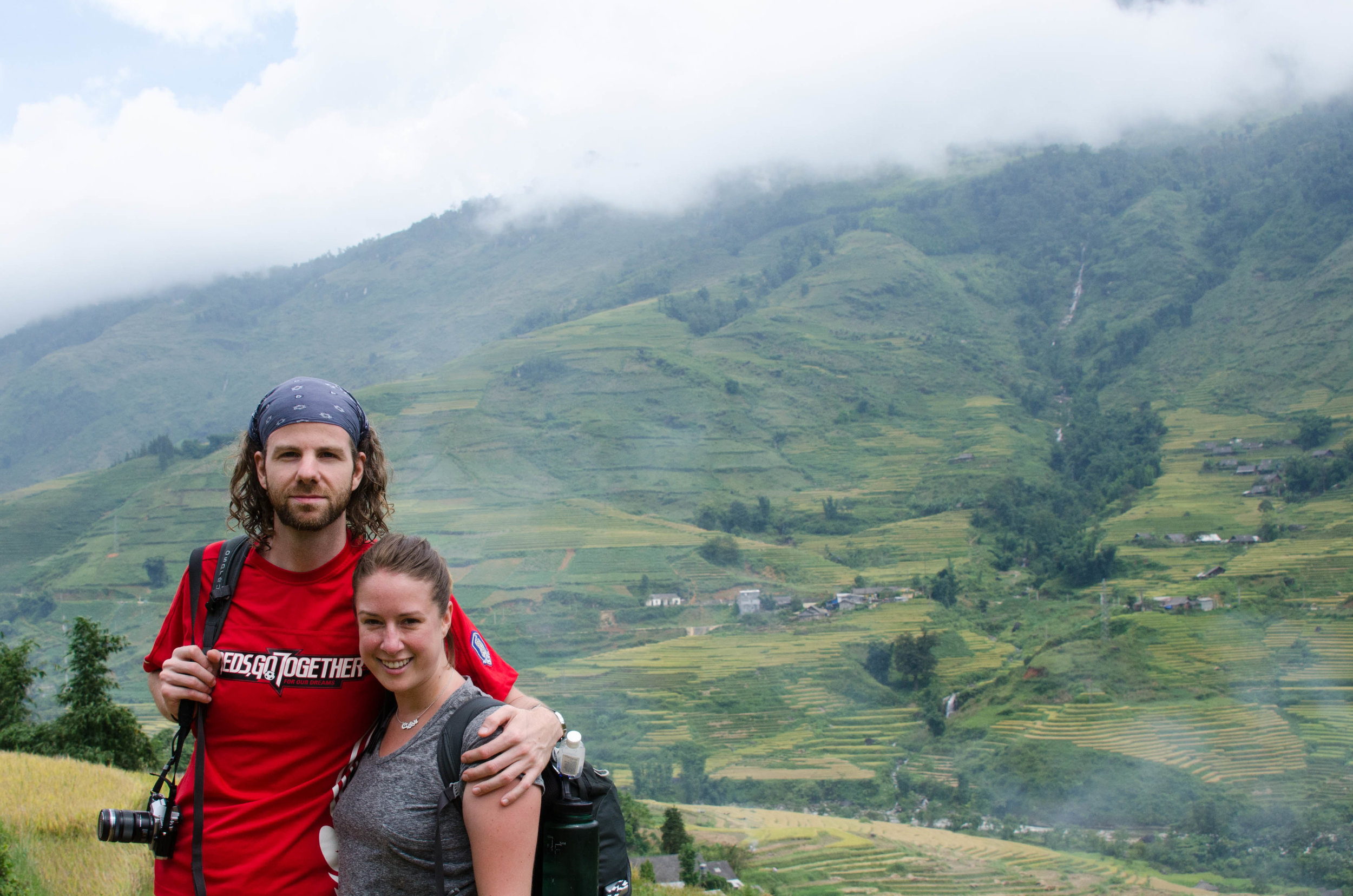

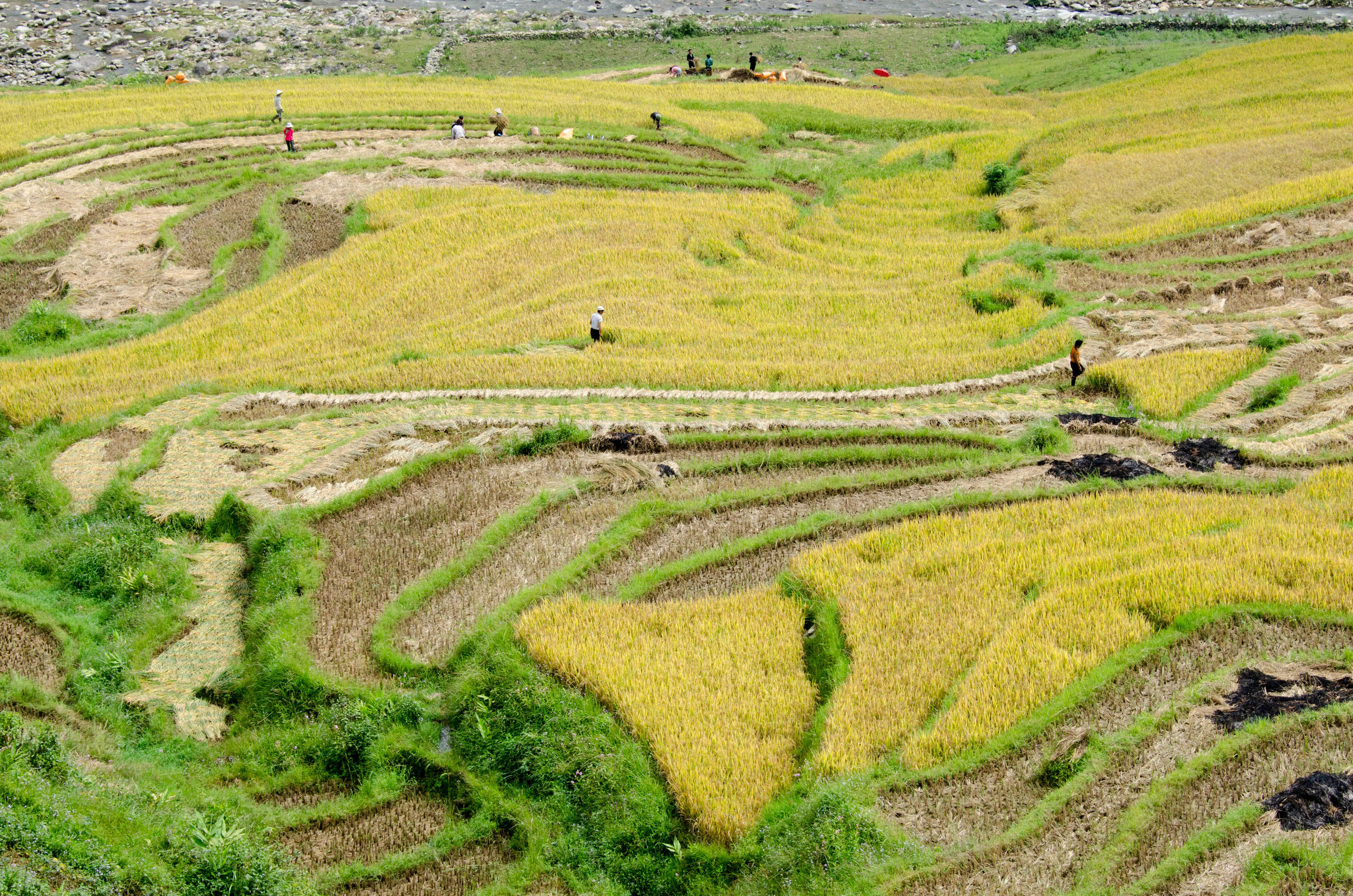
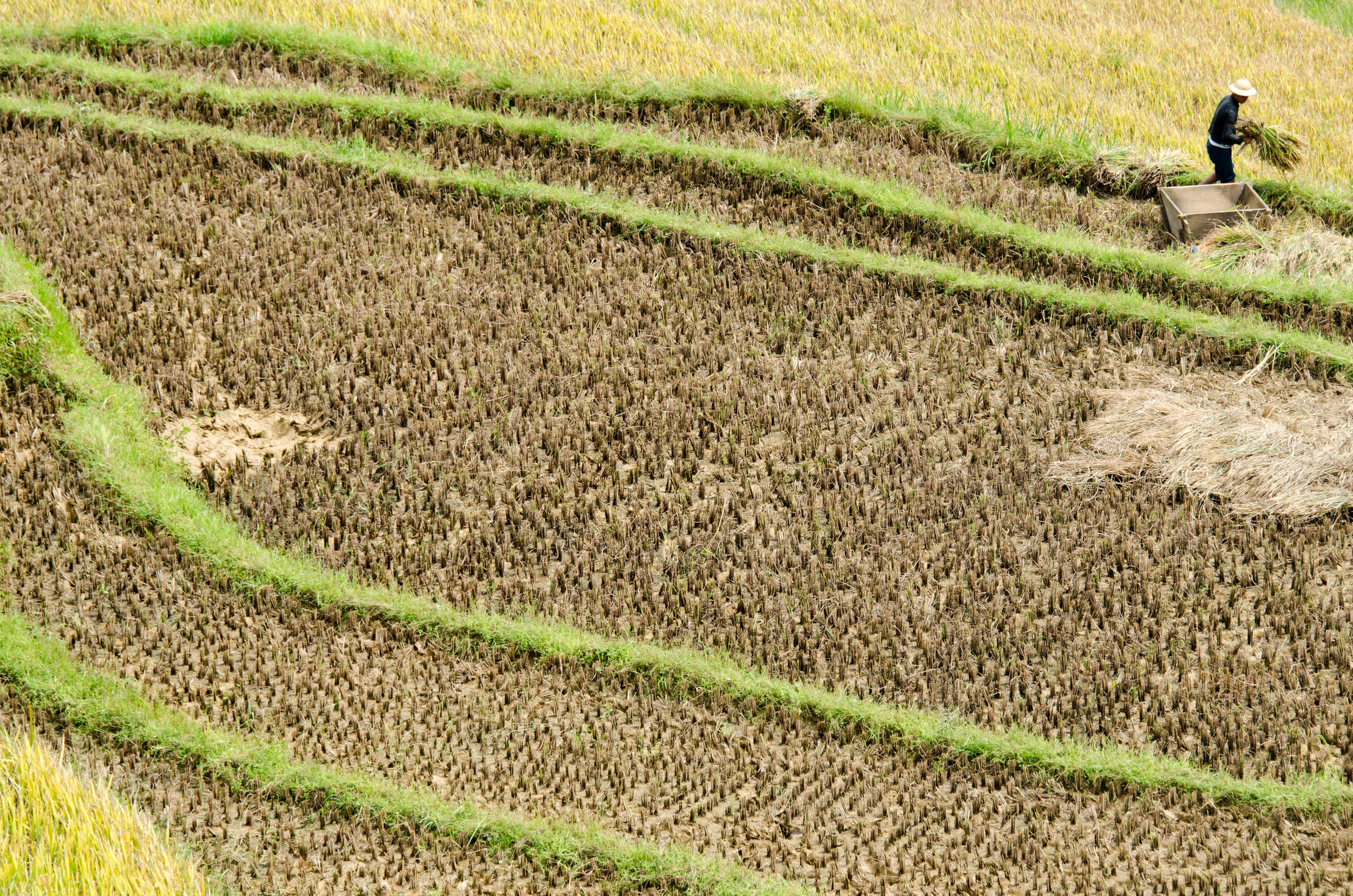
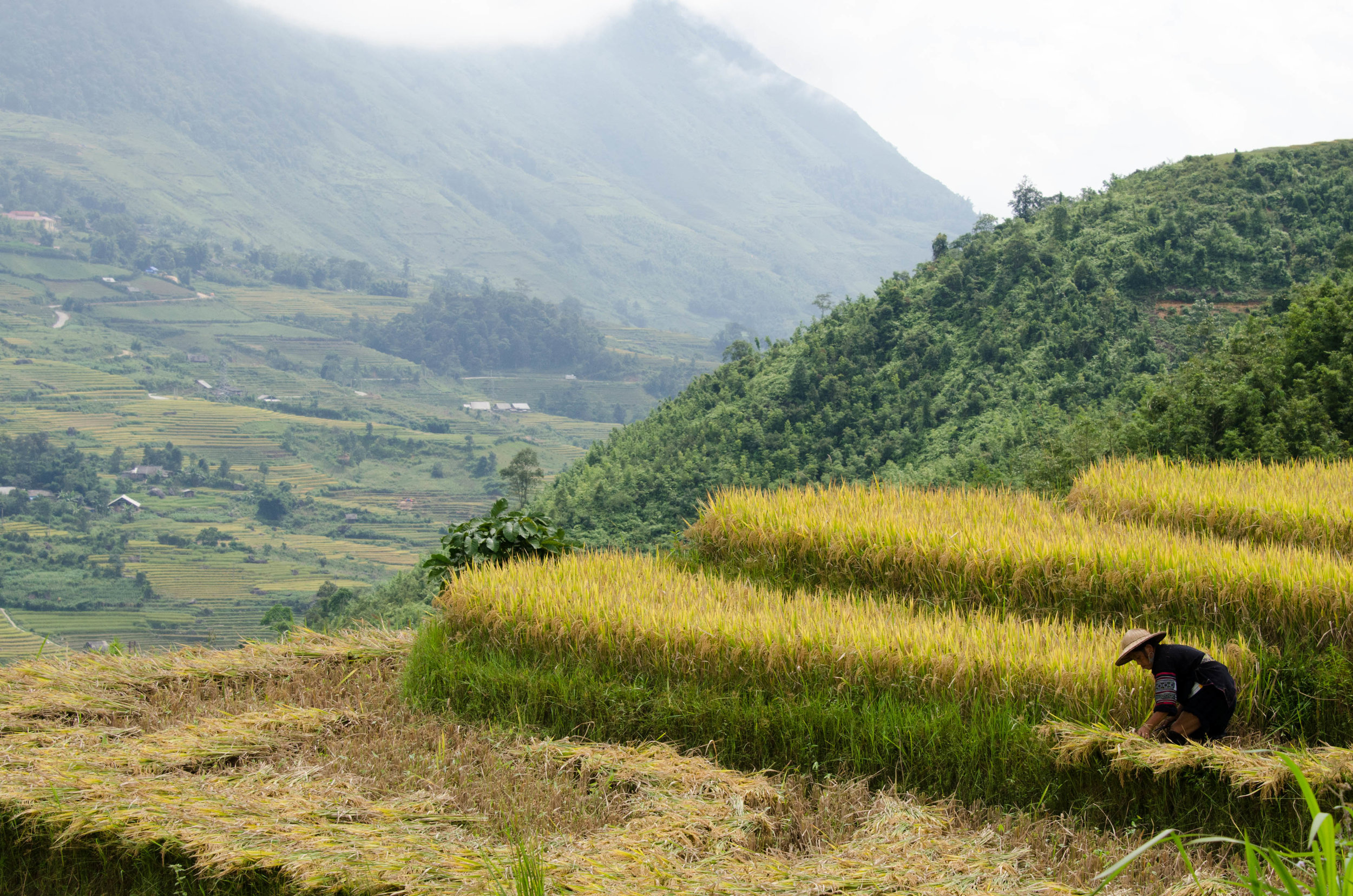
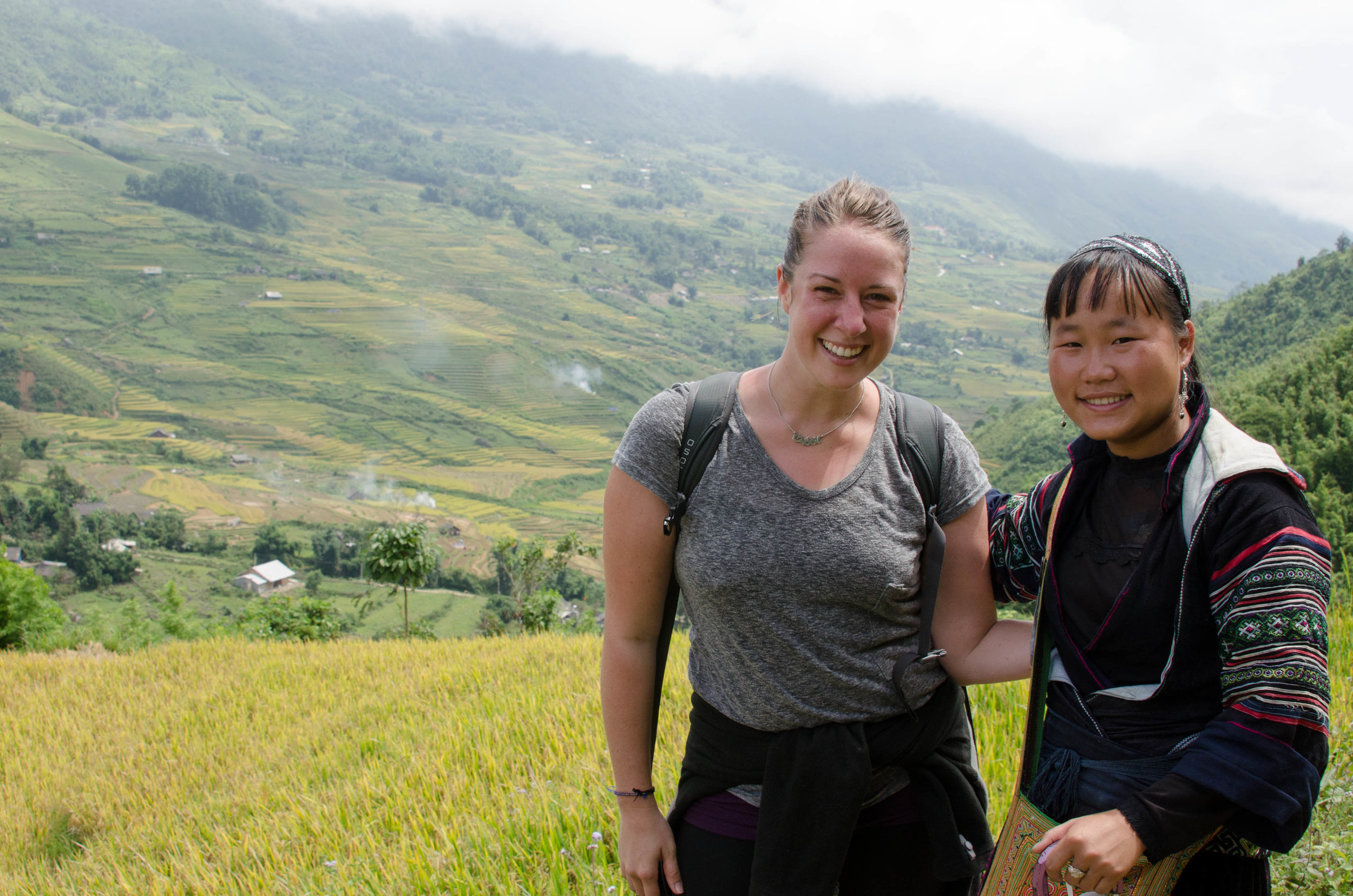
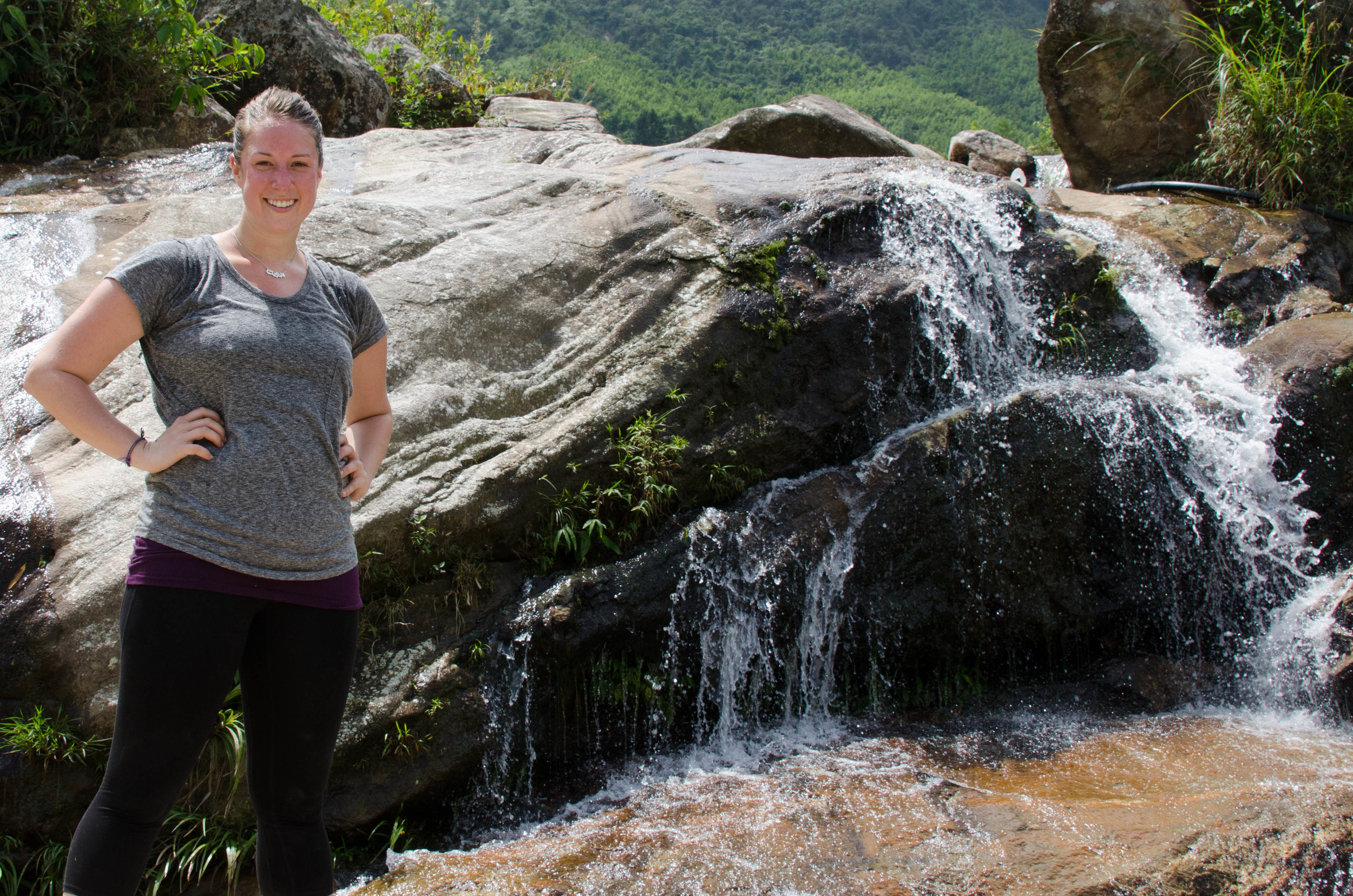
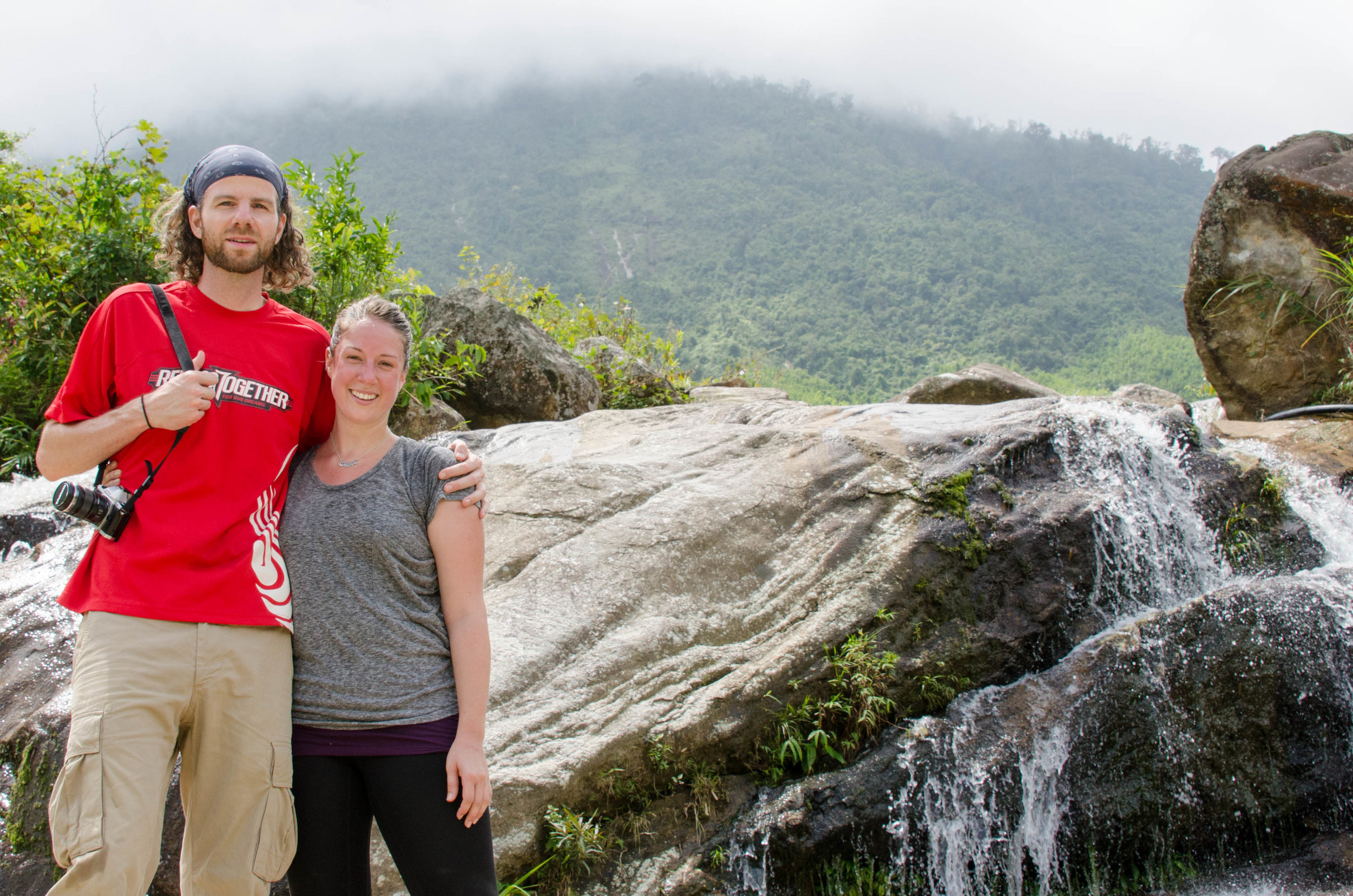
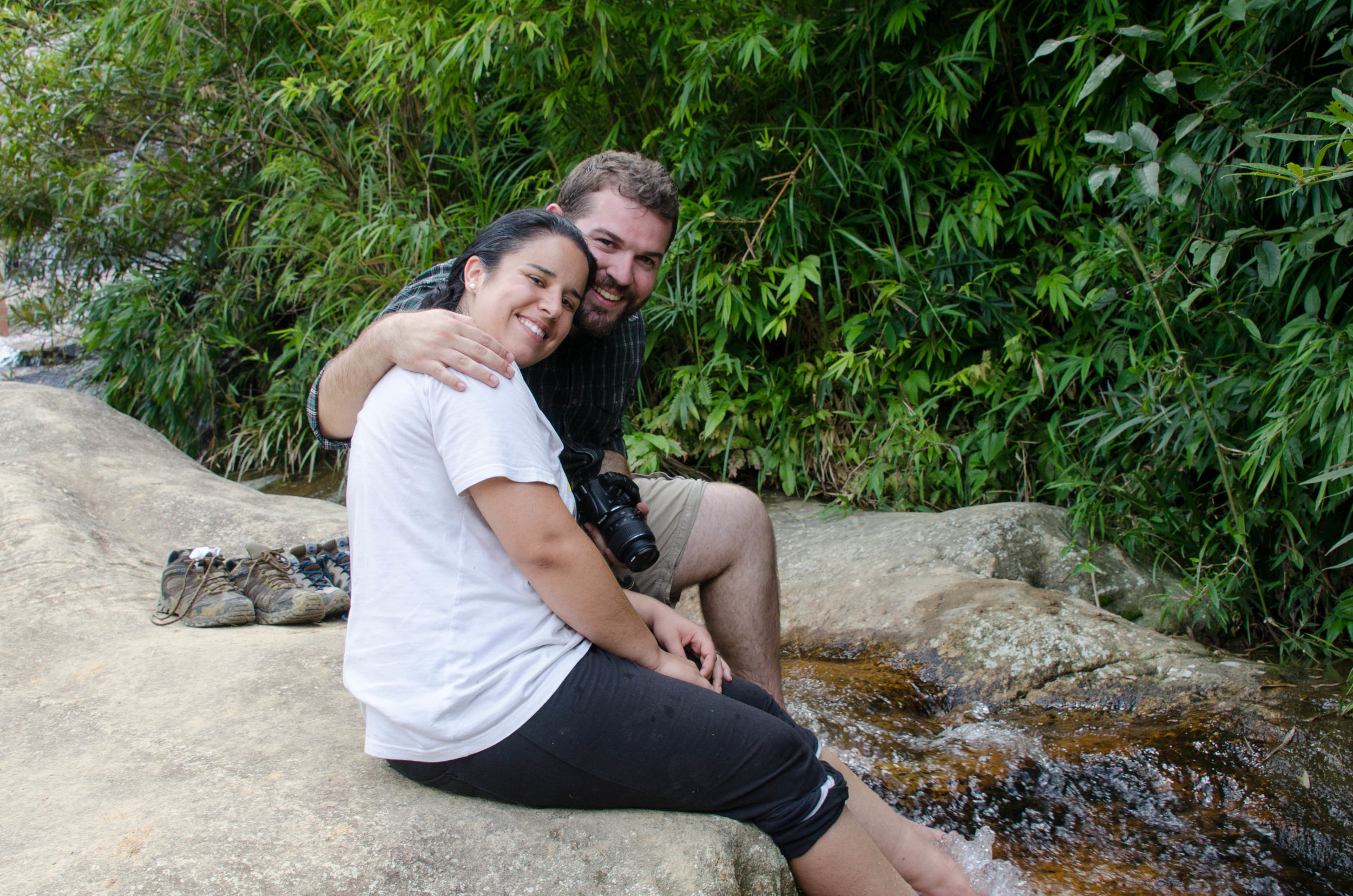
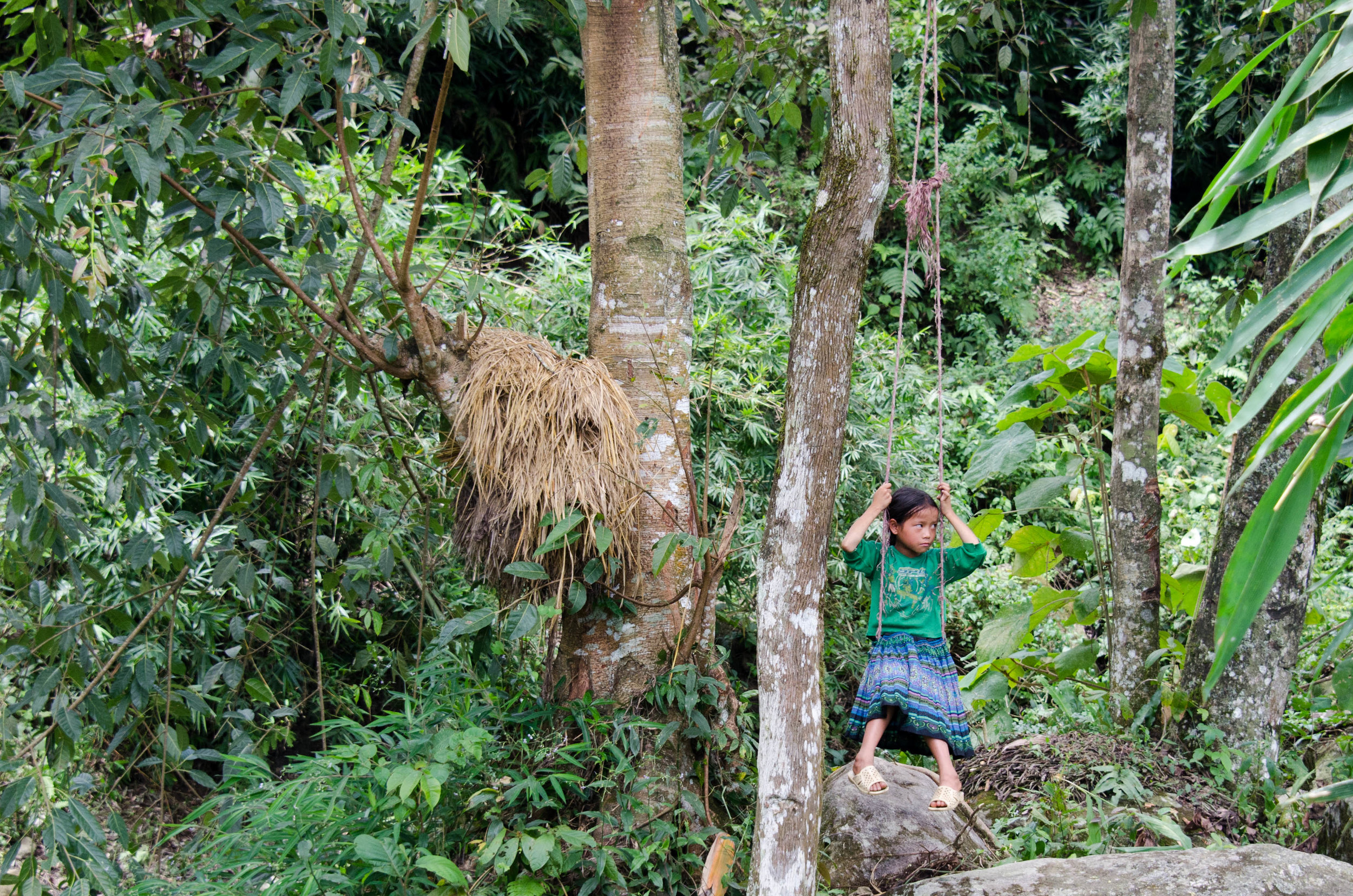
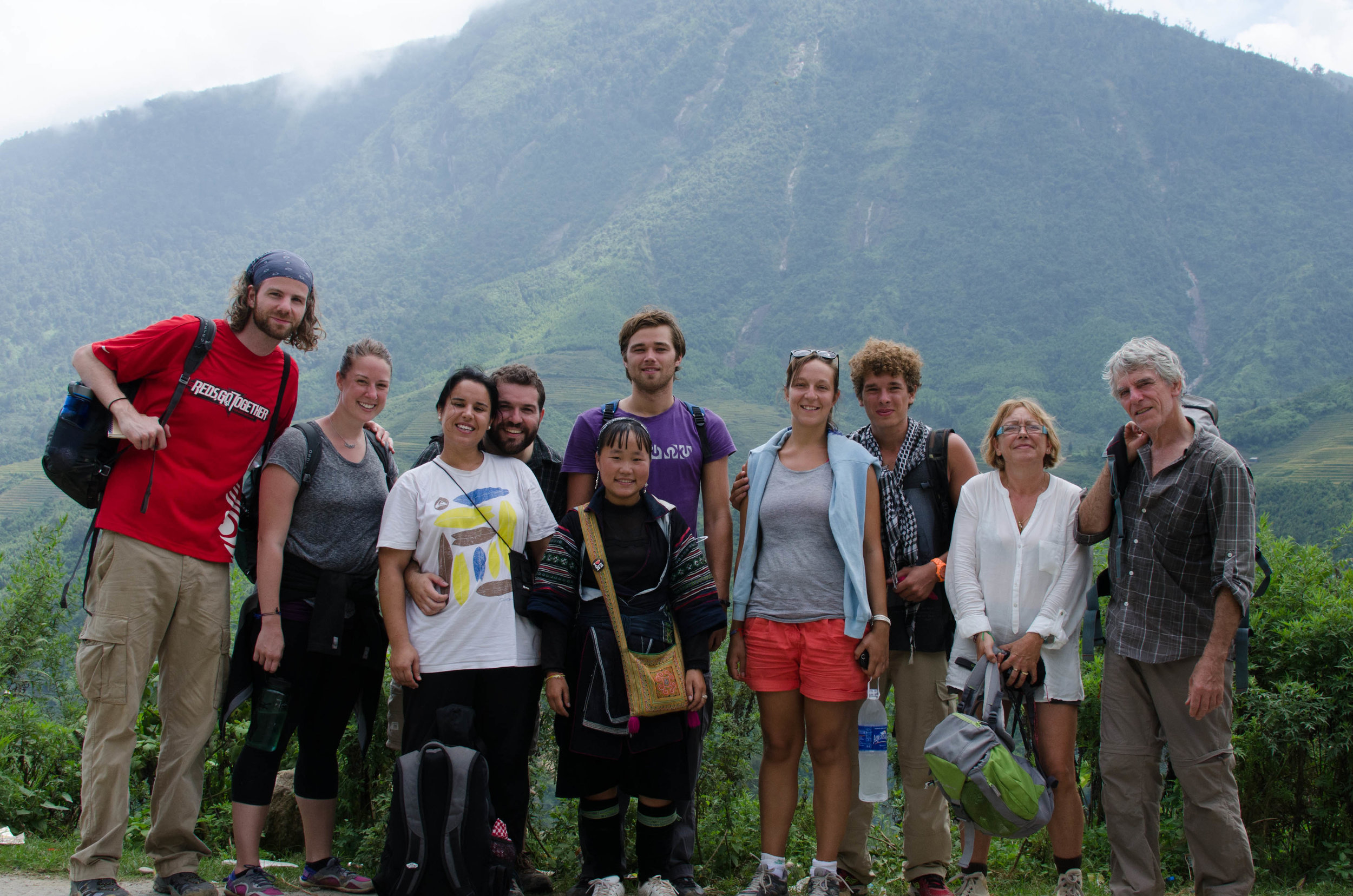
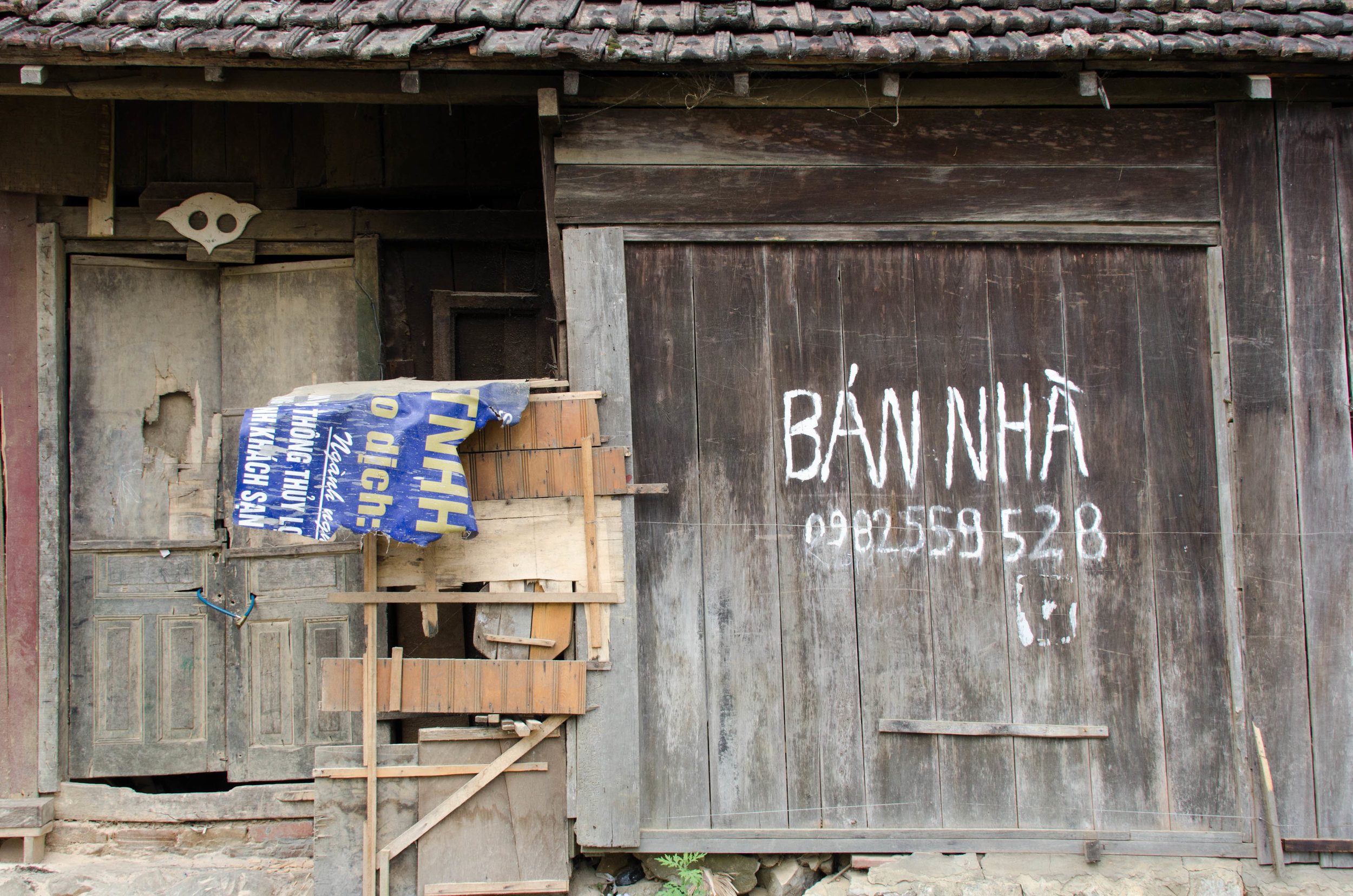
This day of trekking was my favorite. I still wasn’t feeling so hot, but the trekking through terraces and jumping over streams, and sitting with my feet in the water (Genius idea, Tony and Raquel!) felt the most like what I had enjoyed four years ago.
It was a little muddy, a little exhausting, and reminded me of being ten and going out exploring in the woods behind my childhood home.
After lunch, we were picked up by a bus pumping some electronic dance beats and headed back to Sapa’s city center for showers, and last minute minority tribe wears. This got me in trouble. I saw a bag our first day in Cat Cat, but was feeling too badly to bargain it down to a reasonable price. I didn’t even stop to ask how much it was, just looked long enough to know it was just different enough from all of the other bags that I liked it a lot. Because I didn’t get it our first day, I was on a mission to find one similar on our last day.
This didn’t happen. My next (not so) brilliant idea was to get another style (with the embroidery and colors I wanted) and take it to a tailor in Hoi An and have them turn it into the style of bag I wanted. Perfect? Right? Until I worried that maybe I didn’t have enough material for the style of bag I liked, and continued with (not so) brilliant ideas to buy a pillowcase (with the embroidery and colors I wanted) and even a belt (with the embroidery and colors I wanted) to ensure that I would have enough fabric for a bag. I spent $12.00 on this mess and later found a different bag entirely (of better quality for $15.00) I simply HAD to have in Hanoi. GAH!
Lesson #5 learned from traveling around the world: Seriously. Don’t buy it unless it’s exactly what you want. Seriously. You’ll find another bag you love soon, I promise.
After I spent too much on things I wasn’t going to want in the end, we got some Tiger Balm, showers, dinner, and hopped on the shuttle bus to catch our overnight bus back to Hanoi. Our bus driver hit a motorcyclist. We waited on the bus uneasily as we watched the poor driver try to call for help while not moving in the middle of the road, our driver busy picking up pieces of the bus that broke off upon contact. Fifteen minutes or so later, the motorcyclist got up (or more accurately, he was pulled to his feet by our bus driver) everyone cleared out of the intersection, we waited a bit longer, and then we were on the road again. On average, something like 30 people die daily in traffic related accidents in Vietnam. Not halfway through our trip here, it’s easy to see why.
As if that wasn’t enough fun for one bus ride, I started feeling poorly again. Mostly, I think due to the anxiety of being on a bus with a crazy driver and 11 more hours to go. I was relieved when we pulled into a rest stop, hoping a trip to the bathroom would help. It didn’t. The “bathroom” consisted of a concrete wall separating the men from the women. A trough sat a little deeper closer to the wall, behind a row of bricks that were lined up for women to stand on as they (we) squat down to take care of business. side by side.
Modesty is simply something you have to forget about in situations such as these. At least I wasn’t wearing a romper (without a bra) so I wasn’t completely vulnerable. (When attempting to poop in public, it’s better not to be naked.) I gritted my teeth, nodded to the Vietnamese woman next to me, and marched up to the bricks and squatted. Like a boss. Only not really, because of the two numbers that I needed to take care of to make my stomach feel better, I simply couldn’t attend to both with an audience. I climbed back on the bus and immediately into a fetal position for the remaining six or so hours before again, sprinting to a bathroom while Andrew checked us into a room in Hanoi.
